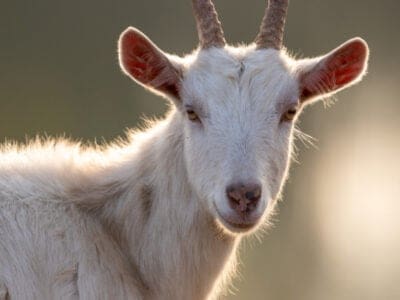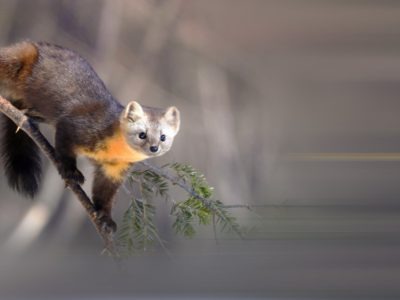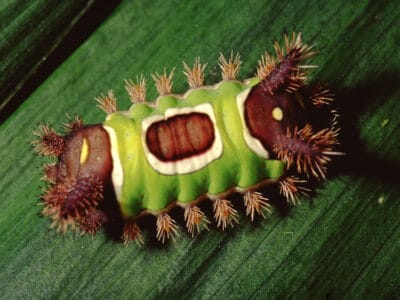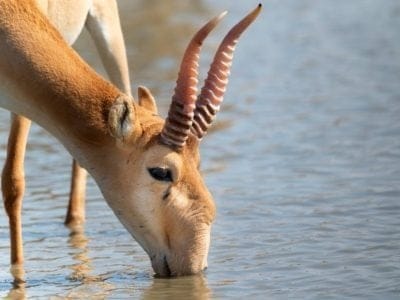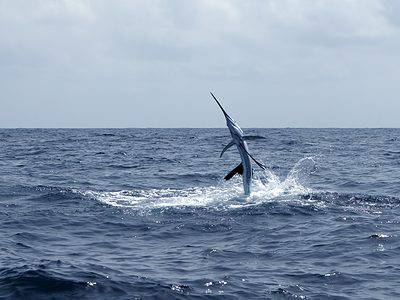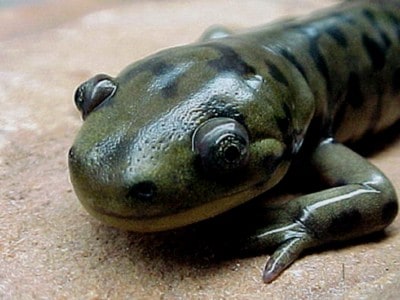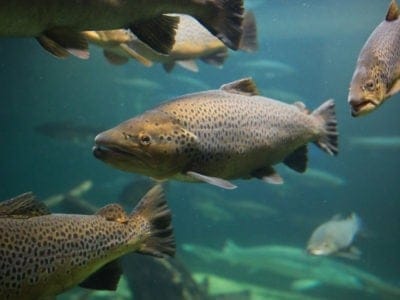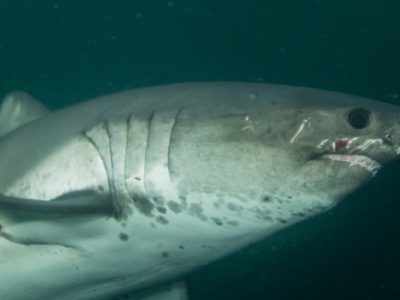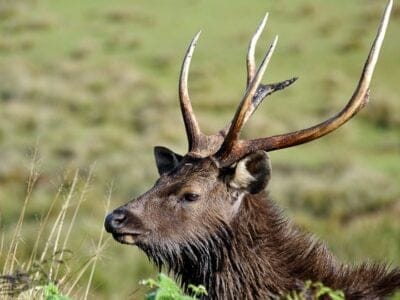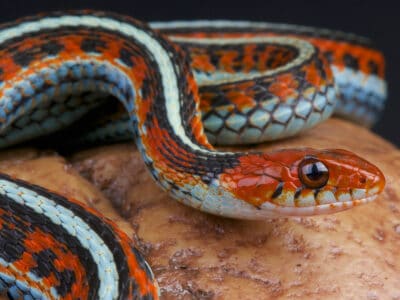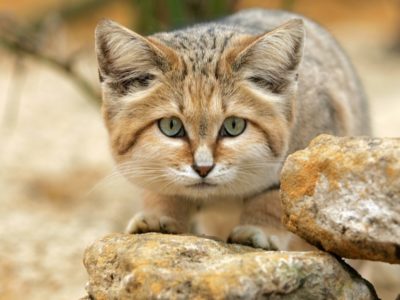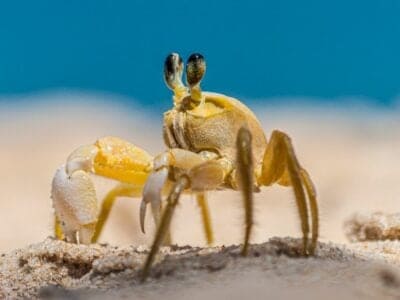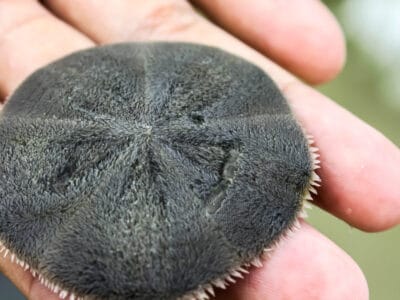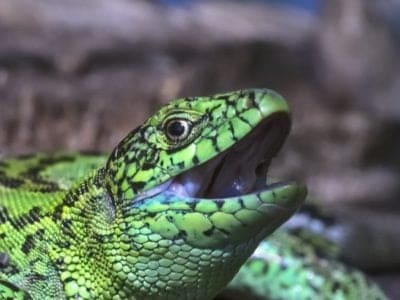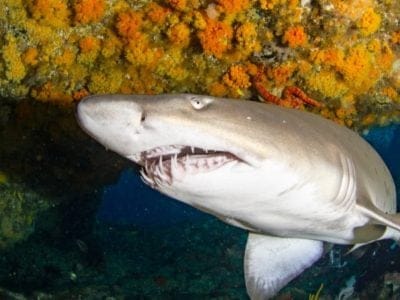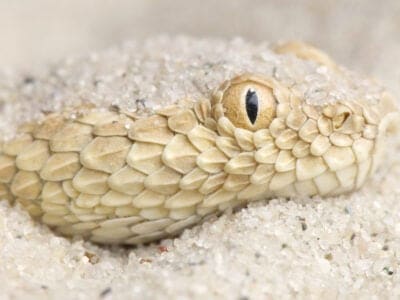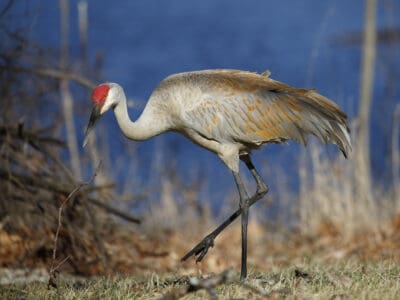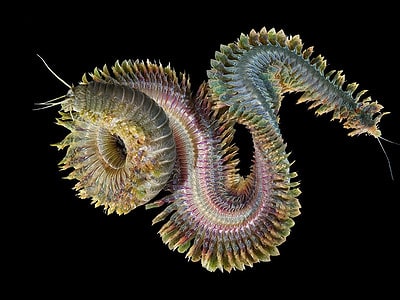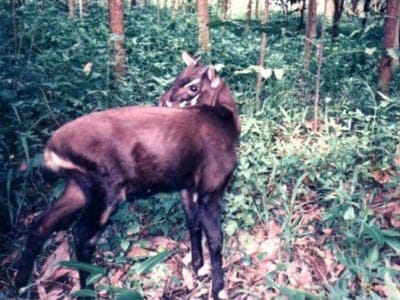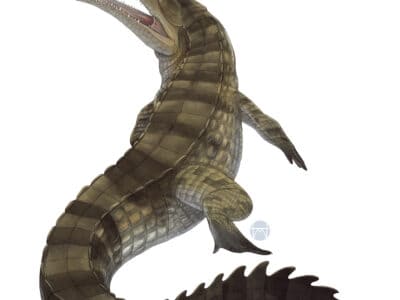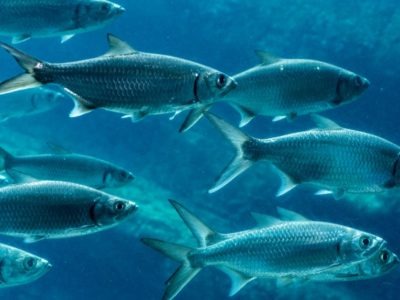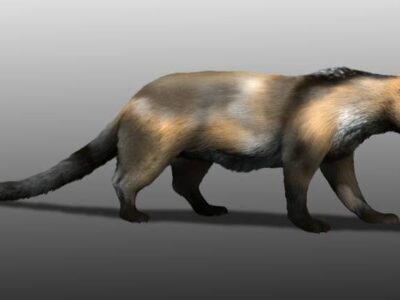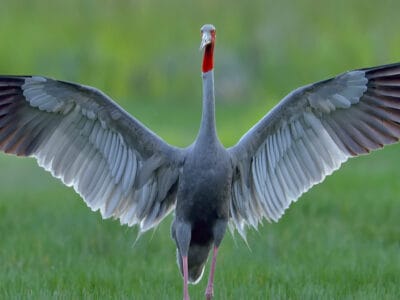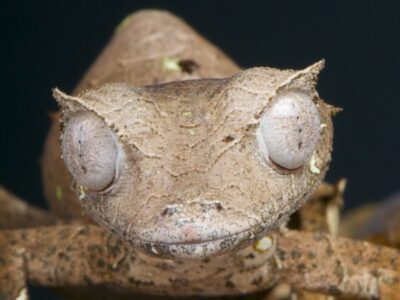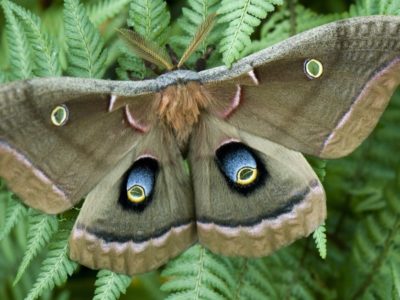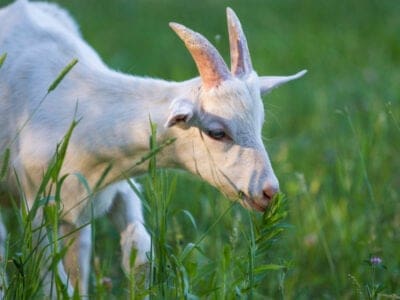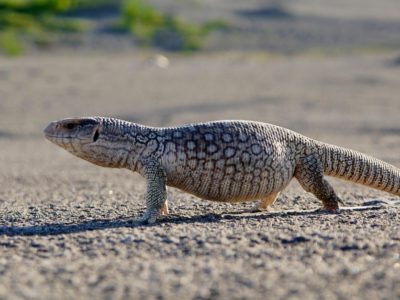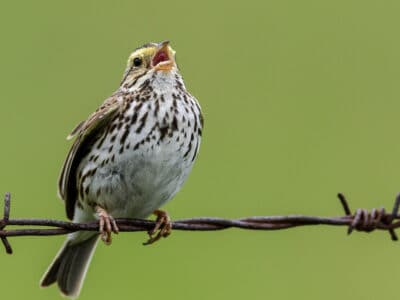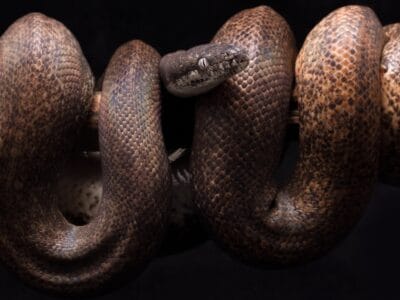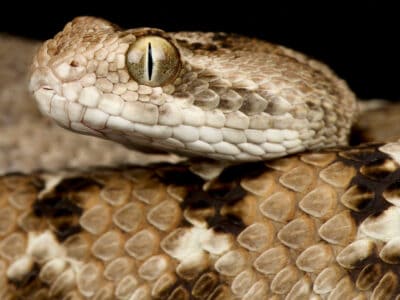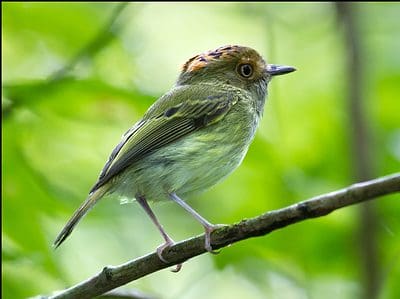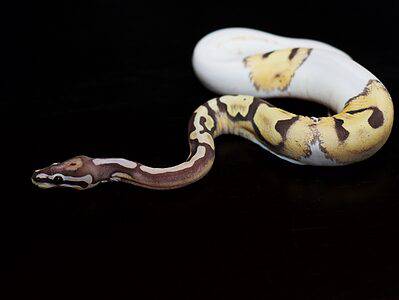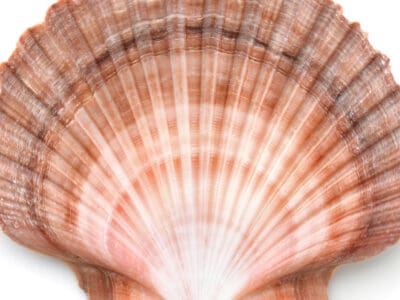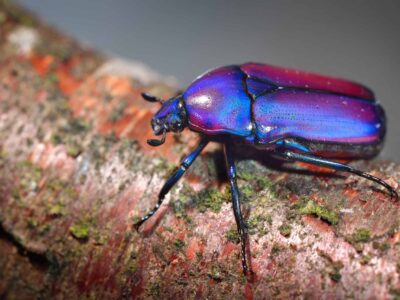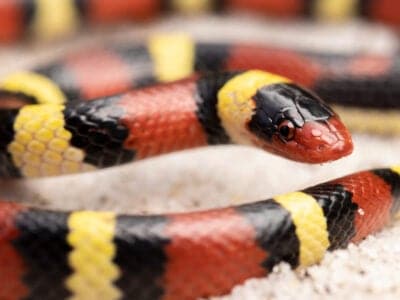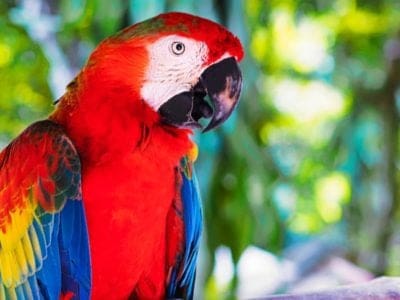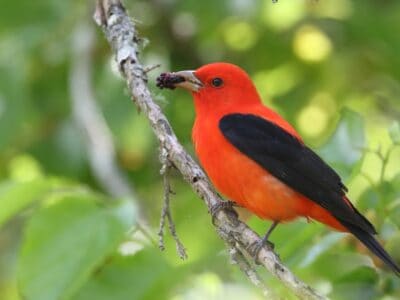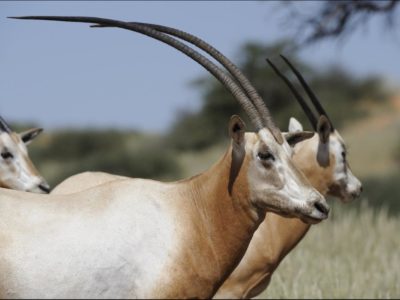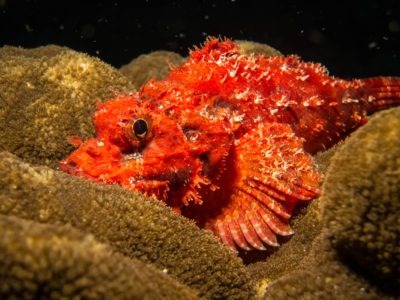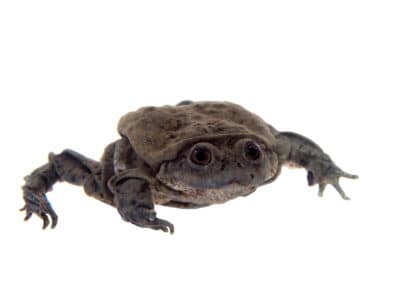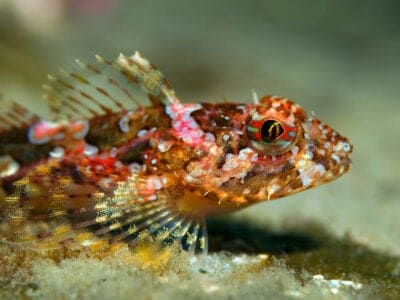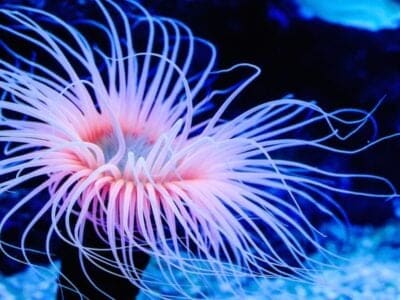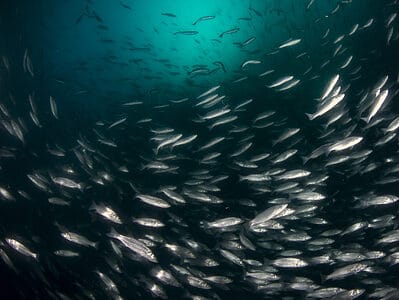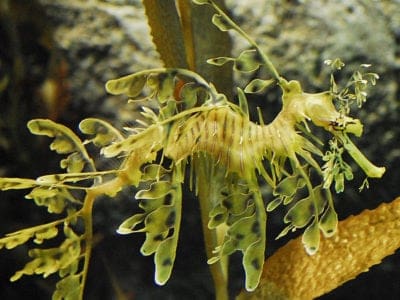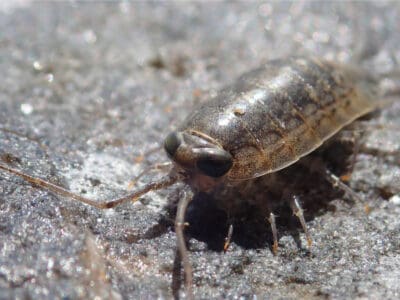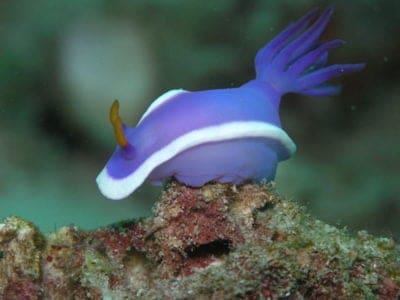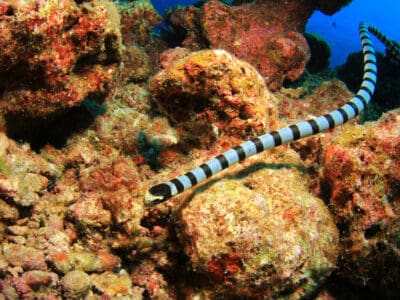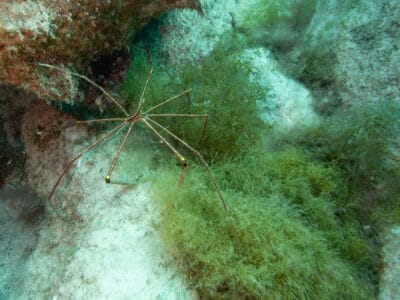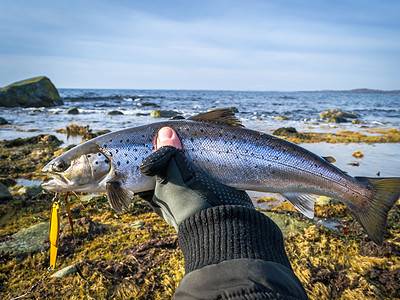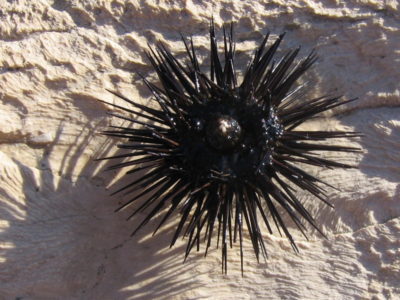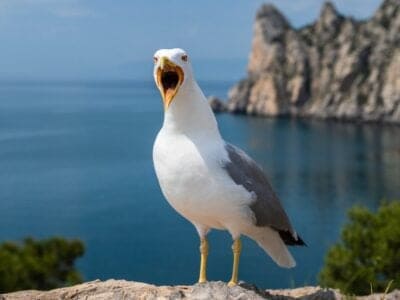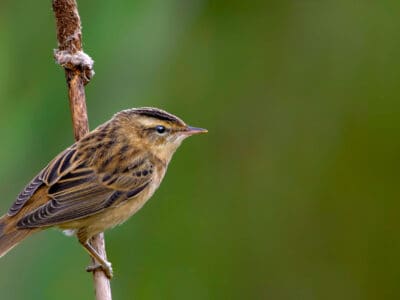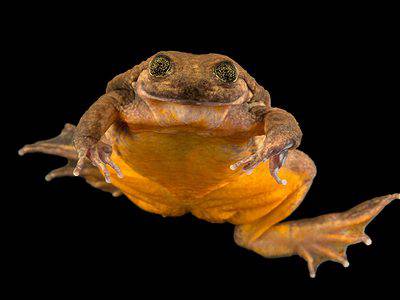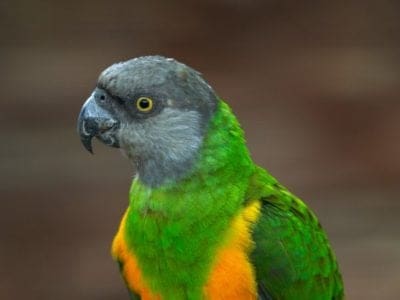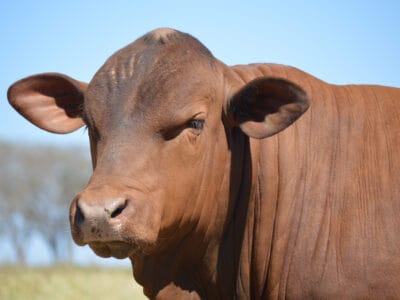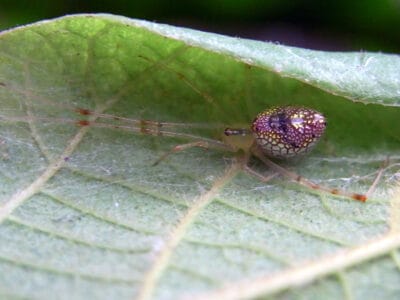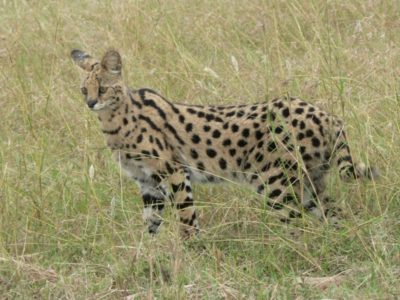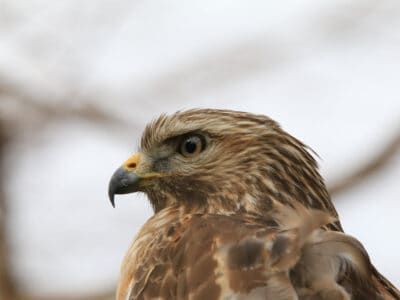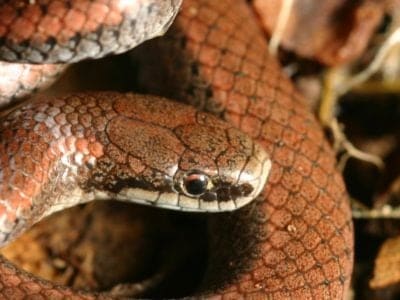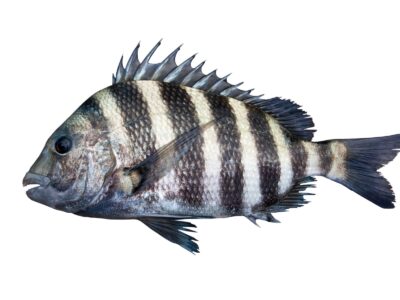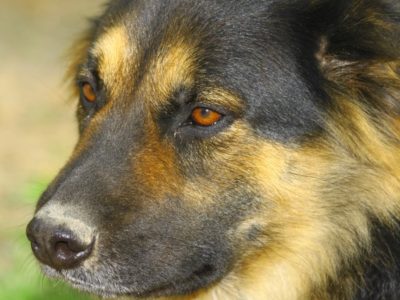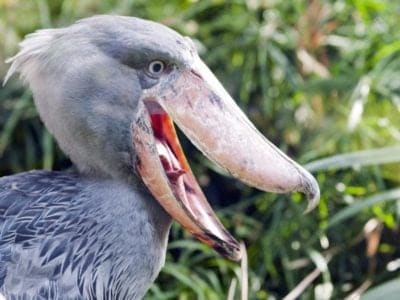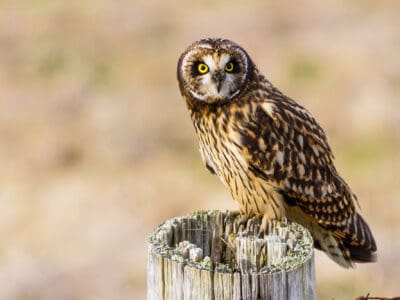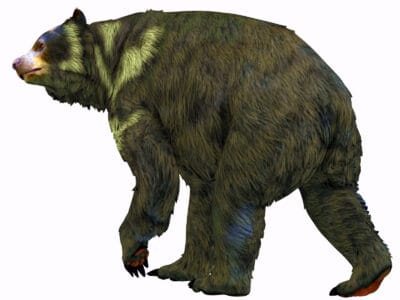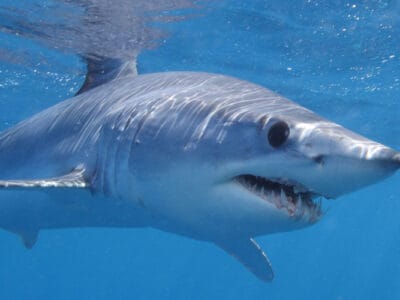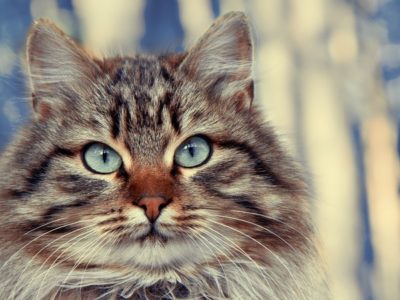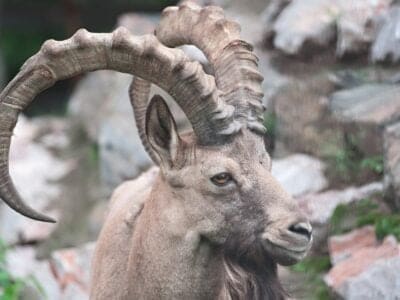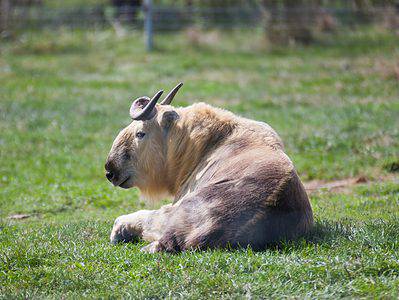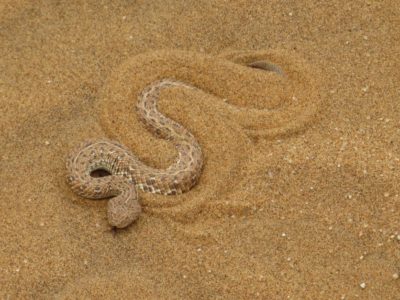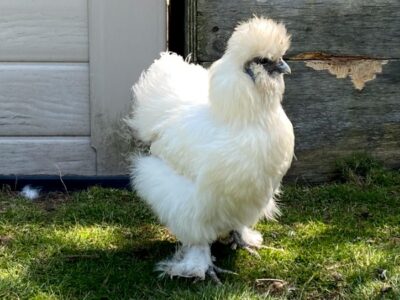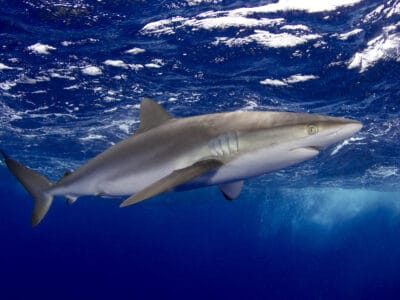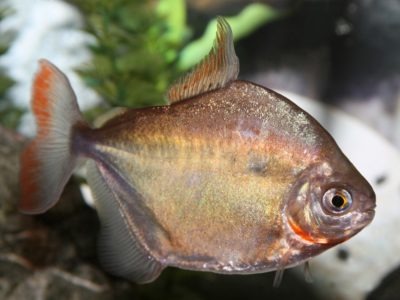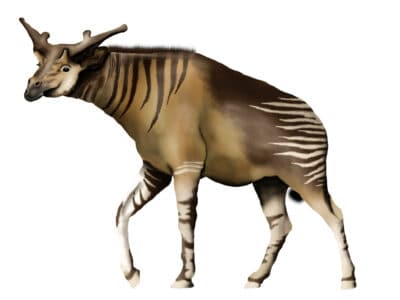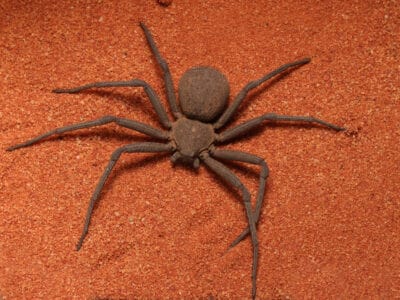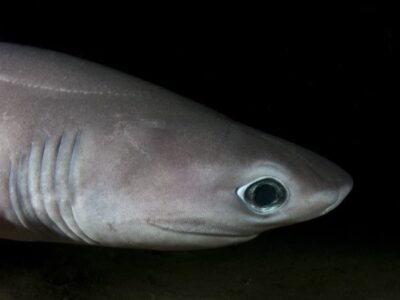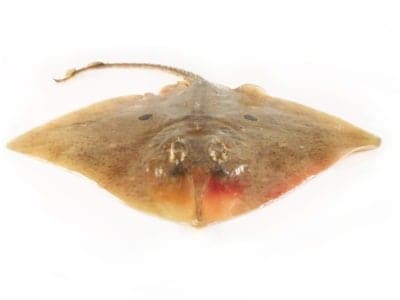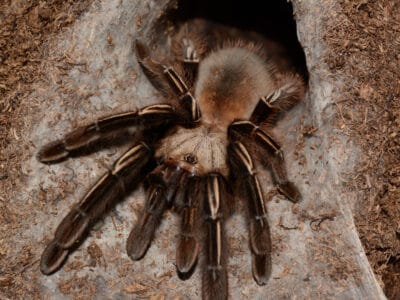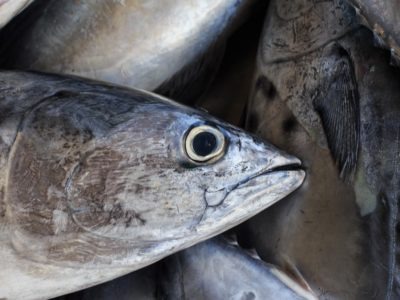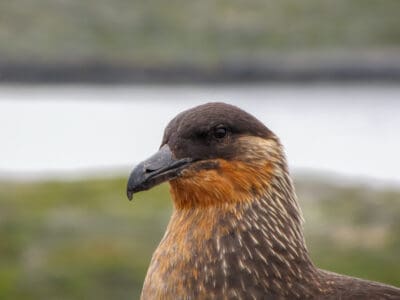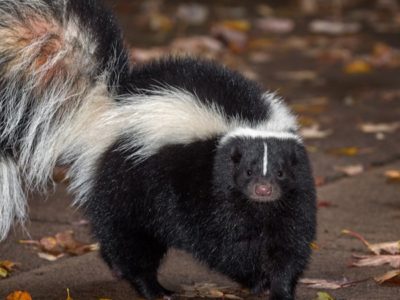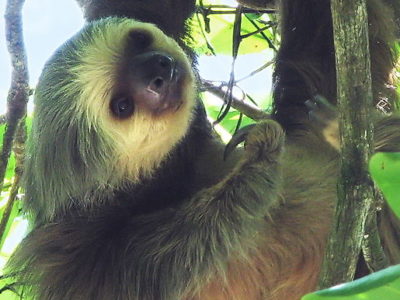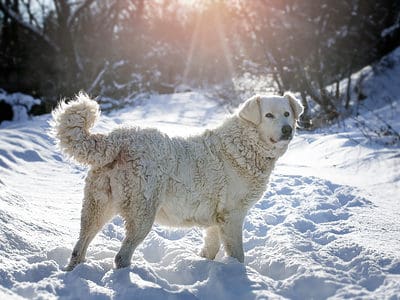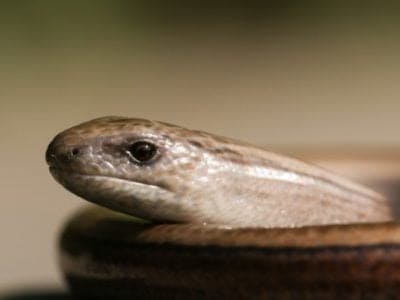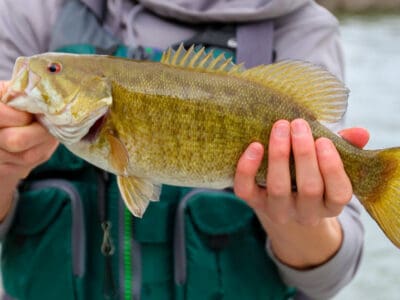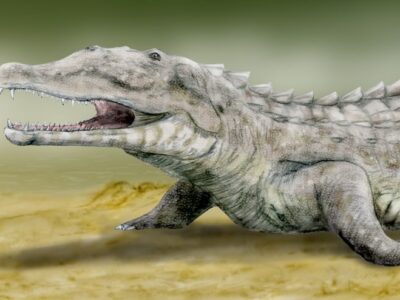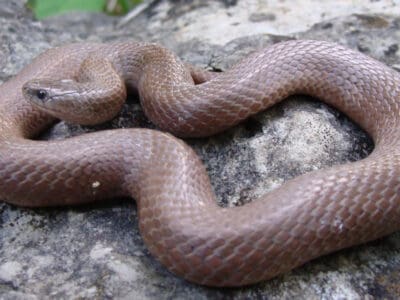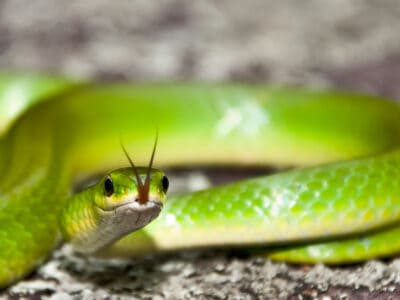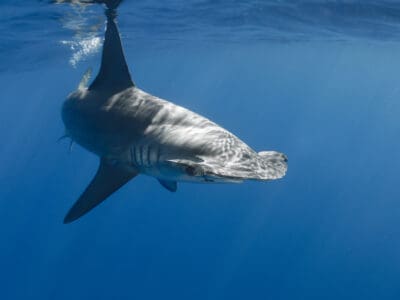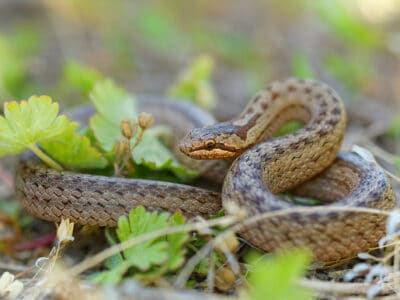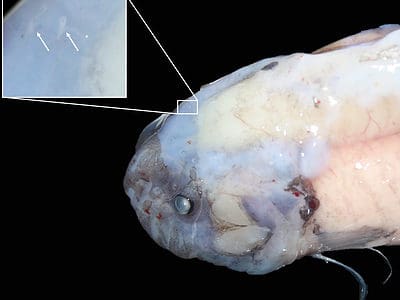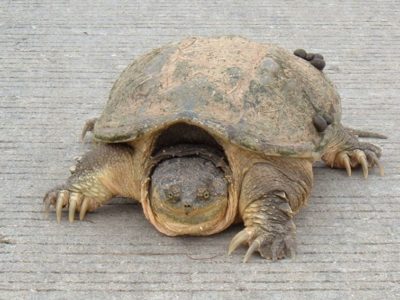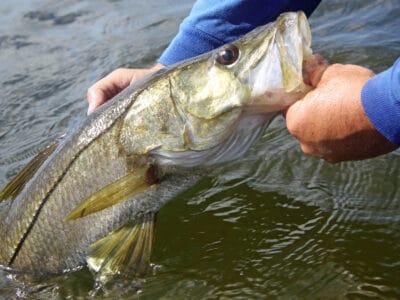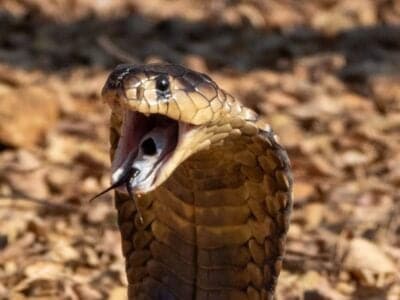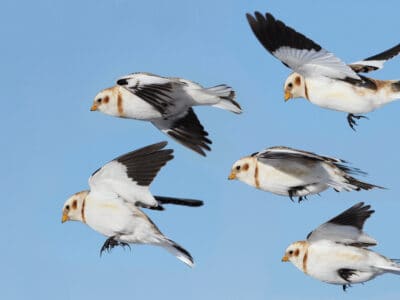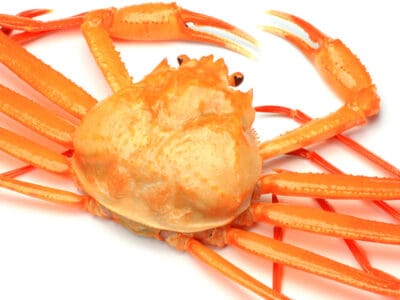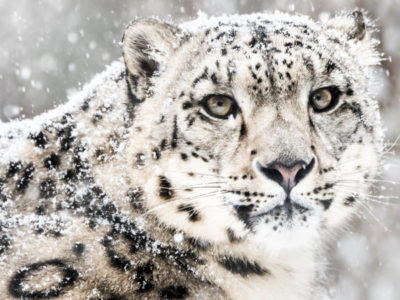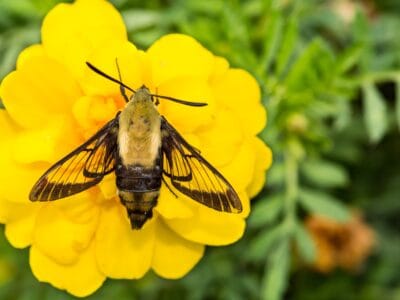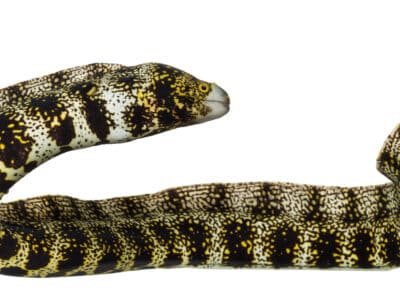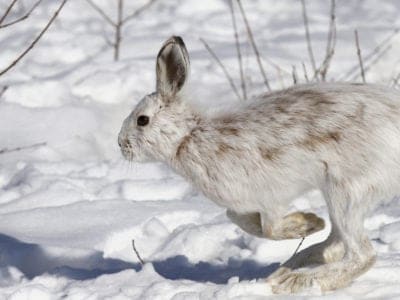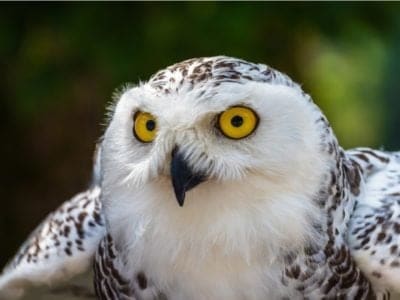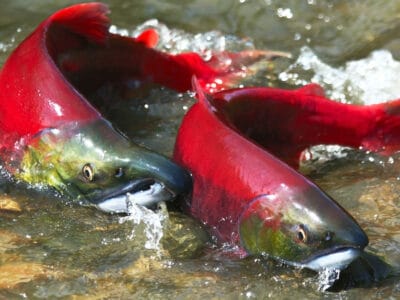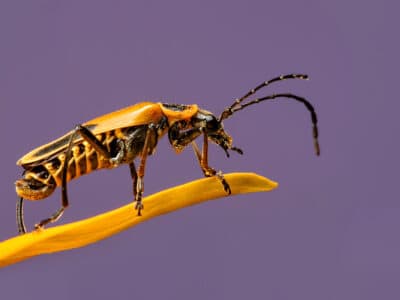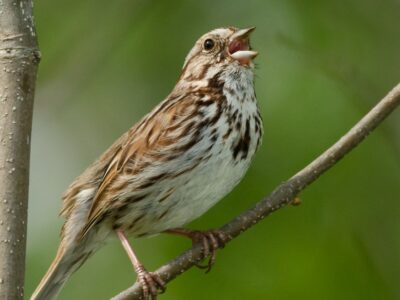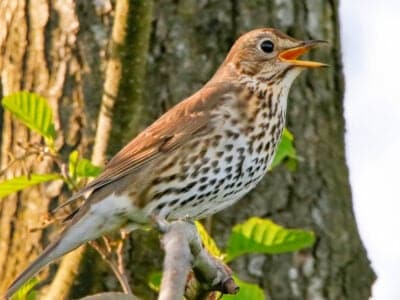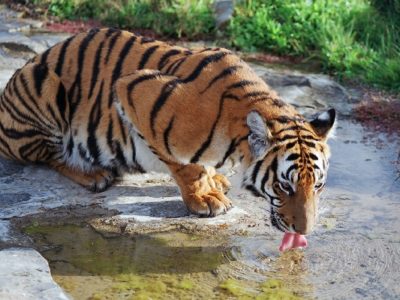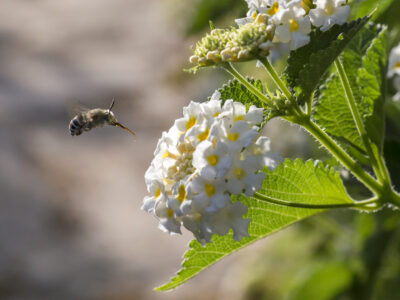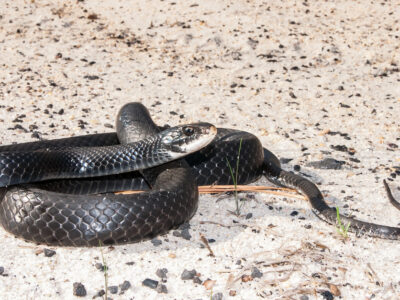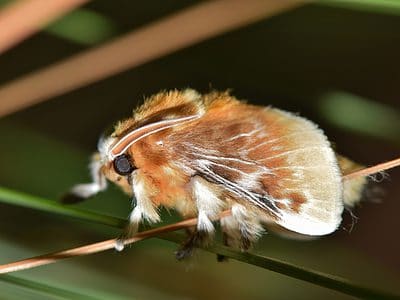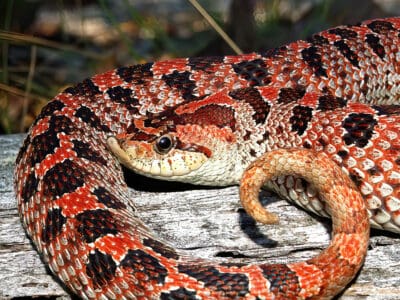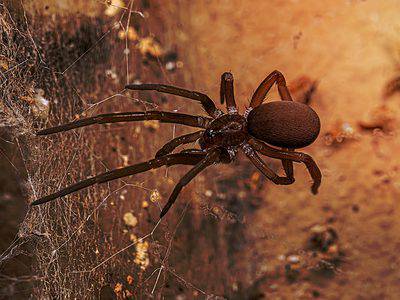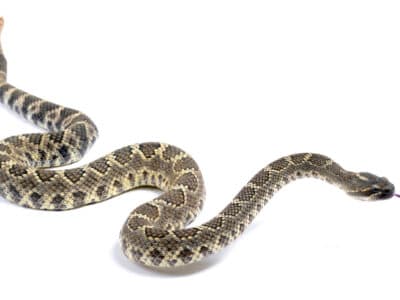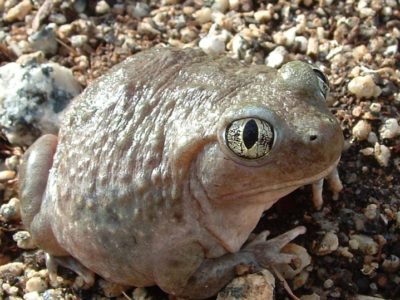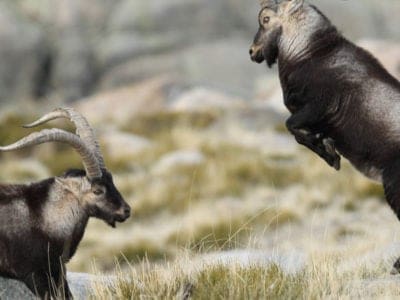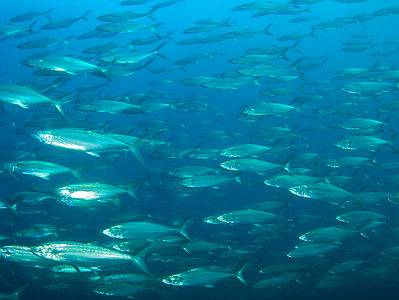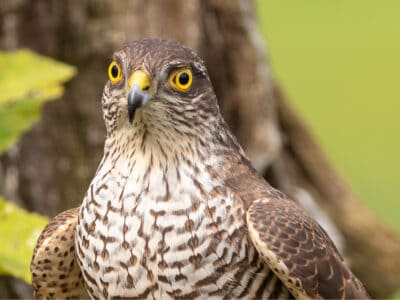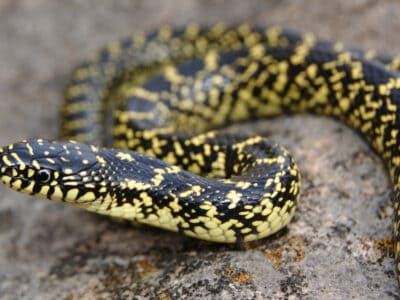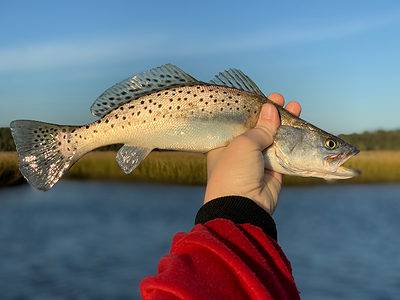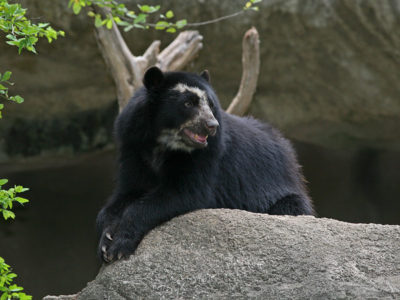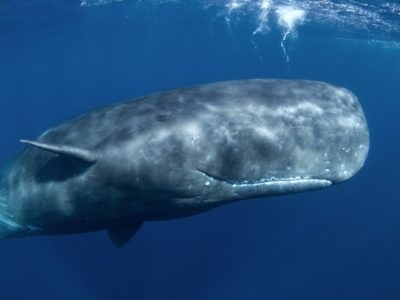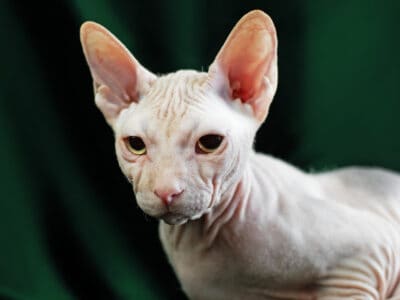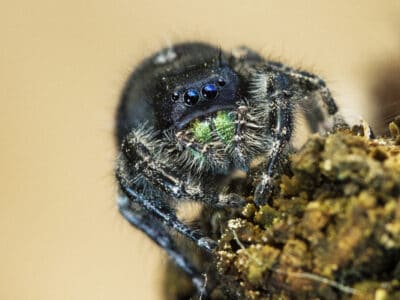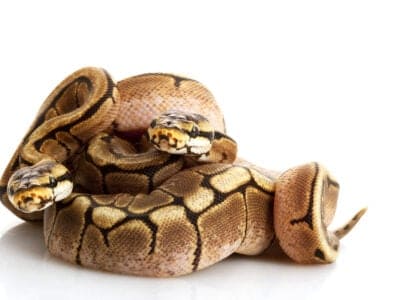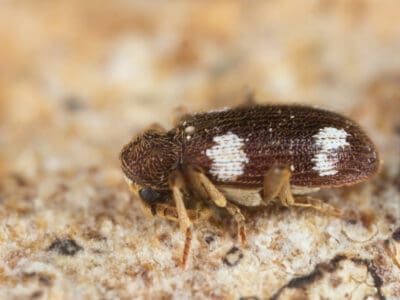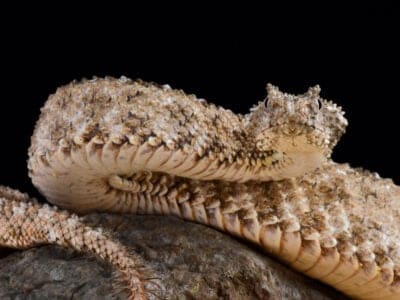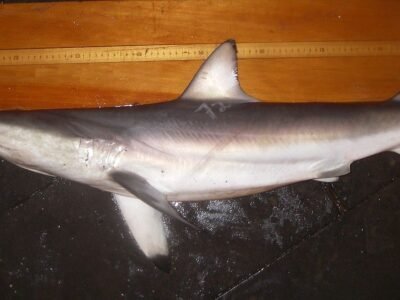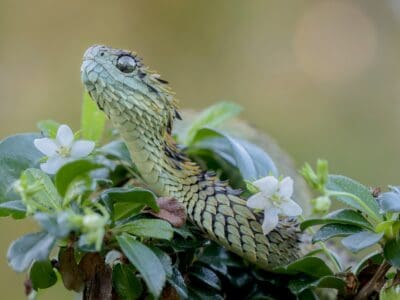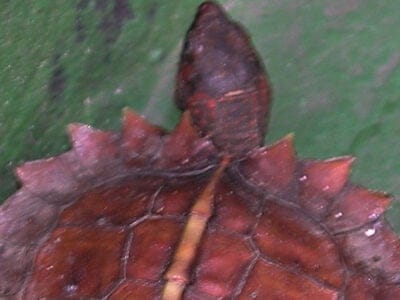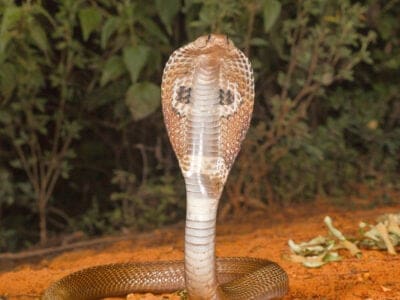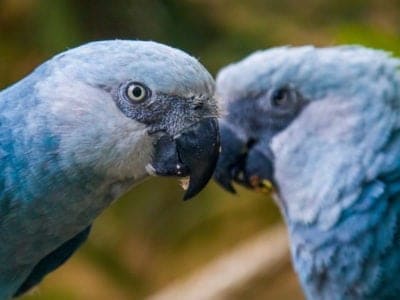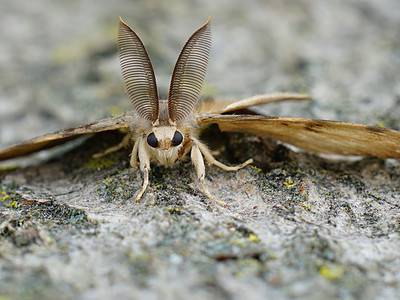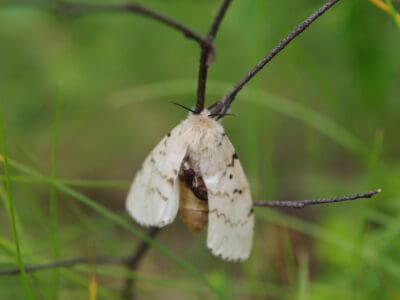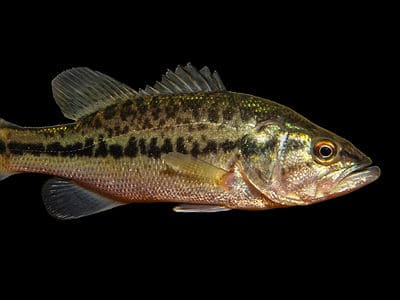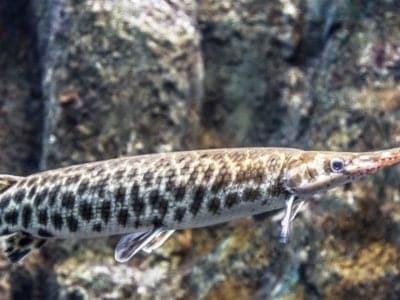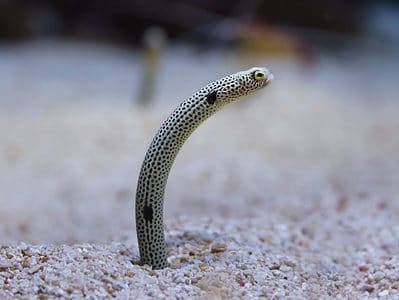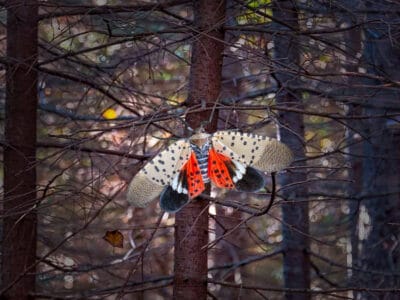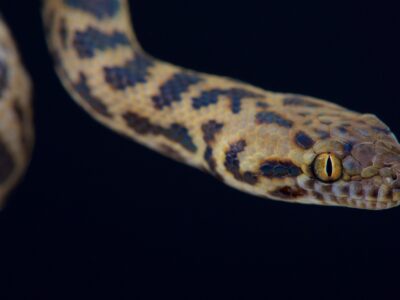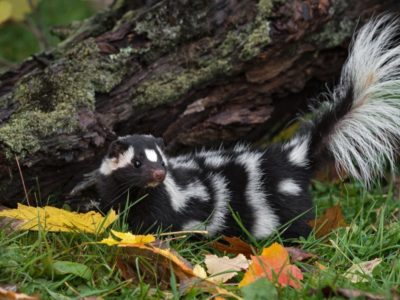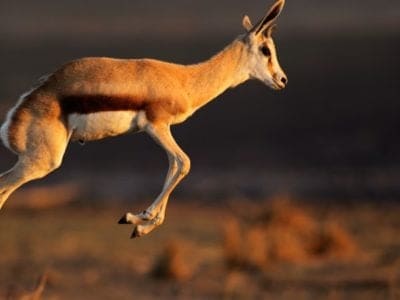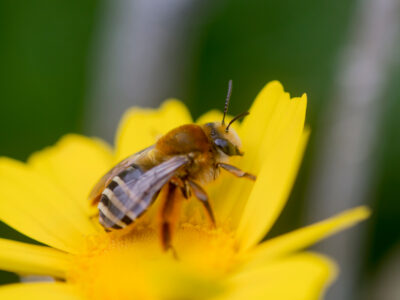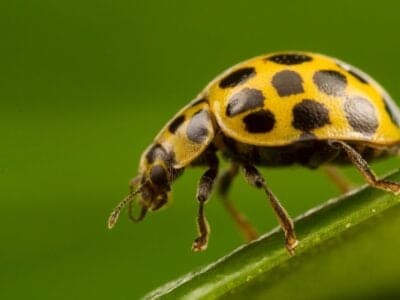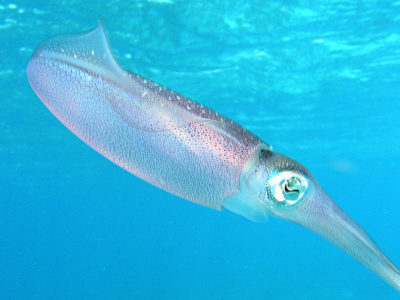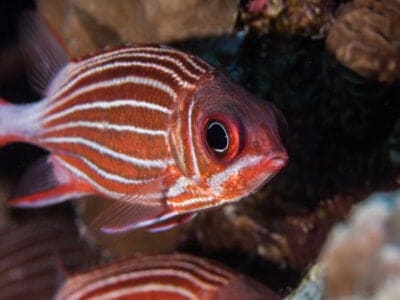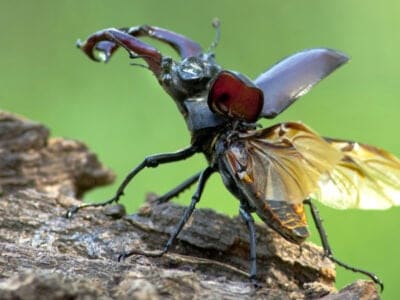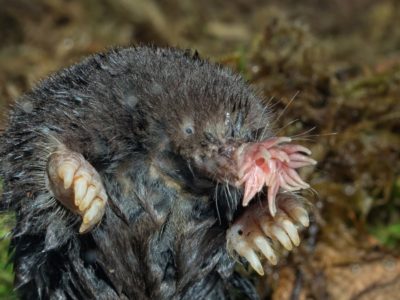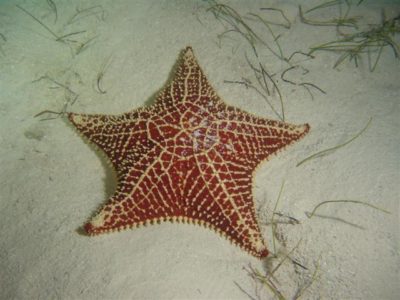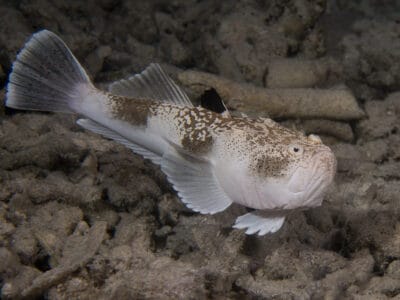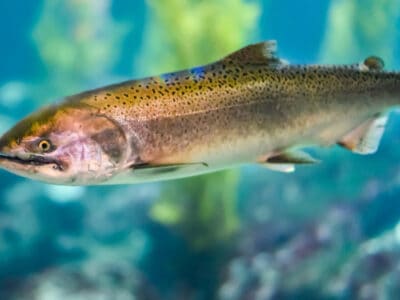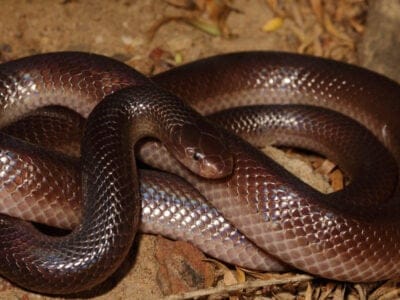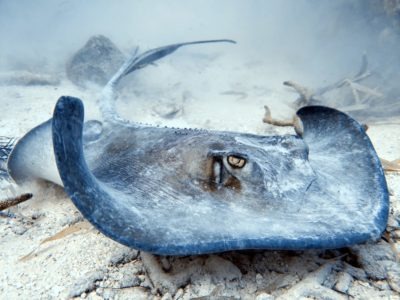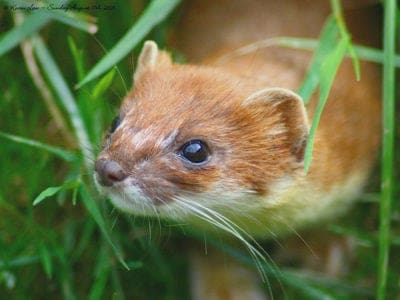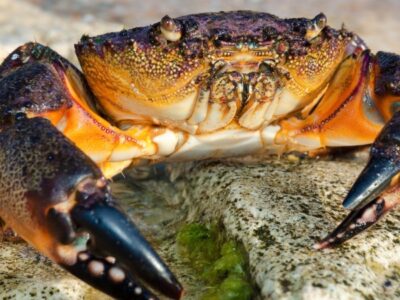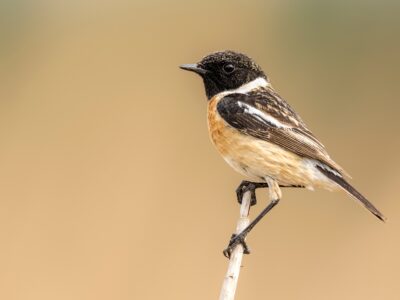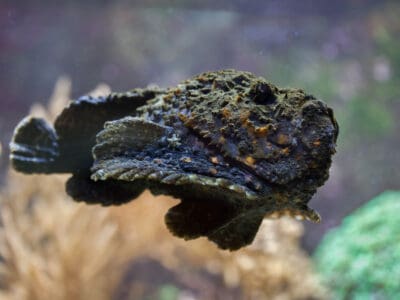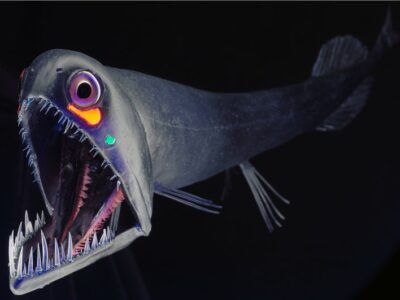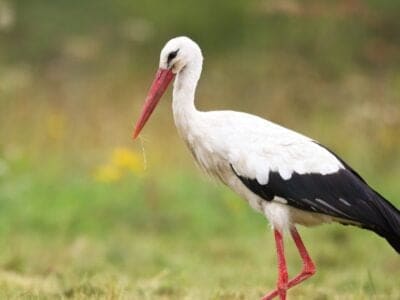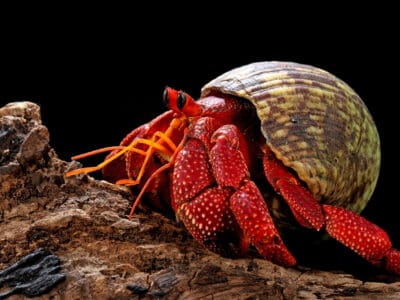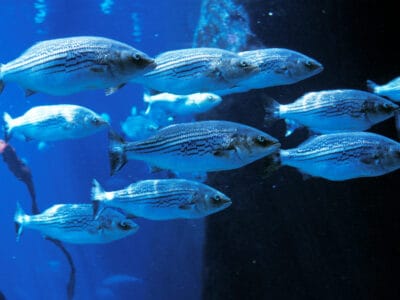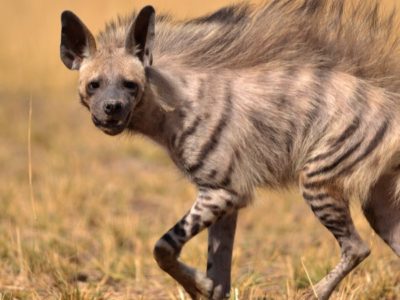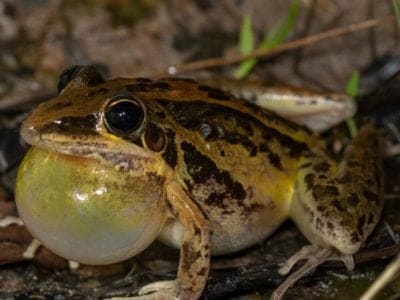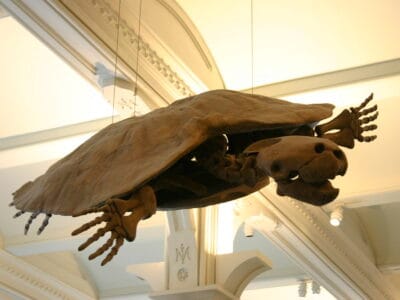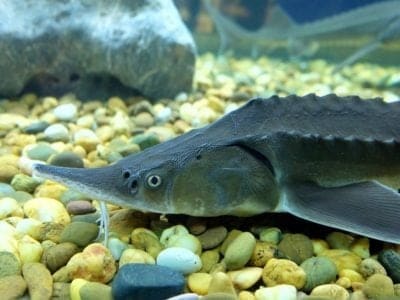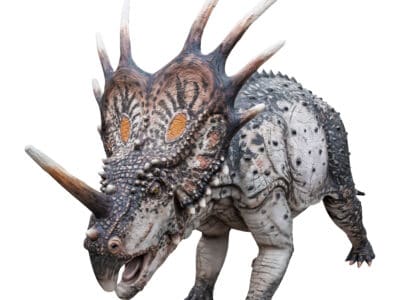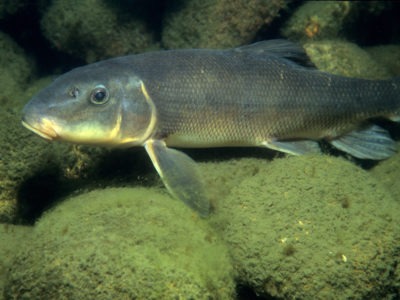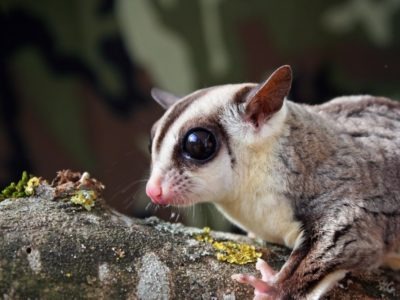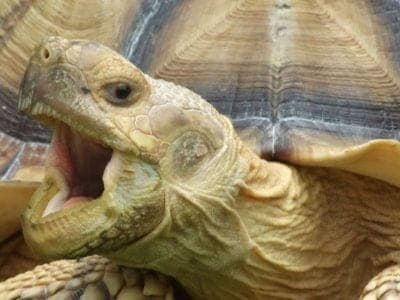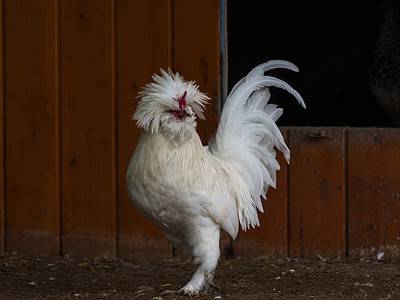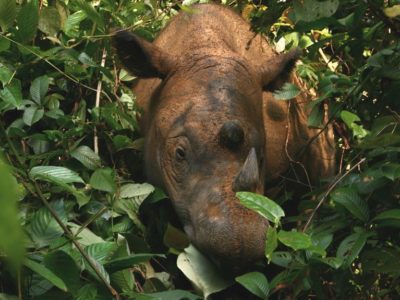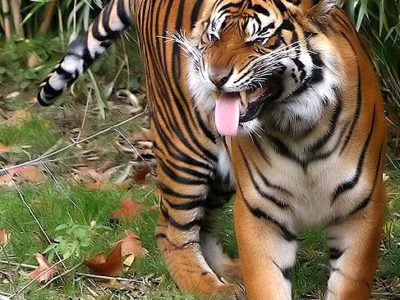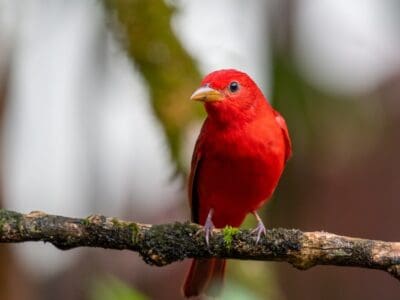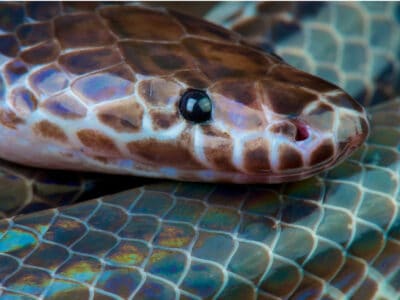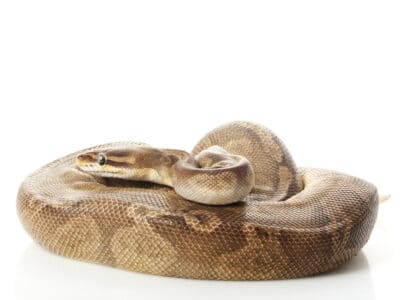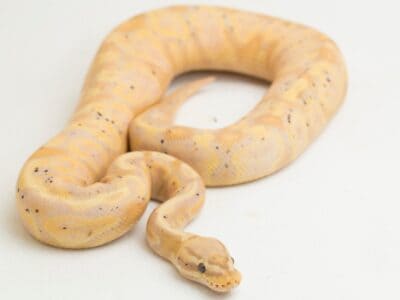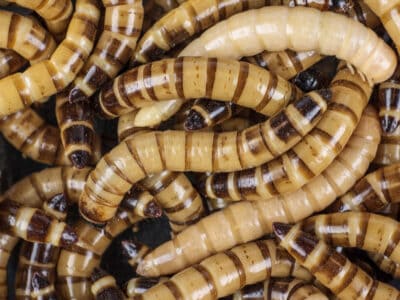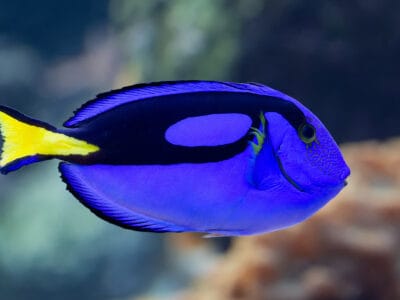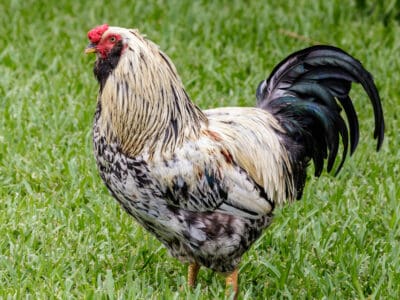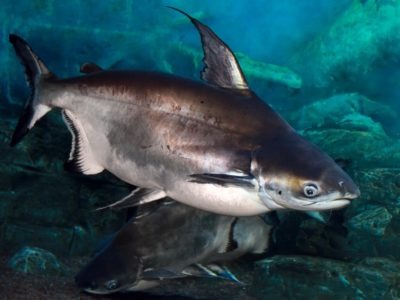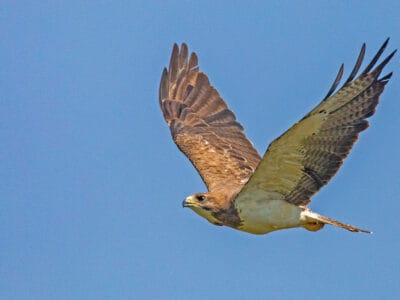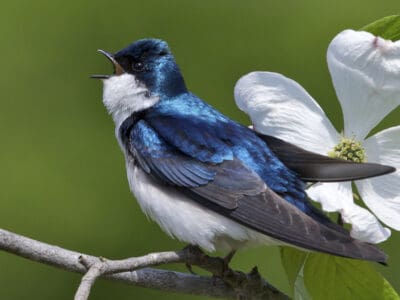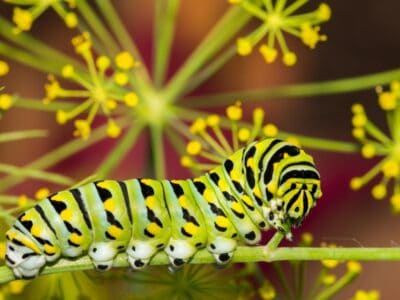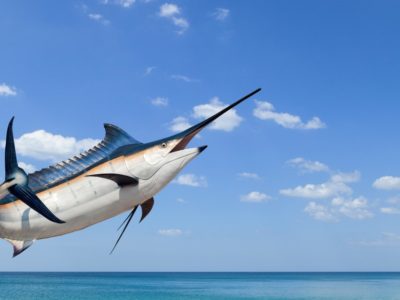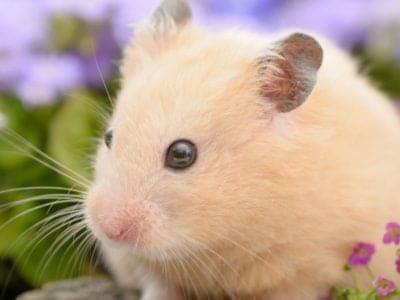Read below for information on 293 different animals that start with the letter S, from the extinct sabre-toothed tiger to swans. The most popular animal that starts with the letter S is the sloth, a slow-moving creature believed to be distantly related to anteaters and armadillos. The least popular S animal is the striped rocket frog, so named for their incredible jumping abilities. Interesting facts about letter S name animals include:
- Stellers sea cows were hunted to extinction in only 17 years
- Servals are medium sized wild cats that can jump over 3 feet high and over 12 feet horizontally when hunting prey
- Sea lions have specially adapted flippers which angle 90 degrees to help them walk on land
Jump to any letter
Alphabetical List of Animals That Start with S
- Saanen Goat
- Saarloos Wolfdog
- Saber-Toothed Tiger
- Sable
- Sable Black German Shepherd
- Sable Ferret
- Sable German Shepherd
- Saddleback Caterpillar
- Saiga
- Sailfish
- Saint Berdoodle
- Saint Bernard
- Saint Shepherd
- Salamander
- Salmon
- Salmon Shark
- Saluki
- Sambar
- Samoyed
- San Francisco Garter Snake
- Sand Cat
- Sand Crab
- Sand Dollar
- Sand Lizard
- Sand Tiger Shark
- Sand Viper
- Sandhill Crane
- Sandpiper
- Sandworm
- Saola
- Sapsali
- Sarcosuchus
- Sardines
- Sarkastodon
- Sarplaninac
- Sarus Crane
- Satanic Leaf-Tailed Gecko
- Saturniidae Moth
- Sauropoda
- Sauropoda
- Savanna Goat
- Savannah Monitor
- Savannah Sparrow
- Savu Python
- Saw-scaled Viper
- Sawfish
- Scale-Crested Pygmy Tyrant
- Scaleless Ball Python
- Scallops
- Scarab Beetle
- Scarlet Kingsnake
- Scarlet Macaw
- Scarlet Tanager
- Schapendoes
- Schipperke
- Schneagle
- Schnoodle
- Scimitar-horned Oryx
- Scissor-tailed Flycatcher
- Scorpion
- Scorpion Fish
- Scotch Collie
- Scottish Deerhound
- Scottish Fold Cat
- Scottish Terrier
- Scrotum Frog
- Sculpin
- Scutosaurus
- Sea Anemone
- Sea Bass
- Sea Dragon
- Sea Eagle
- Sea Lion
- Sea Otter
- Sea Roach
- Sea Slug
- Sea Snake
- Sea Spider
- Sea Squirt
- Sea Trout
- Sea Turtle
- Sea Urchin
- Seagull
- Seahorse
- Seal
- Sealyham Terrier
- Sedge Warbler
- Sehuencas Water Frog
- Sei Whale
- Senegal Parrot
- Senepol Cattle
- Sequined Spider
- Serval
- Seymouria
- Shantungosaurus
- Shark
- Sharp-Shinned Hawk
- Sharp-Tailed Snake
- Shastasaurus
- Sheep
- Sheepadoodle
- Sheepshead Fish
- Shepadoodle
- Shepkita
- Shepweiler
- Shetland Sheepdog
- Shiba Inu
- Shiba Inu Mix
- Shichi
- Shih Poo
- Shih Tzu
- Shih Tzu Mix
- Shikoku
- Shiloh Shepherd
- Shiranian
- Shoebill Stork
- Shollie
- Short-Eared Owl
- Short-Faced Bear
- Shortfin Mako Shark
- Shrew
- Shrimp
- Siamese
- Siberian
- Siberian Husky
- Siberian Ibex
- Siberian Retriever
- Siberian Tiger
- Siberpoo
- Sichuan Takin (Tibetan Takin)
- Sidewinder
- Sika Deer
- Silken Windhound
- Silkie Chicken
- Silky Shark
- Silky Terrier
- Silver Dollar
- Silver Labrador
- Simbakubwa
- Sinosauropteryx
- Sivatherium
- Six-Eyed Sand Spiders
- Sixgill shark
- Skate Fish
- Skeleton Tarantula
- Skink Lizard
- Skipjack Tuna
- Skua
- Skunk
- Skye Terrier
- Sleeper Shark
- Sloth
- Slovak Cuvac
- Slow Worm
- Slug
- Smallmouth Bass
- Smilosuchus
- Smokybrown Cockroach
- Smooth Earth Snake
- Smooth Fox Terrier
- Smooth Green Snake
- Smooth Hammerhead Shark
- Smooth Snake
- Snail
- Snailfish
- Snake
- Snapping Turtle
- Snook Fish
- Snorkie
- Snouted Cobra
- Snow Bunting
- Snow Crab
- Snow Goose
- Snow Leopard
- Snowberry Clearwing Moth
- Snowflake Eel
- Snowshoe
- Snowshoe Hare
- Snowy Owl
- Sockeye Salmon
- Soldier Beetle
- Somali
- Song Sparrow
- Song Thrush
- South China Tiger
- Southeastern Blueberry Bee
- Southern Black Racer
- Southern Flannel Moth
- Southern Hognose Snake
- Southern House Spider
- Southern Pacific Rattlesnake
- Spadefoot Toad
- Spalax
- Spanador
- Spanish Goat
- Spanish Mackerel
- Spanish Mastiff
- Spanish Water Dog
- Sparrow
- Sparrowhawk
- Speckled Kingsnake
- Speckled Trout
- Spectacled Bear
- Sperm Whale
- Sphynx
- Spider
- Spider Ball Python
- Spider Beetle
- Spider Monkey
- Spider Wasp
- Spider-Tailed Horned Viper
- Spinner Shark
- Spinone Italiano
- Spinosaurus
- Spiny bush viper
- Spiny Dogfish
- Spiny Hill Turtle
- Spitting Cobra
- Spixs Macaw
- Sponge
- Spongy Moth
- Spongy Moth
- Spotted Bass
- Spotted Gar
- Spotted Garden Eel
- Spotted Lanternfly
- Spotted python
- Spotted Skunk
- Springador
- Springbok
- Springerdoodle
- Squash Bee
- Squash Beetle
- Squid
- Squirrel
- Squirrel Monkey
- Squirrelfish
- Sri Lankan Elephant
- Stabyhoun
- Staffordshire Bull Terrier
- Stag Beetle
- Standard Schnauzer
- Star-nosed mole
- Starfish
- Stargazer Fish
- Steelhead Salmon
- Steller’s Sea Cow
- Stick Insect
- Stiletto Snake
- Stingray
- Stoat
- Stone Crab
- Stonechat
- Stonefish
- Stoplight Loosejaw
- Stork
- Strawberry Hermit Crab
- Striped Bass
- Striped Hyena
- Striped Rocket Frog
- Stromatolite
- Stupendemys
- Sturgeon
- Styracosaurus
- Suchomimus
- Suckerfish
- Sugar Glider
- Sulcata Tortoise
- Sultan Chicken
- Sumatran Elephant
- Sumatran Orangutan
- Sumatran Rhinoceros
- Sumatran Tiger
- Summer Tanager
- Sun Bear
- Sunbeam Snake
- Sunset Ball Python
- Super Pastel Ball Python
- Supersaurus
- Superworm
- Surgeonfish
- Sussex Chicken
- Swai Fish
- Swainson’s Hawk
- Swallow
- Swallowtail Butterfly
- Swallowtail Caterpillar
- Swan
- Swedish Elkhound
- Swedish Lapphund
- Swedish Vallhund
- Swordfish
- Syrian Hamster
Animals that Start with S
Saanen Goat
- Kingdom
- Animalia
- Phylum
- Chordata
- Class
- Mammalia
- Order
- Artiodactyla
- Family
- Bovidae
- Genus
- Capra
- Scientific Name
- Capra aegagrus hircus
Fun Fact: The saanen goat is the most popular milk breed.
“The Saanen is known as the queen of the dairy goats.” This dainty white goat is prized for its lovely looks, high milk production, and sweet temperament. Saanen goats originally came from a region in Switzerland famous for its dairy production. One of the most popular goat breeds, the Saanen goat does well in most […] Read More
Saarloos Wolfdog
- Kingdom
- Animalia
- Phylum
- Chordata
- Class
- Mammalia
- Order
- Carnivora
- Family
- Canidae
- Genus
- Canis
- Scientific Name
- Canis lupus
Fun Fact:
The Saarloos Wolfdogs make very good watchdogs and are very devoted to the people in their family. The Saarloos Wolfdog breed was created in 1932 when Leendert Saarloos mated a German Shepherd with a captive Eurasian Grey Wolf. Leendert Saarloos then mated the result of the first pair again with the German Shepherd father. This […] Read More
Saber-Toothed Tiger
- Kingdom
- Animalia
- Phylum
- Chordata
- Class
- Mammalia
- Order
- Carnivora
- Family
- Felidae
- Genus
- Smilodon
- Scientific Name
- Smilodon populator
Fun Fact: Canines up to 7 inches long!
“The most prominent feature of the saber-toothed tiger was its long, sharp, canine teeth. It would hide in the grass, lie in wait, and then pounce on its prey to deliver a fatal bite.” The saber-toothed tiger roamed freely in the Americas from around 2.5 million years ago until the species went extinct around 11,700 […] Read More
Sable
- Kingdom
- Animalia
- Phylum
- Chordata
- Class
- Mammalia
- Order
- Carnivora
- Family
- Mustelidae
- Genus
- Martes
- Scientific Name
- Martes zibellina
Fun Fact: Their fur has been considered a luxury item since the Middle Ages
Sable Fur Has Long Been Cherished for Its Texture and Color With their smooth, finely tinted coats, sables have long been objects of desire — or, at least, their fur has. The Sable is a forest-dwelling animal that sports a lush, silky coat and spends most of its time alone. Today, sables are animals that […] Read More
Sable Black German Shepherd
- Kingdom
- Animalia
- Phylum
- Chordata
- Class
- Mammalia
- Order
- Carnivora
- Family
- Canidae
- Genus
- Canis
- Scientific Name
- Canis lupus
Fun Fact: According to the American Kennel Club, the German Shepherd is the second most popular breed in the United States
One of the most interesting facts is that the German Shepherd was created from crosses of several European herding dogs in 19th century Germany. The intention of the original breeder, Captain Max von Stephanitz, was to create an ideal herder. The classic image of the German Shepherd looks a lot like Rin-Tin-Tin: tall, muscular, and […] Read More
Sable Ferret
- Kingdom
- Animalia
- Phylum
- Chordata
- Class
- Mammalia
- Order
- Carnivora
- Family
- Mustelidae
- Genus
- Mustela
- Scientific Name
- Mustela furo
Fun Fact: Ferrets were used during the Revolutionary War to keep down the rat population.
“The Sable Ferret is the most common of the pet ferrets.” Though it requires more upkeep than a dog or a cat, the sable ferret makes a great pet. It is clean, as it can be trained to go in a litter box, lively, intelligent, and endlessly curious about its world. It is one of […] Read More
Sable German Shepherd
- Kingdom
- Animalia
- Phylum
- Chordata
- Class
- Mammalia
- Order
- Carnivora
- Family
- Canidae
- Genus
- Canis
- Scientific Name
- Canis lupus
Fun Fact: The gene responsible for their color is also found in wolves.
The gene responsible for their color is also found in wolves. Sable German Shepherd Summary Sable German Shepherds are known as the classic German Shepherd, believed to closely resemble the original Shepherds. This eager-to-work herding dog boasts a beautiful sable double coat, which means that its hair strands contain multiple bands of colors like tan, […] Read More
Saddleback Caterpillar
- Kingdom
- Animalia
- Phylum
- Arthropoda
- Class
- Insecta
- Order
- Lepidoptera
- Family
- Limacodidae
- Genus
- Acharia
- Scientific Name
- Acharia stimulea
Fun Fact: Saddleback caterpillars are solitary in nature, unlike many of their cousins that live in pairs or groups. They only intermingle when it's time to mate and lay eggs.
The saddleback caterpillar is a species native to North America and Mexico. They belong to Limacodidae, which also includes slugs and moths. They are green with brown heads and have a prominent brown dot surrounded by a white ring on the center of their bodies. This dot looks similar to a saddle, hence the name […] Read More
Saiga
- Kingdom
- Animalia
- Phylum
- Chordata
- Class
- Mammalia
- Order
- Artiodactyla
- Family
- Bovidae
- Genus
- Saiga
- Scientific Name
- Saiga tatarica
Fun Fact: Large noses help filter out dust
“The Saiga is called the large-nosed antelope.” Thriving in the harsh dry grasslands of Central Asia, this unique-looking antelope is instantly recognizable by its sizable nose with wide-set nostrils. The saiga’s snout is used for dust filtration, a necessary tool in its dry habitat. These antelope have been listed as Critically Endangered by the IUCN’s […] Read More
Sailfish
- Kingdom
- Animalia
- Phylum
- Chordata
- Class
- Actinopterygii
- Order
- Istiophoriformes
- Family
- Istiophoridae
- Genus
- Istiophorus
- Scientific Name
- Istiophorus platypterus
Fun Fact: Fast billfish with a sail-like dorsal fin
Sailfish are known for their elongated dorsal fins that resemble the sail of a ship. They are highly active and agile fish. Anglers often target them for their challenging and entertaining fights when caught. They are considered the fastest fish in the world, but they are close competitors with swordfish and marlins. These fish live […] Read More
Saint Berdoodle
- Kingdom
- Animalia
Fun Fact:
Saint Berdoodles are very playful dogs that are loyal, friendly, and smart, and enjoy activities with their families. The Saint Bernard and the Poodle were bred to create the Saint Berdoodle. Also called the Saint Berpoo, St. Berpoo, St. Berdoodle, and Saint Bernard and Poodle Mix, this mixed breed has created wonderful companion dogs. They […] Read More
Saint Bernard
- Kingdom
- Animalia
- Phylum
- Chordata
- Class
- Mammalia
- Order
- Carnivora
- Family
- Canidae
- Genus
- Canis
- Scientific Name
- Canis lupus
Fun Fact: Gentle, loyal and friendly!
Key Facts Saint Bernards don’t do too well in tropical weather and are best kept in regions with a cooler climate.They may either have a short-haired coat or a long-haired coat.In spite of their history as working dogs, they are none too fond of exercise. Originally, the Saint Bernard was bred as a working dog […] Read More
Saint Shepherd
- Kingdom
- Animalia
- Phylum
- Chordata
- Class
- Mammalia
- Order
- Carnivora
- Family
- Canidae
- Genus
- Canis
- Scientific Name
- Canis lupus
Fun Fact: These dogs have an eager-to-please attitude, making them sweet and happy pets.
The Saint Shepherd is incredibly intelligent and are quick learners. They make great guard dogs. Saint Shepherd is a hybrid dog and is a crossbreed between Saint Bernard and the German Shepherd. Both the parent dogs are rather large, making the Saint Shepherd an incredible breed. When they are full-grown, these dogs weigh approximately 120 […] Read More
Salamander
- Kingdom
- Animalia
- Phylum
- Chordata
- Class
- Amphibia
- Order
- Caudata
- Family
- Salamandroidea
- Scientific Name
- Caudata
Fun Fact: There are more than 700 different species!
“Some species of salamander can lay up to 450 eggs at one time” There are 600-plus species of salamander in the world. Salamanders are carnivores that are active at night. Many salamanders burrow in the mud to make their home under a rock near a body of water. Some species of salamander lay eggs while […] Read More
Salmon
- Kingdom
- Animalia
- Phylum
- Chordata
- Class
- Actinopterygii
- Order
- Salmoniformes
- Family
- Salmonidae
- Scientific Name
- Salmonidae
Fun Fact: Returns upstream every year to spawn
Millions of pounds of salmon are harvested every year as a source of nutrition. Every year, when conditions are right, the salmon undertakes a remarkable journey upstream to reproduce with others and create the next generation of fish. This is accompanied by a massive physical transformation in which its color and body shape change to […] Read More
Salmon Shark
- Kingdom
- Animalia
- Phylum
- Chordata
- Class
- Chondrichthyes
- Order
- Lamniformes
- Family
- Lamnidae
- Genus
- Lamna
- Scientific Name
- Lamna ditropis
Fun Fact: Salmon sharks are related to Great Whites.
The Salmon shark is sometimes called “Pacific Porbeagle” because its appearance is almost indistinguishable from the porbeagle species. In fact, before realizing it was a separate species, the salmon shark was incorrectly identified as a porbeagle. The salmon shark is also commonly mistaken for a great white shark and has been nicknamed “mini great white” […] Read More
Saluki
- Kingdom
- Animalia
- Phylum
- Chordata
- Class
- Mammalia
- Order
- Carnivora
- Family
- Canidae
- Genus
- Canis
- Scientific Name
- Canis lupus
Fun Fact: The Saluki is one of the fastest dog breeds in the world.
Arabians nicknamed this breed “el hor,” meaning “the noble,” and prized them as much as their famous horses. Among the oldest and most venerable of all dog breeds, the Saluki is a smart and masterly sighthound (meaning it hunts primarily through sight rather than scent). The Saluki probably obtained its modern form around 2,400 years […] Read More
Sambar
- Kingdom
- Animalia
- Phylum
- Chordata
- Class
- Mammalia
- Order
- Artiodactyla
- Family
- Cervidae
- Genus
- Rusa
- Scientific Name
- Rusa unicolor
Fun Fact: Male sambars will compete for mates by clashing together with their antlers
The sambar is among the most common deer species in all of South Asia. In terms of its appearance and ecological role, this species shares many similarities with the white-tailed deer of North America. It populates dense forests and grasslands, feeding on whatever plant material it can find. However, due to decades of habitat loss […] Read More
Samoyed
- Kingdom
- Animalia
- Phylum
- Chordata
- Class
- Mammalia
- Order
- Carnivora
- Family
- Canidae
- Genus
- Canis
- Scientific Name
- Canis lupus
Fun Fact:
Samoyeds were bred in Serbia to herd reindeer, pull sleds, or hunt. They are a basal breed and are part of the Spitz dog group. Samoyeds have very thick white fur that helped keep them warm in the frigid Siberian temperatures. Their coat features two layers, a long and straight topcoat, and a dense undercoat. […] Read More
San Francisco Garter Snake
- Kingdom
- Animalia
- Phylum
- Chordata
- Class
- Reptilia
- Order
- Squamata
- Family
- Colubridae
- Genus
- Thamnophis
- Scientific Name
- Thamnophis sirtalis tetrataenia
Fun Fact: The San Francisco garter snake is among the rarest snake species in the United States.
The San Francisco garter snake is among the rarest snake species in the United States. The San Francisco garter snake is a subspecies of the common garter snake. Swathed in bright, flamboyant colors, it is also among the most unique-looking species. While almost completely harmless to humans, they are surprisingly effective and deadly predators against […] Read More
Sand Cat
- Kingdom
- Animalia
- Phylum
- Chordata
- Class
- Mammalia
- Order
- Carnivora
- Family
- Felidae
- Genus
- Felis
- Scientific Name
- Felis margarita
Fun Fact: They can survive for weeks without drinking water because the get moisture from their prey.
“Sand cats have long fur on the soles of their feet to help them run in hot, shifting sand.” Sand Cat Summary The sand cat is a desert-dwelling wild cat species found in the deserts of North Africa, the Middle East, and Central Asia. An adaptation it has for living in this harsh environment is […] Read More
Sand Crab
- Kingdom
- Animalia
- Phylum
- Arthropoda
- Class
- Malacostraca
- Order
- Decapoda
Fun Fact: The sand crab burrows beneath the sand with its tail
Sand crabs, also known as mole crabs or sand fleas, burrow backward just beneath the surface of sandy beaches to hide from predators and look for prey. If you happen to be walking along an untouched virgin beach near the ocean, you may notice these unusual animals hidden directly beneath the sand with only their […] Read More
Sand Dollar
- Kingdom
- Animalia
- Phylum
- Echinodermata
- Class
- Echinoidea
- Order
- Clypeasteroida
Fun Fact: Sand Dollar skeletons make popular collection items for seashell collectors.
It can be the highlight of your seashell collecting trip to find a bright white Sand Dollar at the beach. The skeletons of these animals are popular with collectors. When they are alive, Sand Dollars actually have gray or purple spines and fine hairs covering their bodies. They move along the sea floor and bury […] Read More
Sand Lizard
- Kingdom
- Animalia
- Phylum
- Chordata
- Class
- Reptilia
- Order
- Squamata
- Family
- Lacertidae
- Genus
- Lacerta
- Scientific Name
- Lacerta agilis
Fun Fact: Males turn green in spring!
The sand lizard is one of the rarest reptiles in Europe, but wildlife officials are working to establish new populations. If you are hiking in sandy areas along the Jurassic Coastline, watch for a sandy-brown lizard with dark splotches that is about 20 centimeters long to run across your path as it may be fa […] Read More
Sand Tiger Shark
- Kingdom
- Animalia
- Phylum
- Chordata
- Class
- Chondrichthyes
- Order
- Lamniformes
- Family
- Odontaspididae
Fun Fact: The sand tiger is the shark most commonly seen in aquariums.
“The Sand Tiger Shark only looks ferocious!” Though the sand tiger prowls the oceans with cold, staring eyes and a mouthful of sharp teeth, and the most gruesome part of its life cycle happens before it’s even born, the shark is actually peaceable. It also tolerates captivity, and those sharks one sees swimming round and […] Read More
Sand Viper
- Kingdom
- Animalia
- Phylum
- Chordata
- Class
- Reptilia
- Order
- Squamata
- Family
- Viperidae
- Genus
- Cerastes
- Scientific Name
- Cerastes viperus
Fun Fact: Sand vipers are nuisance snakes in some areas.
“Sand vipers burrow into the sand and strike directly from their hiding place.” Found throughout the deserts of North Africa, the sand viper is a versatile and deadly hunter that can shift between active and ambush hunting depending on the needs of its environment. As a close relative of the geographically proximate horned viper, the […] Read More
Sandhill Crane
- Kingdom
- Animalia
- Phylum
- Chordata
- Class
- Aves
- Order
- Gruiformes
- Family
- Gruidae
- Genus
- Antigone
- Scientific Name
- A. canadensis
Fun Fact:
They’re best known for their huge annual migrations that can blot out the sun. Whether they’re elegantly hunting in a stream or migrating by the thousands, the Sandhill Crane is a beautiful and elegant bird that is sure to draw your eye. Their tall, grey bodies stand out against the green meadows they’re commonly found […] Read More
Sandpiper
- Kingdom
- Animalia
- Phylum
- Chordata
- Class
- Aves
- Order
- Charadriiformes
- Family
- Scolopacidae
Fun Fact: Some sandpipers can migrate more than 8,000 miles without stopping!
Some sandpipers can migrate more than 8,000 miles without stopping! Picture a sandpiper. You might be imagining a small bird with long legs, a rounded head with a medium to long bill, and a long and somewhat slender body. Perhaps it is gray or brown, mostly white, or some combination of colors. You’re probably imagining […] Read More
Sandworm
- Kingdom
- Animalia
- Phylum
- Annelida
- Order
- Phyllodocida
- Family
- Nereididae
- Genus
- Alitta
- Scientific Name
- Alitta virens
Fun Fact: Legs also function as gills
Also known as “king ragworms,” sandworms (Alitta virens) are marine annelid worms in the family Nereididae. While most measure around 1 foot long, they can measure nearly 4 feet at maximum size. Sandworms possess large pincer-like teeth that they use to catch and feed on invertebrates, crustaceans, and mollusks. Anglers often use sandworms as live […] Read More
Saola
- Kingdom
- Animalia
- Phylum
- Chordata
- Class
- Mammalia
- Order
- Artiodactyla
- Family
- Bovidae
- Genus
- Pseudoryx
- Scientific Name
- Pseudoryx nghetinhensis
Fun Fact: Only known to science since 1992!
Classification and Evolution The Saola is a species of Antelope natively found in the forests on the border of north-central Vietnam and Laos. They are one of the most recently discovered large mammals in the world but are now also believed to be one of the rarest with estimated population numbers of just in the […] Read More
Sapsali
- Kingdom
- Animalia
- Phylum
- Chordata
- Class
- Mammalia
- Order
- Carnivora
- Family
- Canidae
- Genus
- Canis
- Scientific Name
- Canis lupus
Fun Fact: Natives know this breed as the "ghost hunter" because they believe these dogs can ward off evil spirits.
The sapsali also goes by the name sapsaree, which are medium-sized dogs that originated in Korea. Natives know this breed as the “ghost hunter” because they believe these dogs can ward off evil spirits. However, despite this ominous superstition, the sapsali is a good-natured and social dog. Additionally, they are very affectionate towards their loved […] Read More
Sarcosuchus
- Kingdom
- Animalia
- Phylum
- Chordata
- Class
- Reptilia
- Order
- Pseudosuchia
- Family
- Pholidosauridae
- Genus
- Sarcosuchus
- Scientific Name
- Sarcosuchus imperator
Fun Fact: Sarcosuchus is a relative of present-day crocodiles.
Sarcosuchus is an extinct genus of crocodyliform reptiles that lived during the Early Cretaceous Period (about 95 to 115 million years ago). The giant reptile was the largest crocodile to have ever lived on the planet. It lived in an area now part of present-day Africa and South America. Description & Size Sarcosuchus is a […] Read More
Sardines
- Kingdom
- Animalia
- Phylum
- Chordata
- Class
- Actinopterygii
- Order
- Clupeiformes
- Family
- Clupeidae
Fun Fact: Schools of sardines can be miles long and are often visible from an airplane
Schools of sardines can be miles long and are often visible from an airplane. Sardines are a group of herring fishes that encompass five distinct genera and at least 21 unique species. One of the most common sardines used in cooking and food preparation is the Pacific Sardine, also known as Sardinops caeruleus. Sardines are […] Read More
Sarkastodon
- Kingdom
- Animalia
- Phylum
- Chordata
- Class
- Mammalia
- Order
- Oxyaenodonta
- Family
- Oxyaenidae
- Genus
- Sarkastadon
- Scientific Name
- S. henanensis, S. mongoliensis
Fun Fact: Sarkastadon was one of the largest land mammal carnivores of all time!
The Sarkastadon genus was comprised of massive Creodonts, an order of animals that have since gone extinct. Most Creodonts were small and would have been the size of small dogs whereas Sarkastadon would have stood a few inches taller than the largest polar bears on earth. There are no animals left on earth that are […] Read More
Sarplaninac
- Kingdom
- Animalia
- Phylum
- Chordata
- Class
- Mammalia
- Order
- Carnivora
- Family
- Canidae
- Genus
- Canis
- Scientific Name
- Canis lupus
Fun Fact:
“According to some sources, the Sarplaninac (pronounced Shar-pla-nee-natz) had ten name changes before gaining its current name.” Summary Sarplaninac dogs are an ancient herd-guarding breed originating in the southeastern mountains of Yugoslavia, known thousands of years ago as Illyria. Breeders first called the dogs Illyrian shepherd dogs until 1957, when they received their current name, […] Read More
Sarus Crane
- Kingdom
- Animalia
- Phylum
- Chordata
- Class
- Aves
- Order
- Gruiformes
- Family
- Gruidae
- Genus
- Antigone
- Scientific Name
- Antigone antigone
Fun Fact: Parents use low calls to tell their chicks to freeze and lie still when danger lurks.
“Sarus cranes symbolize marital fidelity in India and are known for being loyal to their partners during their lifespan.” Summary The sarus crane (Antigone antigone) is the tallest flying bird in the world and is native to India, Southeast Asia, and northern Australia. They inhabit wetland environments like marshes and swamps and spend their days […] Read More
Satanic Leaf-Tailed Gecko
- Kingdom
- Animalia
- Phylum
- Chordata
- Class
- Reptilia
- Order
- Squamata
- Family
- Gekkonidae
- Genus
- Uroplatus
- Scientific Name
- Uroplatus phantasticus
Fun Fact: They are called “phants” or “satanics” in the pet trade.
The satanic leaf-tailed gecko’s scientific name translates to “fantastical creature with a flat tail.” One of the most spectacular examples of camouflage in the animal kingdom, the satanic leaf-tailed gecko looks so much like a dead leaf that a person can be staring at it in a tree and simply not see it. The tail […] Read More
Saturniidae Moth
- Kingdom
- Animalia
- Phylum
- Arthropoda
- Class
- Insecta
- Order
- Lepidoptera
- Family
- Saturniidae
Fun Fact: Some of the largest moths in the world
Summary Among the largest insects in the world, Saturniidae moths are a family of moths in the order Lepidoptera. Some of the most well-known Saturniids include emperor, royal, and giant silk moths. Most Saturniidae moths have eyespots on their broad wings and large, heavy bodies covered in hair-like scales. Although they usually pose no threat […] Read More
Sauropoda
- Kingdom
- Animalia
- Phylum
- Chordata
- Scientific Name
- Sauropoda
Fun Fact: Newly hatched sauropods weighted less than 11 pounds and put on 2 tons of weight a year!
Sauropoda was a massive, long-necked dinosaur that holds the distinction of being the largest land animal to ever walk the planet. This group includes some of the most popular and well-known genera of dinosaurs, including Brachiosaurus, Diplodocus, Camarasaurus, Apatosaurus, and Brontosaurus. They are united together by their similar body shapes and herbivorous diet. Covering some […] Read More
Sauropoda
- Kingdom
- Animalia
- Phylum
- Chordata
- Family
- sauropoda
- Scientific Name
- Sauropoda
Fun Fact: Sauropods lived in herds.
The giant dinosaurs called Sauropoda were the largest animals that roamed the earth during the Jurassic and Cretaceous periods. The clade Sauropoda refers to an entire group of dinosaurs known as Sauropods. They had long necks and tails and were some of the largest dinosaurs that we know of when measured from tip to tail. […] Read More
Savanna Goat
- Kingdom
- Animalia
- Phylum
- Chordata
- Class
- Mammalia
- Order
- artiodactyla
- Family
- Bovidae
- Genus
- Capra
- Scientific Name
- Capra hircus
Fun Fact: Savanna goats have only existed since 1957.
“Able to eat plants that other flock and herd animals cannot digest.” The savanna goat is a very new species developed by man in the 1950s. It was originally bred from Boer goats of South Africa for their meat quality. These goats feature short white coats and dark grey or black skin perfect for sunny […] Read More
Savannah Monitor
- Kingdom
- Animalia
- Phylum
- Chordata
- Class
- Reptilia
- Order
- Squamata
- Family
- Varanidae
- Genus
- Varanus
- Scientific Name
- Varanus polydaedalus
Fun Fact: Savannah monitors are one of the most popular lizards in captivity.
“The savannah monitor is a medium-sized monitor lizard from sub-Saharan Africa.“ This voracious lizard eats as much as 10% of its body weight during the rainy season, then eats very little during the dry season. While they breed prolifically in the wild, they’re difficult to breed in captivity. As pets, savannah monitors are terrific for […] Read More
Savannah Sparrow
- Kingdom
- Animalia
- Phylum
- Chordata
- Class
- Aves
- Order
- Passeriformes
- Family
- Passerellidae
- Genus
- Passerculus
- Scientific Name
- Passerculus sandwichensis
Fun Fact: The Savannah sparrow gets its name because one of the first of this type of bird was found in the city of Savannah, Georgia.
The call of a Savannah sparrow sounds a lot like an insect buzzing. Savannah sparrows are small, lively birds found throughout North America. They eat beetles, caterpillars, flies, and other insects as well as seeds. This bird is known for the yellow stripe above each of its eyes. There are 17 subspecies of this sparrow. […] Read More
Savu Python
- Kingdom
- Animalia
- Phylum
- Chordata
- Class
- Reptilia
- Order
- Squamata
- Family
- Pythonidae
- Genus
- Liasis
- Scientific Name
- Liasis savuensis
Fun Fact: Before ball pythons' morphs became popular, Savu pythons were everywhere in the pet trade.
The Savu python is one of the smallest pythons in the world and lives on a 60-square-mile island. If this petit snake’s distinctive eye color doesn’t catch your attention, its size and ease of handling will. This species was first imported into the United States in the mid-1990s and, since then, has become popular with […] Read More
Saw-scaled Viper
- Kingdom
- Animalia
- Phylum
- Chordata
- Class
- Reptilia
- Order
- Squamata
- Family
- Viperidae
- Genus
- Echis
- Scientific Name
- Echis carinatus
Fun Fact: This is the smallest venomous snake in India's Big Four.
Saw-scaled vipers are highly venomous snakes that are endemic to most of Asia and India. These small vipers only reach about two feet long in most cases, but their venom is extremely toxic. They are one of the species responsible for most snakebites in their native range, and their venom is the subject of medical […] Read More
Sawfish
- Kingdom
- Animalia
- Phylum
- Chordata
- Class
- Chondrichthyes
- Order
- Rhinopristiformes
- Family
- Pristidae
Fun Fact: Sawfish teeth keep growing as the fish gets older
The sawfish, also known as the carpenter shark, is a tropical ray fish that swims along the shallow coasts of warm marine areas. Fully-grown sawfish are titanic in size and can weigh well over 1,000 pounds. The sawfish’s distinctive spiked snout has been the source of many myths and false facts, leading to a lot […] Read More
Scale-Crested Pygmy Tyrant
- Kingdom
- Animalia
- Phylum
- Chordata
- Class
- Aves
- Order
- Passeriformes
- Family
- Tyrannidae
- Genus
- Lophotriccus
- Scientific Name
- Lophotriccus pileatus
Fun Fact: They raise their crests to ward off predators
The crest appears shaggy and scale-like and is typically raised to attract a mate or to ward off predators. Summary The scale-crested pygmy tyrant (Lophotriccus pileatus) is a tiny South American tyrant flycatcher with a distinct shaggy crest. This species is significantly understudied due to its remote tropical forest habitat. Most of the research on […] Read More
Scaleless Ball Python
- Kingdom
- Animalia
- Phylum
- Chordata
- Class
- Reptilia
- Order
- Squamata
- Family
- Pythonidae
- Genus
- Python
- Scientific Name
- Python regius
Fun Fact: Aside from the ocular scales covering each of its eyes, the scaleless ball python's body is completely smooth.
“A rather controversial morph due to its extra-sensitive skin, the scaleless ball python has completely smooth skin with no visible scales aside from the ones on its eyes.” Scaleless ball pythons are, as their name suggests, entirely smooth-skinned from head to tail, save for a single ocular scale covering each eye. They lack the usual […] Read More
Scallops
- Kingdom
- Animalia
- Phylum
- Mollusca
- Class
- Bivalvia
- Order
- Pectinida
- Family
- Pectinidae
- Genus
- Pectinidae
- Scientific Name
- Pectinidae
Fun Fact: Scallops begin their lives by attaching to sea grass on the ocean floor.
If you like to eat seafood, you should definitely learn more about tasty Scallops! These bivalve mollusks are popular in many seafood dishes. They live in saltwater and are caught off the coast of the eastern United States and Canada by commercial fishing companies. Scallops include multiple species within the same family. Some swim through […] Read More
Scarab Beetle
- Kingdom
- Animalia
- Phylum
- Arthropoda
- Class
- Insecta
- Order
- Coleoptera
- Family
- Scarabaeidae
Fun Fact: The ancient Egyptians worshipped scarabs.
Did you know that the ancient Egyptians revered a beetle that ate poop? There are many species of Scarab beetles, and these hard-shelled beetles are both diverse and interesting. Some are brown or black, while others have brilliant colors or a metallic sheen. They live in almost every part of the world and are some […] Read More
Scarlet Kingsnake
- Kingdom
- Animalia
- Phylum
- Chordata
- Class
- Reptilia
- Order
- Squamata
- Family
- Colubridae
- Genus
- Lampropeltis
- Scientific Name
- Lampropeltis elapsoides
Fun Fact: Scarlet kingsnake’s pattern is an example of Batesian mimicry.
“People often mistake scarlet kingsnakes for coral snakes.” This beautiful snake with its jewel-like colors is found east of the Mississippi River, in states from Virginia down to Florida. Completely harmless to humans, it is a fearsome predator on small lizards and rodents. It will even eat other snakes, including venomous ones. 4 Incredible Scarlet […] Read More
Scarlet Macaw
- Kingdom
- Animalia
- Phylum
- Chordata
- Class
- Aves
- Order
- Psittaciformes
- Family
- Psittacidae
- Genus
- Ara
- Scientific Name
- Ara macao
Fun Fact: Like many parrots, the scarlet macaw is capable of vocal mimicry.
Prized for its exceptional beauty and astonishing vocal mimicry, the scarlet macaw is one of the most iconic and beloved parrots around the world. They make their home in the dense rainforests of the Americas, where their loud squawking can be heard for miles around. But despite being a species of least concern, the destruction […] Read More
Scarlet Tanager
- Kingdom
- Animalia
Fun Fact: Males molt into an olive-yellow color during the fall and winter
“Listen for their robin-like warbles in Eastern deciduous forests.” Summary The scarlet tanager inhabits mature forests high in the canopy. Look for their contrasting black and red colors as they perch on branches and dash out to grab their prey. You may hear their raspy warbles before you see them. Although, their calls are often […] Read More
Schapendoes
- Kingdom
- Animalia
- Phylum
- Chordata
- Class
- Mammalia
- Order
- Carnivora
- Family
- Canidae
- Genus
- Canis
- Scientific Name
- Canis lupus
Fun Fact: The Schapendoes numbers decreased significantly during the Second World War, along with many other European Sheepdog breeds.
Schapendoes originate from the Netherlands, where they were bred to herd sheep. However, they are not a popular breed outside of the Netherlands. In fact, their numbers decreased significantly during the Second World War, with many other European Sheepdog breeds. So, it’s tough to find this breed, even in today’s day and age. But, if […] Read More
Schipperke
- Kingdom
- Animalia
- Phylum
- Chordata
- Class
- Mammalia
- Order
- Carnivora
- Family
- Canidae
- Genus
- Canis
- Scientific Name
- Canis lupus
Fun Fact: Schipperkes were used to hunt and kill rodents on Belgian ships.
Schipperkes are sometimes called Belgium barge dogs because they hunted rodents on barges. Schipperkes are sturdy, active dogs with a sense of mischief. With its pointed ears and curious eyes, this dog is always on alert. Its temperament is friendly and playful. Although it is best known for having a black coat, the breed has […] Read More
Schneagle
- Kingdom
- Animalia
- Phylum
- Chordata
- Class
- Mammalia
- Order
- Carnivora
- Family
- Canidae
- Genus
- Canis
- Scientific Name
- Canis lupus
Fun Fact: This hybrid dog is a great companion and doesn’t do well being left alone but is suitable for apartments or houses with backyards!
The Schneagle is a mixed breed, that comes from a purebred, the Beagle, and another mixed breed, the miniature Schnauzer. This means that the possibilities of this dog, genetically and personality-wise, are difficult to predict. Origin The Schneagle is a hybrid dog that comes from the Miniature Schnauzer and the Beagle. A rather small, and […] Read More
Schnoodle
- Kingdom
- Animalia
Fun Fact:
Schnoodles are very intelligent and may inherit the suspiciousness of their Schnauzer parent. Schnoodles are a hybrid dog that is made by crossing a Poodle and a Schnauzer. Since Poodles come in three sizes (Toy, Miniature, and Standard), and Schnauzers also come in three sizes (Miniature, Standard, and Giant), there is a lot of variation […] Read More
Scimitar-horned Oryx
- Kingdom
- Animalia
- Phylum
- Chordata
- Class
- Mammalia
- Order
- Artiodactlya
- Family
- Bovidae
- Genus
- Oryx
- Scientific Name
- Oryx Dammah
Fun Fact: Believed to be the inspiration for unicorn myths!
The scimitar-horned oryx is thought to be the animal that inspired ancient unicorn myths The scimitar-horned oryx is also known as the scimitar oryx or the Sahara oryx. It has been considered extinct in the wild since 2000, but conservationists are working to reintroduce them to their native habitats. It is a kind of antelope […] Read More
Scissor-tailed Flycatcher
- Kingdom
- Animalia
- Phylum
- Chordata
- Class
- Aves
- Order
- Passeriformes
- Family
- Tyrannidae
- Genus
- Tyrannus
- Scientific Name
- Tyrannus forficatus
Fun Fact: Scissor-tailed flycatchers are known for their dramatically long tails!
Scissor-tailed Flycatcher Summary “Scissor-tailed flycatchers are known for their dramatically long tails!” The scissor-tailed flycatcher is an elegant species of kingbird. They can be best identified by their long tails. These tails aren’t just for appearance, however, as they help these flycatchers navigate the air and catch insects mid-flight. They are typically found in only […] Read More
Scorpion
- Kingdom
- Animalia
- Phylum
- Arthropoda
- Class
- Arachnida
- Order
- Scorpiones
- Family
- Scorpionoidea
- Scientific Name
- Scorpiones
Fun Fact: There are around 2,000 known species!
Scorpions are a predatory species of arachnid with eight legs and a long tail with a stinger at the end. Two of the scorpion’s eight legs are in the form of pincers that look a bit like lobster claws. Scorpions are well-distributed all over the world, and they live on every continent except Antarctica. There […] Read More
Scorpion Fish
- Kingdom
- Animalia
- Phylum
- Chordata
- Class
- Actinopterygii
- Order
- Scorpaeniformes
- Family
- Scorpaenidae
- Scientific Name
- Scorpaenidae
Fun Fact: There are more than 200 recognised species!
Scorpion Fish has sharp spines that are covered in poisonous mucus that allow them to attack if necessary. The scorpionfish, also known as Scorpaenidae, is a large family of fishes and usually includes hundreds of members. Most fishes from this family are venomous and can sting predators to defend themselves. The sting from this fish […] Read More
Scotch Collie
- Kingdom
- Animalia
- Phylum
- Chordata
- Class
- Mammalia
- Order
- Carnivora
- Family
- Canidae
- Genus
- Canis
- Scientific Name
- Canis Lupus
Fun Fact: Scotch collies are one of the oldest collie breeds and were eventually bred to create the more popular border collie!
The Scotch collie is considered one of the best shepherd dogs of all time. 5 Scotch Collie Interesting Facts The famous Scotch collie, Shep, patiently waited for his deceased owner to return to the Montana train station for five and a half years.Queen Victoria, the second longest reigning monarch of the UK, was an avid […] Read More
Scottish Deerhound
- Kingdom
- Animalia
- Phylum
- Chordata
- Class
- Mammalia
- Order
- Carnivora
- Family
- Canidae
- Genus
- Canis
- Scientific Name
- Canis lupus
Fun Fact: "The Royal Dog of Scotland"
“The Scottish deerhound was bred to hunt the giant red deer.” Introduction The Scottish deerhound is a giant coursing hound bred in Scotland to hunt the giant red deer. Evidence suggests that deerstalking hounds like the deerhound were in Scotland well before the Scots; Scottish chieftains later refined and revered the breed for its hunting […] Read More
Scottish Fold Cat
- Kingdom
- Animalia
- Phylum
- Chordata
- Class
- Mammalia
- Order
- Carnivora
- Family
- Felidae
- Genus
- Felis
- Scientific Name
- Felis catus
Fun Fact: The cutest mutation in the animal kingdom
“The iconic tiny ears of Scottish fold cats are a genetic mutation that can lead to medical issues.” 5 Scottish Fold Cats Fun Facts Scottish fold cats are known for their unique ears; they are born with straight ears that fold down after the second month. Their ears come with either a single or double […] Read More
Scottish Terrier
- Kingdom
- Animalia
- Phylum
- Chordata
- Class
- Mammalia
- Order
- Carnivora
- Family
- Canidae
- Genus
- Canis
- Scientific Name
- Canis lupus
Fun Fact: This breed is nicknamed the “Diehard” because of its iron will and steely determination.
The Scottish Terrier can be crossed with other breeds to produce unique mix or designer dogs, like the Mini Scottish Fox Terrier or the Scottish Cocker. Origin The Scottish Terrier is a small, stout legged breed with plenty of confidence and personality to compensate. It was first bred in the Scottish Highlands, sometime around the […] Read More
Scrotum Frog
- Kingdom
- Animalia
- Phylum
- Chordata
- Class
- Amphibia
- Order
- Anura
- Family
- Telmatobiidae
- Genus
- Telmatobius
- Scientific Name
- Telmatobius culeus
Fun Fact: The frog's ears are underdeveloped, and if it hears it probably does so through its lungs.
“The rare South American frog with the unfortunate name, loose skin, and impressive size.” First, you will want to know how this frog got its nickname. The scrotum frog gets this name because it has many folds of wrinkly skin, like a part of the male anatomy. But all this skin serves a purpose. The […] Read More
Sculpin
- Kingdom
- Animalia
- Phylum
- Chordata
- Class
- Actinopterygii
- Order
- Scorpaeniformes
- Family
- Cottidae
- Genus
- Cottus
Fun Fact: Its skull bones can compress so the fish can fit in narrow spaces
The sculpin fish belongs to the Cottidae family which consists of 110 species. Some live in freshwater while others live in saltwater. One of the most well-known is the prickly sculpin, also called a sea scorpion. The prickly sculpin lives in rivers and streams in North America running down the western coast from Canada through […] Read More
Scutosaurus
- Kingdom
- Animalia
- Phylum
- Chordata
- Class
- Reptilia
- Order
- Procolophonomorpha
- Family
- Pareiasaur
- Genus
- Scutosaurus
- Scientific Name
- Scutosaurus karpinskii
Fun Fact: Unlike most reptiles, Scutosaurus' legs were positioned underneath its body to support its great weigh
Scutosaurus is a genus of extinct reptiles that existed during the Permian Period. It was a large reptile covered in plates of armor. This feature has earned it an alias of “the shield lizard.” Another distinctive feature of Scutosaurus is the position of its legs. Unlike most reptiles, the legs of the Scutosaurus were located […] Read More
Sea Anemone
- Kingdom
- Animalia
- Phylum
- Cnidaria
- Class
- Anthozoa
- Order
- Actiniaria
Fun Fact: Creatures have characteristics of both animal and plant
The sea anemone is a fascinating, colorful creature. There are over 1,100 recorded species. You’ll find them at depths of over 32,000 feet in oceans all over the globe. Despite this, the biggest and most diverse creatures tend to live in shallow tropical waters. The animal can be transfixing with its rainbow of colors, but […] Read More
Sea Bass
- Kingdom
- Animalia
- Phylum
- Chordata
- Class
- Actinopterygii
- Order
- Perciformes
- Family
- Serranidae
Fun Fact: Sea bass can grow up to 880 pounds in weight!
If you are an avid fish eater, then you might definitely have encountered a delicious plate of sea bass. However, there is a good chance that the fish you ate was not sea bass at all, but another type of fish. Sea bass is a common term used loosely to describe a diverse array of […] Read More
Sea Dragon
- Kingdom
- Animalia
- Phylum
- Chordata
- Class
- Actinopterygii
- Order
- Syngnathiformes
- Family
- Syngnathidae
- Genus
- Phycodurus
- Scientific Name
- Phycodurus eques
Fun Fact: Inhabits tropical coastal waters of Australia!
Poor swimmers, but great at camouflage, sea dragons are a unique type of pipefish! While their names may not suggest it, sea dragons are fish that are actually poor swimmers who typically drift with the currents instead of putting forth the effort to swim. This often bright-colored fish lives in the ocean around Australia and […] Read More
Sea Eagle
- Kingdom
- Animalia
- Phylum
- Chordata
- Class
- Aves
- Order
- Accipitriformes
- Family
- Accipitridae
- Genus
- Haliaeetus Savigny
- Scientific Name
- Haliaeetus
Fun Fact: The sea eagle tends to mate for life with a single partner
Soaring high above the waters with their majestic wings spread out, the sea eagle is a group of large birds of prey that lives close to seas or lakes, feeding mostly on fish. There are 10 recognized species, including the well-known white-tailed eagle, bald eagle, and Steller’s sea eagle. With their huge size and impressive […] Read More
Sea Lion
- Kingdom
- Animalia
- Phylum
- Chordata
- Class
- Mammalia
- Order
- Carnivora
- Family
- Otariidae
- Scientific Name
- Otariidae
Fun Fact: It's flippers allow it to walk on the land
“One of the Largest Animals in New Zealand” They can dive too deep depths, they can walk on all fours, and they love to frolic and play! They’re sea lions, an amphibious species of marine mammals. Sea lions can survive in disparate climates and have well-developed social structures that often mimic that of humans. In […] Read More
Sea Otter
- Kingdom
- Animalia
- Phylum
- Chordata
- Class
- Mammalia
- Order
- Carnivora
- Family
- Mustelidae
- Genus
- Enhydra
- Scientific Name
- Enhydra Lutris
Fun Fact: Eats over 40 different marine species!
The sea otter spends most of its life at sea. These charming marine mammals are a contrast of extremes. Floating freely on its back, the sea otter seems like the very picture of serenity, but they are quite voracious predators and need to eat a lot to sustain their lifestyle. They are also very good […] Read More
Sea Roach
- Kingdom
- Animalia
- Phylum
- Arthropoda
- Class
- Malacostraca
- Order
- Isopoda
- Family
- Ligiidae
- Genus
- Ligia
- Scientific Name
- Ligia exotica
Fun Fact: They breathe through gills but live on land
The sea roach is a crustacean with a gray, segmented shell. Though they breathe through gills, these tiny creatures live on land. They have fourteen legs, two short antennae, and two long antennae. Sea roaches play an important part in the ecosystem by eating decomposing plants, rotting fish, algae, and more. They are found in […] Read More
Sea Slug
- Kingdom
- Animalia
- Phylum
- Mollusca
- Class
- Gastropoda
- Order
- Nudibranchia
- Family
- Opistobranches
- Genus
- Nudibranch
- Scientific Name
- Nudibranchia
Fun Fact: All sea slugs have both male and female sex organs
Sea Slugs are tiny animals known for their bright colors and intricate patterns. One of the most important facts to remember about sea slugs is there are over 2,000 species. They are found in both shallow and deep areas of oceans. In Asia, sea slugs are a form of cuisine. 3 Incredible Sea Slug Facts! […] Read More
Sea Snake
- Kingdom
- Animalia
- Phylum
- Chordata
- Class
- Reptilia
- Order
- Squamata
- Family
- Elapidae
- Genus
- Hydrophis
- Scientific Name
- Hydrophiinae
Fun Fact: The sea snake is incredibly venomous, even more than a cobra!”
The sea snake is incredibly venomous, even more than a cobra! There are over 60 species of sea snakes that belong to the same family as cobras, Elapidae. They are highly venomous and are divided into two groups. Firstly, true sea snakes belong to the Hydrophiinae subfamily. In addition, they are related to Australian terrestrial […] Read More
Sea Spider
- Kingdom
- Animalia
- Phylum
- Arthropoda
- Class
- Pycnogonida
- Order
- Pantopoda
Fun Fact: These animals breathe through their legs
Sea spiders are marine arthropods that belong to the class Pycnogonida. There are over 1300 known species that belong to this order, varying in sizes from 0.04 inches to 2.3 feet. They can be found at relatively shallower depths in the water, but larger ones can also live near the ocean floor. Despite what their […] Read More
Sea Squirt
- Kingdom
- Animalia
- Phylum
- Chordata
- Scientific Name
- Urochordata
Fun Fact: There are more than 3,000 known species!
The sea squirt is a highly evolved marine animal with a spine, although it looks like a plant. The sea squirt is a potato-shaped marine animal that also looks like a tube. Most sea squirts live underwater, permanently fixed to a hard surface. But some can move up to 1.5 cm per day. They can […] Read More
Sea Trout
- Kingdom
- Animalia
- Phylum
- Chordata
- Class
- Actinopterygii
- Order
- Salmoniformes
- Family
- Salmonidae
- Genus
- Salmo
- Scientific Name
- Salmo trutta morpha trutta
Fun Fact: Change colors in freshwater and saltwater
The sea trout (Salmo trutta morpha trutta) belongs to the salmonid family Salmonidae. This anadromous form of brown trout splits its time between freshwater and saltwater. While originally from the Atlantic and Baltic coasts of Europe, you can now find sea trout around the world. Anglers prize sea trout for their size and their taste. […] Read More
Sea Turtle
- Kingdom
- Animalia
- Phylum
- Chordata
- Class
- Reptilia
- Order
- Testudines
- Family
- Chelonioidea
Fun Fact: Always return to the same beach to lay eggs!
The great migratory sea turtle roams the world’s open oceans, supremely well-adapted for an aquatic lifestyle. From the first moment it hatches, the life of the sea turtle is a constant struggle for survival. Even if it survives the formidable odds on its journey to the sea, it must then navigate a treacherous world of […] Read More
Sea Urchin
- Kingdom
- Animalia
- Phylum
- Echinodermata
- Class
- Echinoidea
- Order
- Echinoida
- Scientific Name
- Echinoidea
Fun Fact: Can live for up to 200 years!
Sea urchins are also called sea hedgehogs, sand dollars, and sea biscuits. Sea urchins are animals that are typically small, spiny, and round. They live in all the earth’s oceans, at depths ranging from the tide line to 15,000 feet. Because they cannot swim, they live on the sea floor. Their main defense against more […] Read More
Seagull
- Kingdom
- Animalia
- Phylum
- Chordata
- Class
- Aves
- Order
- Charadriiformes
- Family
- Laridae
- Genus
- Larus
- Scientific Name
- Larus argentatus
Fun Fact: Some gulls are capable of using tools
“Seagulls are symbols of versatility and freedom in traditional Native American cultures.” Among the most tenacious and clever foragers on the planet, the seagull belongs to a family of birds that lives near the coast. There are more than 50 documented species found all over the world. The most common species you’re probably familiar with […] Read More
Seahorse
- Kingdom
- Animalia
- Phylum
- Chordata
- Class
- Actinopterygii
- Order
- Syngnathiformes
- Family
- Syngnathidae
- Genus
- Hippocampus
- Scientific Name
- Hippocampus
Fun Fact: Males give birth to up to 1,000 offspring!
“The seahorse has a head that resembles a horse, the tail of a monkey, and a pouch like a kangaroo. And that’s just the beginning of ways seahorses are completely unique in the animal kingdom!” The seahorse is a small family of vertebrate species that is found in tropical shallows and temperate waters around the […] Read More
Seal
- Kingdom
- Animalia
- Phylum
- Chordata
- Class
- Mammalia
- Order
- Carnivora
- Family
- Pinnipedia
- Scientific Name
- Phoca vitulina
Fun Fact: There are 30 different species worldwide!
Lithe, limber, and agile, the seal is a master of aquatic locomotion. The seal’s paddle-shaped flippers and unique physiology enable it to thrive in even the most perilous aquatic conditions. It is an inquisitive, social, and communicative mammal adapted to living on both land and sea. Once hunted relentlessly, its numbers have been on the […] Read More
Sealyham Terrier
- Kingdom
- Animalia
- Phylum
- Chordata
- Class
- Mammalia
- Order
- Carnivora
- Family
- Canidae
- Genus
- Canis
- Scientific Name
- Canis lupus
Fun Fact: Very endangered breed that is scion of several breeds that include one that is already extinct
While it is unfortunately common for wild animal species to go extinct, it is a much less worrisome problem among domesticated creatures. Yet the Sealyham Terrier’s genetic stock includes the White Cheshire Terrier, unfortunately now beyond rescue, among its progenitors. The Sealyham Terrier is the brainchild of breeder Captain John Tucker Edwardes and is named […] Read More
Sedge Warbler
- Kingdom
- Animalia
- Phylum
- Chordata
- Class
- Aves
- Order
- Passeriformes
- Family
- Acrocephalidae
- Genus
- Acrocephalus
- Scientific Name
- Acrocephalus schoenobaenus
Fun Fact: Males never sing the same song twice
Their songs can mimic other species. The sedge warbler is a medium-sized bird with complex songs and interesting mating behavior. They have an extensive range that covers three continents and migrates long distances to their breeding and wintering grounds. Discover everything there is to know about this warbler, including where they live, how they mate, […] Read More
Sehuencas Water Frog
- Kingdom
- Animalia
- Phylum
- Chordata
- Class
- Amphibia
- Order
- Anura
- Family
- Telmatobiidae
- Genus
- Telmatobius
- Scientific Name
- Telmatobius yuracare
Fun Fact: Thought extinct in the wild from 2009 to 2019
“The Sehuencas water frog is on the brink of extinction.“ Summary The Sehuencas water frog belongs to the water frog family Telmatobiidae. Like other members of its family, the Sehuencas water frog makes its home in the Andean highlands of South America. In 2009, a single male lived in captivity at the Museo de Historia […] Read More
Sei Whale
- Kingdom
- Animalia
- Phylum
- Chordata
- Class
- Mammalia
- Order
- Cetacea
- Family
- Balaenopteridae
- Genus
- Balaenoptera
- Scientific Name
- Balaenoptera borealis
Fun Fact: This whale is one of the fastest of the cetaceans
“One of the fastest whales in the ocean.” Hunted until there was only a handful left in the world, this sleek baleen whale has made an impressive comeback, even though it is still classified as endangered under the IUCN Red List. 4 Incredible Sei Whale Facts! Read on for some fascinating facts about the sei […] Read More
Senegal Parrot
- Kingdom
- Animalia
- Phylum
- Chordata
- Class
- Aves
- Order
- Psittaciformes
- Family
- Psittacidae
- Genus
- Poicephalus
- Scientific Name
- Poicephalus senegalus
Fun Fact: As a pet, the Senegal parrot is capable of "talking" to its owner
The Senegal parrot is a gregarious and playful bird of surprising intelligence that resides in West Africa. Their docile personality and colorful plumage make them very popular for adoption in the exotic pet trade. This is bolstered by the ease with which they can be trained to perform tricks and commands. 3 Amazing Senegal Parrot […] Read More
Senepol Cattle
- Kingdom
- Animalia
- Phylum
- Chordata
- Class
- Mammalia
- Order
- Artiodactyla
- Family
- Bovidae
- Genus
- Bos
- Scientific Name
- Bos taurus
Fun Fact: Senepol cattle have a distinctive red color and no horns.
Senepol cattle are a specially created breed from St. Croix, one of the U.S. Virgin Islands. Breeders created them by selectively breeding N’Dama cattle from Senegal and the British red poll cattle from the island. It is no difficult task identifying these animals. Their unique red color and lack of horns, among many other desirable, […] Read More
Sequined Spider
- Kingdom
- Animalia
- Phylum
- Arthropoda
- Class
- Arachnida
- Order
- Araneae
- Family
- Theridiidae
- Genus
- Thwaitesia
- Scientific Name
- Thwaitesia argentiopunctata
Fun Fact: You may even be able to see a reflection in their reflective sequins!
“The “disco-ball”-like plates on the sequined spider’s back confuse predators and make it difficult to see.” Sequined Spider Summary The sequined spider, also known as the mirrored or twin-peaked spider, belongs to a genus of comb-feet spiders known as Thwaitesia. Found in almost all states of Australia, the species is known to have a reflective […] Read More
Serval
- Kingdom
- Animalia
- Phylum
- Chordata
- Class
- Mammalia
- Order
- Carnivora
- Family
- Felidae
- Genus
- Leptailurus
- Scientific Name
- Leptailurus serval
Fun Fact: Can leap more than 1 meter into the air!
Classification and Evolution Servals are pretty unique since they are rather fond of water. As a matter of fact, they make it a point of duty to remain close to it regardless of whether they happen to live in savannahs, forests, or marshes. Like most felines, they enjoy a rather keen sense of hearing and […] Read More
Seymouria
- Kingdom
- Animalia
- Phylum
- Chordata
- Order
- Seymouriamorpha
- Family
- Seymouriidae
- Genus
- Seymouria
- Scientific Name
- Seymouria brolli
Fun Fact: Although Seymouria had so many reptilian features, it was an amphibian
Frogs, toads, and newts are the most popular amphibians today. However, when the first amphibians ventured out of the water, they looked remarkably different from their current forms. One of the earliest of them was the Seymouria, an extinct genus of the limbed vertebrate that lived in North America and Europe during the Early Permian […] Read More
Shantungosaurus
- Kingdom
- Animalia
- Phylum
- Chordata
- Order
- Ornithischia
- Family
- Hadrosauridae
- Genus
- Shantungosaurus
- Scientific Name
- Shantungosaurus giganteus
Fun Fact: Shantungosaurus was one of the largest duck-billed dinosaurs to have ever lived.
The Shantungosaurus was a genus of hadrosaurid dinosaurs that lived during the Late Cretaceous Period, approximately 83 to 74 million years ago. It was a giant dinosaur, holding the title of the largest duck-billed dinosaur (hadrosaurid dinosaur) ever found. Paleontologists have found fossils of the Shantungosaurus across various locations in China, suggesting that they lived […] Read More
Shark
- Kingdom
- Animalia
- Phylum
- Chordata
- Class
- Chondrichthyes
Fun Fact: No shark species has any bones in their bodies
Sharks are known especially for their cartilaginous skeleton. Sharks make up a family of elasmobranch fishes. They also have about five to seven slits at the side of their head for their gills. Their pectoral fins are not fused to their heads. Experts believe that there are about 500 species that form about 14 to […] Read More
Sharp-Shinned Hawk
- Kingdom
- Animalia
- Phylum
- Chordata
- Class
- Aves
- Order
- Accipitriformes
- Family
- Accipitridae
- Genus
- Accipiter
- Scientific Name
- Accipiter striatus
Fun Fact: In captivity, sharp-shinned hawks can live up to 13 years. However, in the wild, this number is significantly reduced to 3 years!
The sharp-shinned hawk belongs to a small group of hawks called “birdhawks,” which consists of three of the smallest hawk species. These hawks are about the same size as a blue jay and inhabit dense forests throughout the Caribbean Islands, North, South, and Central America. They derive their name from the existence of a sharp, […] Read More
Sharp-Tailed Snake
- Kingdom
- Animalia
- Phylum
- Chordata
- Class
- Reptilia
- Order
- Reptilia Order: Squamata
- Family
- Colubridae
- Genus
- Contia
- Scientific Name
- Contia tenuis
Fun Fact: This snake uses its sharp tail to steady itself when capturing prey.
“A Sharp-tailed snake uses its spiny tail to hold down its slippery prey” Sharp-tailed snakes or Sharptail snakes are also called Pacific brown snakes or gentle brown snakes. Their range includes the western part of the United States and continues up into British Columbia in Canada. These snakes spend a lot of their time hiding […] Read More
Shastasaurus
- Kingdom
- Animalia
- Phylum
- Chordata
- Class
- Reptilia
- Order
- Ichthyosauria
- Family
- Shastasauridae
- Genus
- Shastasaurus
- Scientific Name
- Shastasaurus pacificus
Fun Fact: Despite the massive size of the Shastasaurus, it only ate soft-bodied prey.
Shastasaurus is a genus of large fish-like reptiles that lived from the Middle to the Late Triassic Period. It is the largest known marine reptile. Fossils of this massive marine monster have been found in North America and Asia, which suggests that it lived on these continents. Despite being a large and scary-looking reptile, Shastasaurus […] Read More
Sheep
- Kingdom
- Animalia
- Phylum
- Chordata
- Class
- Mammalia
- Order
- Artiodactyla
- Family
- Bovidae
- Genus
- Ovis
- Scientific Name
- Ovis aries
Fun Fact: Around 35 million in the English countryside!
“Sheep were one of the first and most successful domesticated animals in the world.” With sweet faces, gentle personalities, and endless amounts of fluffy white wool, it’s no surprise that sheep are some of the most popular livestock animals in existence. There are more than one billion domestic sheep and several subspecies of wild sheep […] Read More
Sheepadoodle
- Kingdom
- Animalia
Fun Fact: Sheepadoodles were first bred as an experiment for use as a military dog in the Army in the 1960s, however they didn’t really gain popularity until 2007.
The Sheepadoodle was designed to be a good pet for allergy sufferers since the Poodle is hypoallergenic. The Old English Sheepdog and the Poodle were mixed together to create the Sheepadoodle. Also known as Sheep-a-poo, Sheepdoodle, Sheepdogpoo, and Sheeppoo, this breed was designed to be a good pet for allergy sufferers, since the Poodle is […] Read More
Sheepshead Fish
- Kingdom
- Animalia
- Phylum
- Chordata
- Order
- Perciformes
- Family
- Sparidae
- Genus
- Archosargus probatocephalus
- Scientific Name
- Archosargus probatocephalus
Fun Fact: This fish has teeth that resemble a human's.
“Sheepshead fish have teeth that looking like human teeth.” Sheepshead Fish, also sometimes called Convict Fish, is a saltwater fish found along the Atlantic Coastline of North and South America. They are found from Nova Scotia to Brazil, but the greatest numbers are around Southwest Florida and the coast of North Carolina. These fish are known […] Read More
Shepadoodle
- Kingdom
- Animalia
- Phylum
- Chordata
- Class
- Mammalia
- Order
- Carnivora
- Family
- Canidae
- Genus
- Canis
- Scientific Name
- Canis lupus
Fun Fact: Some police officers with allergies use Shepadoodles as their K-9 partner
What do you get when you breed a German Shepherd with a poodle? A Shepadoodle! Shepadoodles belong to the hybrid group of dogs. They are intelligent, brave, and devoted to their owners. The history of the Shepadoodle dates back to the 1960s. They were bred to work alongside the military police in the US Army. […] Read More
Shepkita
- Kingdom
- Animalia
- Phylum
- Chordata
- Class
- Mammalia
- Order
- Carnivora
- Family
- Canidae
- Genus
- Canis
- Scientific Name
- Canis lupus
Fun Fact: These dogs can sometimes be overly aggressive.
The Shepkita is built to be an extremely hard-working breed. Their intimidating stature and bark make them incredible guard dogs. Also known as the Akita Shepherd, Shepkita is a hybrid dog. It is a crossbreed between the Akita and the German Shepherd, giving them a loyal and stoic nature. They are also extremely hard working. […] Read More
Shepweiler
- Kingdom
- Animalia
- Phylum
- Chordata
- Class
- Mammalia
- Order
- Carnivora
- Family
- Canidae
- Genus
- Canis
- Scientific Name
- Canis lupus
Fun Fact: The Shepweiler is an excellent guard dog.
The Shepweiler is a good choice for experienced and diligent owners who have the time and knowledge to train it and care for its needs. If you’re looking for a loyal and protective working or guard dog, then the Shepweiler could be the dog for you. This relatively uncommon hybrid is produced by crossing the […] Read More
Shetland Sheepdog
- Kingdom
- Animalia
- Phylum
- Chordata
- Class
- Mammalia
- Order
- Carnivora
- Family
- Canidae
- Genus
- Canis
- Scientific Name
- Canis lupus
Fun Fact: Shetland Sheepdogs are one of the most successful breeds at obedience trials.
Introduction The Shetland Sheepdog is a lovable bundle of energy. This tiny member of the herding group was bred in the Shetland Islands off the coast of Scotland to herd sheep, ponies, and poultry. They bred it to be small due to the spartan conditions of the island and the cost of feeding a larger […] Read More
Shiba Inu
- Kingdom
- Animalia
- Phylum
- Chordata
- Class
- Mammalia
- Order
- Carnivora
- Family
- Canidae
- Genus
- Canis
- Scientific Name
- Canis lupus
Fun Fact: Shiba Inus are one of six native dog breeds from Japan.
Shiba Inus are one of six native dog breeds from Japan. They are a hunting dog that was bred for flushing out small animals and birds. Shiba Inus, or Shibas as they’re often called, are a small- to medium-sized breed. Their coat is often a mix of black, white, sesame, tan, and red. During World […] Read More
Shiba Inu Mix
- Kingdom
- Animalia
- Phylum
- Chordata
- Class
- Mammalia
- Order
- Carnivora
- Family
- Canidae
- Genus
- Canis
- Scientific Name
- Canis lupus familiaris
Fun Fact:
“They often have a foxlike appearance, but mixes can have a wide range of unique variations.” Shiba Inu Mix Introduction A Shiba Inu mix is a type of dog that results from breeding a Shiba Inu with another dog breed. Shiba Inus are a small, spitz-type breed that originated in Japan. They have a foxlike […] Read More
Shichi
- Kingdom
- Animalia
- Phylum
- Chordata
- Class
- Mammalia
- Order
- Carnivora
- Family
- Canidae
- Genus
- Canis
- Scientific Name
- Canis lupus
Fun Fact: Shichi barely reach 10 inches tall and weigh around 9 to 16 pounds.
The Shichi has the personality of a Chihuahua and the fluffy Shih Tzu coat. These parent breeds created the most adorable little furball on the planet! But, their small size is misleading; these pups have big personalities. And while they are mostly fun, they can be demanding of your time, to the point of possessiveness. […] Read More
Shih Poo
- Kingdom
- Animalia
- Phylum
- Chordata
- Class
- Mammalia
- Order
- Carnivora
- Family
- Canidae
- Genus
- Canis
- Scientific Name
- Canis lupus
Fun Fact:
Shih Poos are sometimes called “teddy bear dogs” because of their resemblance to the stuffed toy. A Shih Poo dog is a cross between a Shih Tzu and a Toy Poodle, and is not recognized as a breed in its own right by the American Kennel Club. Shih Poos tend to be affectionate and playful […] Read More
Shih Tzu
- Kingdom
- Animalia
- Phylum
- Chordata
- Class
- Mammalia
- Order
- Carnivora
- Family
- Canidae
- Genus
- Canis
- Scientific Name
- Canis Lupus
Fun Fact: Can live for up to 15 years!
The Shih Tzu is a toy dog. Its Chinese name means “little lion.” The Shih Tzu is an ancient breed, dating back 1,000 years and thought to have originated from the cold mountains of Tibet, thus the long double-coat. Chinese royals enjoyed the warmth of the dog lying on their feet in bed. The emperor’s […] Read More
Shih Tzu Mix
- Kingdom
- Animalia
- Phylum
- Chordata
- Class
- Mammalia
- Order
- Carnivora
- Family
- Canidae
- Genus
- Canis
- Scientific Name
- Canis lupus familiaris
Fun Fact: Despite having long, flowing hair, Shih Tzus and many of their hybrids are hypoallergenic.
Despite having long, flowing hair, Shih Tzus and many Shih Tzu mix breeds are hypoallergenic. The Shih Tzu is a small, toy-sized dog breed that originated in China. The name means “little lion.” In Chinese legends Buddha had a little dog described like a Shih Tzu that turned into a lion to save him from […] Read More
Shikoku
- Kingdom
- Animalia
- Phylum
- Chordata
- Class
- Mammalia
- Order
- Carnivora
- Family
- Canidae
- Genus
- Canis
- Scientific Name
- Canis lupus
Fun Fact: This dog was declared a Japanese Natural Monument in 1937.
Introduction The Shikoku is a Japanese member of the working group of dogs. One of six native Japanese breeds, the medium-sized, spitz-type dog was bred by Japanese hunters to track deer and boar. Hunters developed this hardy primitive dog in the isolated mountain villages of Shikoku Island, located southwest of the main island of Honshu. […] Read More
Shiloh Shepherd
- Kingdom
- Animalia
- Phylum
- Chordata
- Class
- Mammalia
- Order
- Carinvora
- Family
- Canidae
- Genus
- Canis
- Scientific Name
- Canis lupus familiaris
Fun Fact:
“This breed was developed to create a more family-friendly version of the German shepherd.” Shiloh Shepherd Introduction The shiloh shepherd is a relatively new breed of dog, developed in the 1970s in the United States by combining several herding and working breeds. This gorgeous large breed looks similar to the German shepherd but is about […] Read More
Shiranian
- Kingdom
- Animalia
- Phylum
- Chordata
- Class
- Mammalia
- Order
- Carnivora
- Family
- Canidae
- Genus
- Canis
- Scientific Name
- Canis lupus
Fun Fact: The Shiranian is an affectionate, loving, and social dog but requires continuous human companionship to stay well-adjusted and happy.
The Pomeranian and Shih Tzu make an adorable mix called the Shiranian. This small breed is friendly and lively. They are fantastic companion dogs that thrive in family settings and with seniors. However, because they crave constant attention, they suffer from separation anxiety. So, they would not be an ideal breed for people who work […] Read More
Shoebill Stork
- Kingdom
- Animalia
- Phylum
- Chordata
- Class
- Aves
- Order
- Pelecaniformes
- Family
- Balaenicipitidae
- Genus
- Balaeniceps
- Scientific Name
- Balaeniceps rex
Fun Fact: Adults greet each other by clattering their bills together.
Standing tall on its long, stilt-like legs, the shoebill stork cuts an imposing figure as it stalks slowly through the dense wetlands for its prey without making a sound. Although it was once classified as a stork, it’s actually more closely related to the herons, hamerkop, and pelicans within the completely separate order of Pelecaniformes. […] Read More
Shollie
- Kingdom
- Animalia
- Phylum
- Chordata
- Class
- Mammalia
- Order
- Carnivora
- Family
- Canidae
- Genus
- Canis
- Scientific Name
- Canis lupus
Fun Fact: Shollies are a fairly new type of crossbreed!
The Shollie is a great mix between playful and protective! Shollies are a hybrid, or designer, dog breed. They are a mix between a German Shepherd and a Border Collie. These dogs are energetic, devoted, and loyal. They are a large dog breed that sheds quite a bit and requires a large amount of exercise. […] Read More
Short-Eared Owl
- Kingdom
- Animalia
- Phylum
- Chordata
- Class
- Aves
- Order
- Strigiformes
- Family
- Strigidae
- Genus
- Asio
- Scientific Name
- Asio flammeus
Fun Fact: The short-eared owl is one of the most widespread owl species in the world, covering five continents.
“They have long, broad wings and soar like hawks.” Summary The short-eared owl (Asio flammeus) is a medium-sized owl native to all continents except Antarctica and Australia. They live in open areas with low vegetation, like coastal grasslands, prairies, and meadows. They are primarily solitary but may roost communally. And they spend their days and […] Read More
Short-Faced Bear
- Kingdom
- Animalia
- Phylum
- Chordata
- Order
- Carnivora
- Family
- Ursidae
- Genus
- Arctodus
- Scientific Name
- Arctodus pristinus, Arctodus simus
Fun Fact: The modern Spectacled Bear, which lives in South America, is related to the Short-Faced Bear!
Ancient bears are some of the most fascinating creatures of the prehistoric world, and the North American Short-faced Bear was also one of the largest. While they are known for having short faces, which resulted in their name, Short-Faced Bears were actually quite large. The Giant Short-Faced Bear, Arctodus simus, was one of the largest […] Read More
Shortfin Mako Shark
- Kingdom
- Animalia
- Phylum
- Chordata
- Class
- Chondrichthyes
- Order
- Lamniformes
- Family
- Lamnidae
- Genus
- Isurus
- Scientific Name
- Isurus oxyrinchus
Fun Fact: Shortfin Mako sharks can jump 20 feet above the water!”
“Shortfin Mako sharks can jump 20 feet above the water!” The shortfin mako is one of the fastest sharks in the ocean, and at top speed, they can swim 43 mph. They were designed for speed with their streamlined bodies, pointed snouts, crescent-shaped caudal fins, and triangular dorsal fins. Shortfin makos are metallic blue or […] Read More
Shrew
- Kingdom
- Animalia
- Phylum
- Chordata
- Class
- Mammalia
- Order
- Insectivora
- Family
- Soricidae
Fun Fact: The spinal column of the shrew Scutisorex somereni is so strong and reinforced that it can support the weight of an adult human.
The motto of the Shrew can truly be “Live fast, die young.” Frankly, shrews are a bit weird. They are tiny, with the Etruscan shrew being only 1.375 inches long, making it the smallest land mammal on Earth. Because of that small size, these insectivores must constantly eat. If one doesn’t eat even for a […] Read More
Shrimp
- Kingdom
- Animalia
- Phylum
- Arthropoda
- Order
- Decapoda
- Family
- Caridea
Fun Fact: There are 2,000 different species worldwide!
Shrimp are crustaceans, and they are closely related to lobsters. Shrimp vs. Prawn While the terms “shrimp” and “prawn” are typically used interchangeably among different nations, the two types of crustaceans are much different. Both shrimp and prawns are decapods, which means that they both have ten legs. However, while shrimp are closely related to […] Read More
Siamese
- Kingdom
- Animalia
- Phylum
- Chordata
- Class
- Mammalia
- Order
- Carnivora
- Family
- Felidae
- Genus
- Felis
- Scientific Name
- Felis catus
Fun Fact: Originated from temple cats in Thailand!
Did you know that Siamese kittens are born with no point markings? Siamese cats have a special enzyme in their bodies that is temperature-sensitive, and it allows the pigment of their fur to collect in cooler parts of their bodies, such as their ears, paws, tails, and faces. Siamese cats are a smart, loyal, sweet-tempered, […] Read More
Siberian
- Kingdom
- Animalia
- Phylum
- Chordata
- Class
- Mammalia
- Order
- Carnivora
- Family
- Felidae
- Genus
- Felis
- Scientific Name
- Felis catus
Fun Fact: An exceptionally agile jumper!
The Siberian cat, also known as the Siberian forest cat, is an ancient breed that dates back hundreds of years. While popular in its native Russia, where it has become an important element of various fairy tales and folklore, the Siberian didn’t arrive in the United States until 1990, after the fall of the Soviet […] Read More
Siberian Husky
- Kingdom
- Animalia
- Phylum
- Chordata
- Class
- Mammalia
- Order
- Carnivora
- Family
- Canidae
- Genus
- Canis
- Scientific Name
- Canis lupus
Fun Fact: Is adequately warm in sub-zero temperatures!
Siberian Huskies are the 12th most popular dog breed in the United States today, and it’s easy to see why. This strikingly beautiful breed is one of the few that have blue eyes, and their lovely, thick coats come in a variety of colors such as grey and white, red and white, and agouti. They […] Read More
Siberian Ibex
- Kingdom
- Animalia
- Phylum
- Chordata
- Class
- Mammalia
- Order
- Cetartiodactyla
- Family
- Bovidae
- Genus
- Capra
- Scientific Name
- Capra sibirica
Fun Fact: There’s a population of Siberian ibex in New Mexico
The Siberian ibex is the “Sure-footed Goat of Siberia” The Siberian ibex amazes onlookers for at least two reasons. First, you can’t watch it scaling the cliffs of its mountain habitat without holding your breath. How does such a large animal climb such sheer rock faces without plunging to its death? Even baby ibexes jump […] Read More
Siberian Retriever
- Kingdom
- Animalia
- Phylum
- Chordata
- Class
- Mammalia
- Order
- Carnivora
- Family
- Canidae
- Genus
- Canis
- Scientific Name
- Canis lupus
Fun Fact: Many husky Labs have one blue eye and one brown eye.
Many a Siberian retriever has one blue eye and one brown eye. Siberian Retrievers are an attractive hybrid mix that has been bred by crossing a Labrador retriever with a Siberian husky. Both parent lines are medium to large working dogs, but their temperaments are very different: Labs are known for their friendly, almost goofy […] Read More
Siberian Tiger
- Kingdom
- Animalia
- Phylum
- Chordata
- Class
- Mammalia
- Order
- Carnivora
- Family
- Felidae
- Genus
- Panthera
- Scientific Name
- Panthera Tigris Altaica
Fun Fact: Also known as the Amur tiger!
A regal symbol of strength, power, and fortitude, the Siberian tiger is one of the fiercest predators in the world. With its immense size and powerful body, the Siberian tiger prowls the dense forests of Eastern Asia in search of prey. Specially adapted for the frigid climate in which it resides, it is a sophisticated […] Read More
Siberpoo
- Kingdom
- Animalia
- Phylum
- Chordata
- Class
- Mammalia
- Order
- Carnivora
- Family
- Canidae
- Genus
- Canis
- Scientific Name
- Canis lupus
Fun Fact: Although a lack of documentation makes it unclear, the first Siberpoo was probably bred in either the 1970s or 1980s.
One of the first things that people notice about Siberpoos is that they don’t have the sharply pointed ears of a traditional husky. Instead, these dogs have the floppy, rounded ears of their standard poodle parents. If you’ve ever owned a husky, you’ve probably wished that they would shed a little less. Many designer dog […] Read More
Sichuan Takin (Tibetan Takin)
- Kingdom
- Animalia
- Phylum
- Chordata
- Class
- Mammalia
- Order
- Artiodactyla
- Family
- Bovidae
- Genus
- Budorcas
- Scientific Name
- Budorcas taxicolor tibetana
Fun Fact: The Sichuan takin is a national treasure in China and shares part of its range with the giant panda!
The Sichuan takin is a national treasure in China and shares part of its range with the giant panda! The Sichuan takin, also known as the Tibetan takin, is one of four recognized subspecies of takins. It is native to the remote and mountainous eastern portion of the Tibetan Plateau, and it shares a part […] Read More
Sidewinder
- Kingdom
- Animalia
- Phylum
- Chordata
- Class
- Reptilia
- Order
- Squamata
- Family
- Viperidae
- Genus
- Crotalus
- Scientific Name
- Crotalus cerastes
Fun Fact:
Sidewinders can reach a traveling speed of 18 mph. Also called the horn viper, horned rattlesnake, or sidewinder rattlesnake, sidewinders are relatively small rattlesnakes at 18 to 32 inches long. These pit vipers live in desert habitats and are named for their unique sidewinding movement. The snakes have powerful venom and eat rodents, birds, and […] Read More
Sika Deer
- Kingdom
- Animalia
- Phylum
- Chordata
- Class
- Mammalia
- Order
- Artiodactyla
- Family
- Cervidae
- Genus
- Cervus
- Scientific Name
- Cervus nippon
Fun Fact: Sikas can make 10 different sounds, from soft whistles to loud screams.
“Sikas can make 10 different sounds, from soft whistles to loud screams.” Sika Deer Summary The sika deer is closely related to the fallow deer and the red deer. Sika Deer Facts Adult sika never lose their childhood spots.Sika are highly vocal and can make 10 different kinds of sounds.They bounce on all fours like […] Read More
Silken Windhound
- Kingdom
- Animalia
- Phylum
- Chordata
- Class
- Mammalia
- Order
- Carnivora
- Family
- Canidae
- Genus
- Canis
- Scientific Name
- Canis lupus
Fun Fact:
The silken windhound was first bred in the mid-1980s after a Borzoi breeder named Francie Stull became determined to produce a smaller hound with a long coat, pleasant temperament, good health, and the abilities of larger sighthounds. After nearly a decade of experimentation, mixing beautiful coats with whippets and whippet-based lurcher genetics, the first litter […] Read More
Silkie Chicken
- Kingdom
- Animalia
- Phylum
- Chordata
- Class
- Aves
- Order
- Galliformes
- Family
- Phasianidae
- Genus
- Gallus
- Scientific Name
- Gallus gallus
Fun Fact: Silkie hens are excellent mothers and will raise any bird as their own, even being known to patiently sit on a clutch of duck or geese eggs until they hatch.
Silkie chickens have a tuft of feathers on their head that looks like hair and are soft as silk! Summary For a nice pet chicken that you will enjoy watching and raising, consider the Silkie or Chinese Silkie. It is a docile bird with a pleasant personality that takes care of eggs, even if they […] Read More
Silky Shark
- Kingdom
- Animalia
- Phylum
- Chordata
- Class
- Chondrichthyes
- Order
- Carcharhiniformes
- Family
- Carcharhinidae
- Genus
- Carcharhinus
- Scientific Name
- C. falciformis
Fun Fact: Has an extremely acute sense of hearing
Silky Sharks are one of the most abundant sharks in the pelagic zone and can be found in tropical waters throughout the world. They prefer to feed on bony fishes and cephalopods and have been known to drive them into compacted schools before launching forward and attacking, open-mouthed. They love trailing schools of tuna, which […] Read More
Silky Terrier
- Kingdom
- Animalia
- Phylum
- Chordata
- Class
- Mammalia
- Order
- Carnivora
- Family
- Canidae
- Genus
- Canis
- Scientific Name
- Canis lupus
Fun Fact: Silky terriers can be trained to participate in many events, including herding, agility, rally, tracking and fly ball.
The first silky terriers were imported from Sydney, Australia, into the U.S. during World War II. The feisty silky terrier was developed in the 1800s in Sydney, Australia because people wanted a dog to live in their small homes. This terrier has human-like hair, and it loses about the same amount of hair daily that […] Read More
Silver Dollar
- Kingdom
- Animalia
- Phylum
- Chordata
- Class
- Actinopterygii
- Order
- Characiformes
- Family
- Characidae
Fun Fact: Closely related to the Piranha
The silver dollar fish is a fish that is endemic to the rivers and tributaries of South America. Although closely related to the piranha, silver dollar fish are generally peaceful. People don’t tend to fish for or consume them, but these freshwater fish are popularly kept in aquariums around the world. An Incredible Fish: Five […] Read More
Silver Labrador
- Kingdom
- Animalia
- Phylum
- Chordata
- Class
- Mammalia
- Order
- Carnivora
- Family
- Canidae
- Genus
- Canis
- Scientific Name
- Canis lupus
Fun Fact: The Labrador is the most popular breed in the United States and most of these dogs have blue eyes at a young age, before they turn another color.
The Silver Labrador has blue eyes at an early age, until about 6-8 months, before their eyes turn yellow! For decades now, Labradors are topping the American Kennel Club (AKC)’s annual list of most popular dog breeds. Silver Labradors, which accompany yellow, chocolate, and classic black Labradors, are increasing in popularity, as well.The only real […] Read More
Simbakubwa
- Kingdom
- Animalia
- Phylum
- Chordata
- Class
- Mammalia
- Order
- Hyaenodonta
- Family
- Hyainailouridae
- Genus
- Simbakubwa
- Scientific Name
- Simbakubwa kutokaafrika
Fun Fact: Simbakubwa kutokaafrika was as big as a polar bear.
Simbakubwa was an enormous lion-like carnivore that ruled in Kenya about 22 million years ago. Despite the name and lion-like appearance of this ancient mammal, it was not a member of the cat family. Instead, it belongs to an extinct group of carnivores known as the hyaenodonts. The hyaenodonts are among the largest terrestrial carnivores […] Read More
Sinosauropteryx
- Kingdom
- Animalia
- Phylum
- Chordata
- Family
- Compsognathidae
- Genus
- Sinosauropteryx
- Scientific Name
- Sinosauropteryx prima
Fun Fact: Sinosauropteryx were prominent in the Cretaceous and Jurassic periods.
Sinosauropteryx prima is a compsognathid dinosaur. The compsognathidae consists of a family of colelurosaurian theropod creatures. The creatures are small, carnivorous and conservative in form. The animals were prominent in the Cretaceous and Jurassic periods. They’re bird-like and the theory is they are a link between dinosaur reptiles and modern avians. It’s described as the […] Read More
Sivatherium
- Kingdom
- Animalia
- Phylum
- Chordata
- Class
- Mammalia
- Order
- Artiodactyla
- Family
- Giraffidae
- Genus
- Sivatherium
- Scientific Name
- Sivatherium giganteum
Fun Fact: Sivatherium was a large giraffid and also one of the largest ruminants of all-time.
Sivatherium is an extinct genus of giraffid, a family that includes giraffes and the okapi. It lived between seven million and one million years ago. However, there are some unsubstantiated speculations that it may have lived until about 8,000 years ago. Fossils of the Sivatherium have been recovered from various locations across the African and […] Read More
Six-Eyed Sand Spiders
- Kingdom
- Animalia
- Phylum
- Arthropoda
- Class
- Arachnida
- Order
- Araneae
- Family
- Sicariidae
- Genus
- Sicarius
- Scientific Name
- Sicarius Hahni
Fun Fact: Camouflaged recluse with terrifying venom
The Six-Eyed Sand Spider disguises itself on the desert floor by burying itself in the sand. They will surprise attack prey by leaping from the sand. Six-Eyed Sand Spider Summary The six-eyed sand spider is a species of arachnid living in deserts and hot, dry climates throughout Southern Africa. They get their name from the […] Read More
Sixgill shark
- Kingdom
- Animalia
- Phylum
- Chordata
- Class
- Chondrichthyes
- Order
- Hexanchiformes
- Family
- Hexanchidae
- Genus
- Hexanchus
Fun Fact: The sixgill shark has six pairs of gills instead of the normal five
The sixgill shark is a silent predator that stalks the deep and dark oceans. It’s also a genus of ancient prehistoric sharks that contains three distinct species. By far the best-known species is the bluntnose sixgill shark, which can sometimes be observed near Puget Sound or Vancouver Island. Due to their solitary and elusive nature, […] Read More
Skate Fish
- Kingdom
- Animalia
- Phylum
- Chordata
- Class
- Chondrichthyes
- Order
- Rajiformes
- Family
- Rajidae
Fun Fact: More than 200 species exist!
The Skate fish are a family of animals with more than 200 species around the world. Generally abundant across the world’s waters, skates are often caught as byproducts from trawlers, so some species are now critically endangered. Skates are also known for having meat that can match a scallop in consistency and flavor when prepared […] Read More
Skeleton Tarantula
- Kingdom
- Animalia
- Phylum
- Arthropoda
- Class
- Arachnida
- Order
- Araneae
- Family
- Theraphosidae
- Genus
- Ephebopus
- Scientific Name
- Ephebopus murinus
Fun Fact: 50-100
“They look like they have skeleton legs!” Skeleton tarantulas are medium-sized tarantulas that have markings on their legs that look like skeleton bones. Their abdomen is dark brown with a lighter brown carapace; both are covered in spikey hairs called setae. They are native to the northeastern countries in South America. Unlike most tarantulas that […] Read More
Skink Lizard
- Kingdom
- Animalia
- Phylum
- Chordata
- Class
- Reptilia
- Order
- Squamata
- Family
- Scincidae
Fun Fact: Some skinks lay eggs in some habitats while giving birth to skinklets in other habitats.
The Skink Lizard are the second largest group of lizards in the world. They live in diverse locations globally. While some skinks lay eggs, others give birth to live babies called skinklets, and at least one species does both. Most of these reptiles live under piles of leaves and logs, where they can quickly burrow […] Read More
Skipjack Tuna
- Kingdom
- Animalia
- Phylum
- Chordata
- Class
- Actinopterygii
- Order
- Scombriformes
- Family
- Scombridae
- Genus
- Katsuwonus
- Scientific Name
- Katsuwonus pelamis
Fun Fact: The skipjack is the most commonly caught tuna in the world
The skipjack tuna is among the most abundantly caught fish species in the world. If you’ve ever eaten canned tuna, then there’s a good chance it’s skipjack. Because of its prolific breeding and short lifespan, skipjack stocks are replenished quickly every year, despite the sheer numbers caught. But stocks must be carefully monitored to prevent […] Read More
Skua
- Kingdom
- Animalia
- Phylum
- Chordata
- Class
- Aves
- Order
- Charadriiformes
- Family
- Lari
- Genus
- Stercorarius
Fun Fact: Skuas will chase other birds until they give up their catch
The skuas feed by stealing other sea birds’ food. The skua is a top avian predator with a reputation for being a bird bully. These birds are long-distance migrants who spend their winters in warmer waters before heading to the Arctic to breed. They live along the coastline of every continent and spend their days […] Read More
Skunk
- Kingdom
- Animalia
- Phylum
- Chordata
- Class
- Mammalia
- Order
- Carnivora
- Family
- Mephitidae
Fun Fact: Also known as the Polecat!
“A skunk’s spray can be detected at distances of up to 1.5 miles.” Skunks are omnivores eating a diet of insects, fruit, fish, amphibians, reptiles, and small mammals. This animal is best known for its ability to spray an odorous (stinky) liquid from its scent glands. They use the spray as a defense against predators. […] Read More
Skye Terrier
- Kingdom
- Animalia
- Phylum
- Chordata
- Class
- Mammalia
- Order
- Carnivora
- Family
- Canidae
- Genus
- Canis
- Scientific Name
- Canis lupus
Fun Fact: Skye terriers are the oldest terrier breed, dating back at least 400 years.
Skye terriers are the oldest terrier breed, dating back at least 400 years. Skye terriers are as well-known for their stubborn but intensely loyal personalities as they for their distinctive double coat and low-to-the-ground appearance. Originally bred as vermin-hunting dogs by farmers in the remote Hebrides Islands, these medium-sized dogs quickly became favorites with the […] Read More
Sleeper Shark
- Kingdom
- Animalia
- Phylum
- Chordata
- Class
- Chondrichthyes
- Order
- Squaliformes
- Family
- Somniosidae
Fun Fact: The Greenland shark is one of the longest living vertebrates in the world.
The sleeper shark contains an anti-freeze protein that enables them to survive in cold waters. The sleeper shark is a family of deep-sea predators found all over the world. The name of this shark comes from their reputation as slow-moving and sluggish animals, but some studies suggest they are in constant motion, traveling a few […] Read More
Sloth
- Kingdom
- Animalia
- Phylum
- Chordata
- Class
- Mammalia
- Order
- Pilosa
- Family
- Bradypodidae
- Genus
- Bradypus
- Scientific Name
- Choloepus Hoffmani
Fun Fact: It's body temperature is between 30 - 34 degrees!
“The Sloth is the world’s slowest moving mammal.” Sloths are animals that live in the treetops of Central and South American rainforests. They spend their days foraging and eating leaves, buds, and twigs. These slow-moving mammals sleep 15 to 20 hours and only move as far as about 40 yards each day. But they have […] Read More
Slovak Cuvac
- Kingdom
- Animalia
- Phylum
- Chordata
- Class
- Mammalia
- Order
- Carnivora
- Family
- Canidae
- Genus
- Canis
- Scientific Name
- Canis lupus familiaris
Fun Fact:
“The Slovak cuvac descended from Arctic wolves!” Slovak Cuvac Introduction The Slovac cuvac is a large Slovakian breed of dog that is also sometimes called the “Slovensky cuvac.” They are actually descended from Arctic wolves! Farmers tamed them and have used them ever since as watchdogs and herd dogs. They do well high up in […] Read More
Slow Worm
- Kingdom
- Animalia
- Phylum
- Chordata
- Class
- Reptilia
- Order
- Squamata
- Family
- Anguidae
- Genus
- Anguis
- Scientific Name
- Anguis fragilis
Fun Fact: Found widely throughout British gardens!
The slow worm is a greyish brown lizard, even though they are often mistaken for snakes. Despite their forked yet flat tongue, their eyelids are a giveaway that these reptiles are lizards. To get away from the predators that come after them, they make their movement smoother by dropping their tails low as they move […] Read More
Slug
- Kingdom
- Animalia
- Phylum
- Mollusca
- Class
- Gastropoda
Fun Fact: They glide around on one foot, which is aided by the slime they produce
The classification of Slug refers to one of the 100s or possibly 1000s of species of gastropod mollusk found throughout the world. The term slug is polyphyletic, meaning it applies to a group of organisms that are generally linked under one name based on their shared characteristics and not due to sharing a common ancestor. […] Read More
Smallmouth Bass
- Kingdom
- Animalia
- Phylum
- Chordata
- Class
- Actinopterygii
- Order
- Perciformes
- Family
- Centrarchidae
- Genus
- Micropterus
- Scientific Name
- Micropterus dolomieu
Fun Fact: A fierce fighter!
Smallmouth Bass Summary The smallmouth bass (Micropterus dolomieu) is a freshwater fish native to the rivers and lakes of eastern and central North America. It has since spread to other regions and countries, where it often disrupts their ecosystems. Alternate names for this species include smallie, brownie, bronzeback, and bronze bass. It makes a popular […] Read More
Smilosuchus
- Kingdom
- Animalia
- Phylum
- Chordata
- Class
- Reptilia
- Order
- Phytosauria
- Family
- Parasuchidae
- Genus
- Smilosuchus
- Scientific Name
- Smilosuchus gregorii
Fun Fact: The biggest species in the Smilosuchus genus, S. gregorii, was the largest known reptile of its time, reaching a length of up to 39 feet.
The giant crocodile-like predator, Smilosuchus, had eyes on top of its head! The Smilosuchus lived during the Mesozoic era, during the Late Triassic period from about 221 to 205 million years ago. Three species have been identified belonging to the Smilosuchus genus. These include S. gregorii, S. adamanensis, and S. lithodendrorum. Each of these species […] Read More
Smokybrown Cockroach
- Kingdom
- Animalia
- Phylum
- Arthropoda
- Class
- Insecta
- Order
- Blattodea
- Family
- Blattidae
- Genus
- Periplaneta
- Scientific Name
- Periplaneta fuliginosa
Fun Fact: Has up to 45 eggs per egg case
“The smokybrown cockroach is both capable of flight and extremely susceptible to dehydration.” Originally native to temperate parts of Southeast Asia, the smokybrown cockroach has colonized hot, humid areas all over the world. They’re particularly prevalent in parts of Japan, Asia, and the southeastern United States. Unlike other species of urban roach, who spend much […] Read More
Smooth Earth Snake
- Kingdom
- Animalia
- Phylum
- Chordata
- Class
- Reptilia
- Order
- Squamata
- Family
- Colubridae
- Genus
- Virginia
- Scientific Name
- Virginia valeriae
Fun Fact: Valeria Biddle Blaney (1828-1900) collected the first specimen in Maryland.
Smooth earth snakes are tiny predators that lurk in gardens, under rocks and debris, and in the leaf litter of forests. Smooth earth snakes are docile little snakes that help keep the insect population in check. They’re reclusive and aren’t seen during the day, but at night when their prey is on the move. They’re […] Read More
Smooth Fox Terrier
- Kingdom
- Animalia
- Phylum
- Chordata
- Class
- Mammalia
- Order
- Carnivora
- Family
- Canidae
- Genus
- Canis
- Scientific Name
- Canis lupus
Fun Fact: These dogs are known for their fast digging abilities.
Smooth Fox Terriers are expert diggers and won’t give up until they find what they’re looking for! Smooth Fox Terriers are lively dogs with a friendly temperament. This breed dates back to England in the mid-1800s. They accompanied British royalty on foxhunts. These dogs were experts at driving foxes out of their holes. The Smooth […] Read More
Smooth Green Snake
- Kingdom
- Animalia
- Phylum
- Chordata
- Class
- Reptilia
- Order
- Squamata
- Family
- Colubridae
- Genus
- Opheodrys
- Scientific Name
- Opheodrys vernalis
Fun Fact:
The smooth green snake is sometimes found in large groups of other snakes when it’s resting or hibernating. The smooth green snake, also known as the grass snake, is among the most common snake species in all of temperate North America. They are not considered to be poisonous to people at all. Smooth green snakes […] Read More
Smooth Hammerhead Shark
- Kingdom
- Animalia
- Phylum
- Chordata
- Class
- Chondrichthyes
- Order
- Carcharhiniformes
- Family
- Sphyrnidae
- Genus
- Sphyrna
- Scientific Name
- Sphyrna zygaena
Fun Fact: Congregate in large groups during annual migrations
The second largest hammerhead shark, the smooth hammerhead shark belongs to the hammerhead shark family Sphyrnidae. Like other hammerheads, they have a hammer-shaped head called a cephalofoil that is characteristically smooth, hence their name. They live in temperate waters worldwide and actively feed on prey near the surface using their keen eyes and sense of […] Read More
Smooth Snake
- Kingdom
- Animalia
- Phylum
- Chordata
- Class
- Reptilia
- Order
- Coronella
- Family
- Coronella austriaca
- Genus
- Coronella
- Scientific Name
- Coronella austriaca
Fun Fact: These snakes are sometimes confused with common adders, but lack the zigzag pattern.
The female smooth snake gives birth to live young instead of eggs. The smooth snake is among the most common species of continental Europe, but because they like to hide, they’re somewhat secretive and difficult to find. As a non-venomous snake, they are considered to be mostly harmless to humans, but they can deliver a […] Read More
Snail
- Kingdom
- Animalia
- Phylum
- Mollusca
- Class
- Gastropoda
- Order
- Achatinoidea
- Scientific Name
- Achatinoidea
Fun Fact: There are nearly 1,000 different species!
Slow-moving but always fascinating, the snail is one of the most ecologically diverse animals on the planet. Belonging to the phylum of Mollusca, it’s found almost everywhere in the world, from high mountains to simple botanical gardens to deep undersea rocks. In some parts of the world, these animals are kept as pets. Check out […] Read More
Snailfish
- Kingdom
- Animalia
- Phylum
- Chordata
- Class
- Actinopterygii
- Order
- Scorpaeniformes
- Family
- Liparidae
Fun Fact: The deepest ocean-dweller is a snailfish who was found over 26,700 feet below sea level.
“The deepest ocean-dweller is a snailfish who explorers found over 26,700 feet below sea level.“ Facts Surfaced snailfish have “melted” or “exploded” due to the drastic change in atmospheric pressure and because of the heat. This makes them difficult to study, so scientists usually defer to studying their bones instead.Snailfish look like tadpoles and have […] Read More
Snake
- Kingdom
- Animalia
- Phylum
- Chordata
- Class
- Reptilia
- Order
- Squamata
Fun Fact: There are around 4,000 known species worldwide
Snakes are a form of legless reptiles, covering over 4,000 different species around the world. Also known by the scientific name Serpentes they are easily noticeable by their elongated body that seemingly looks like a head with a long tail. Their bodies are incredibly strong, though this strength is used for multiple purposes. Snakes have […] Read More
Snapping Turtle
- Kingdom
- Animalia
- Phylum
- Chordata
- Class
- Reptilia
- Order
- Testudines
- Family
- Chelydridae
- Genus
- Chelydra
- Scientific Name
- Chelydridae
Fun Fact: Only found in North America!
Unlike other turtles, a common snapping turtle is not able to fit its whole body into its shell. Snapping turtles typically can live to be 30-45 years old in the wild, and alligator snapping turtles can live over a hundred years! Their living area spreads from southeastern Canada all the way down through the central […] Read More
Snook Fish
- Kingdom
- Animalia
- Phylum
- Chordata
- Class
- Actinopterygii
- Order
- Perciformes
- Family
- Centropomidae
- Genus
- Centropomus
- Scientific Name
- Centropomus undecimalis
Fun Fact: Males change into females after the spawning season
Snook, also known by the Dutch name snoek, which means “pike,” sergeant fish, or Spanish name robalo, is a fish commonly found off the Florida coast. Although prohibited from commercial sale in Florida to help protect its population, the fish is popular with recreational anglers. One of the most unusual traits of this fish is […] Read More
Snorkie
- Kingdom
- Animalia
- Phylum
- Chordata
- Class
- Mammalia
- Order
- Carnivora
- Family
- Canidae
- Genus
- Canis
- Scientific Name
- Canis lupus familiaris
Fun Fact: Snorkies are known for their funny, attention-getting antics.
Snorkies are known for their funny, attention-getting antics. Introduction A Snorkie, also sometimes referred to as the Schnerrier, is a result of breeding a Yorkshire Terrier and a Miniature Schnauzer. The history of the Snorkie is unknown but both of its parent breeds originate from Europe. The Yorkshire Terrier, by way of England, was bred […] Read More
Snouted Cobra
- Kingdom
- Animalia
- Phylum
- Chordata
- Class
- Reptilia
- Order
- Squamata
- Family
- Elapidae
- Genus
- Naja
- Scientific Name
- Naja annulifera
Fun Fact: The snouted cobra, also known as the banded snouted cobra, is one of the most venomous snakes in all of Africa.
Snouted cobras can grow to a size of 8.2 feet. habitat in the southern part of Africa. The bite of a snouted cobra has powerful venom that can result in death if the person doesn’t receive antivenom. The diet of this snake consists of rodents, birds, toads, and sometimes other snakes. Snouted cobras are known […] Read More
Snow Bunting
- Kingdom
- Animalia
- Phylum
- Chordata
- Class
- Aves
- Order
- Passeriformes
- Family
- Calcariidae
- Genus
- Plectrophenax
- Scientific Name
- P. nivalis
Fun Fact:
Snow buntings are birds that live in the very far north of the Americas, only coming down to southern Canada during the winter months. They live in small groups and nest in small cracks within mountainous regions. They’re well known for their white plumage and beautiful wing feathers. These restless birds can never stay still […] Read More
Snow Crab
- Kingdom
- Animalia
- Phylum
- Arthropoda
- Class
- Malacostraca
- Order
- Decapoda
- Family
- Oregoniidae
- Genus
- Chionoecetes
- Scientific Name
- C. opilio
Fun Fact: Snow crabs communicate with each other by waving or drumming their pincers.
The Snow Crab, also known as the Opie, is native to the northern parts of the Atlantic and Pacific Oceans, with high populations off the Alaskan coast. These crabs are an essential part of the commercial fishing industry, supplying countless seafood restaurants. Although these crustaceans have enjoyed healthy levels for fishing, ocean and climate change […] Read More
Snow Goose
- Kingdom
- Animalia
- Phylum
- Chordata
- Class
- Aves
- Order
- Anseriformes
- Family
- Anatidae
- Genus
- Anser
- Scientific Name
- Anser caerulescens
Fun Fact: The snow goose has a dark line along their beaks known as a ‘grinning patch’!
Snow Goose Summary “The snow goose has a dark line along their beaks known as a ‘grinning patch’!” Snow geese are an average-size species that comes in two different morphs or colors. They are found throughout much of North America. They are rarely seen traveling without the presence of a large flock around them. Their […] Read More
Snow Leopard
- Kingdom
- Animalia
- Phylum
- Chordata
- Class
- Mammalia
- Order
- Carnivora
- Family
- Felidae
- Genus
- Panthera
- Scientific Name
- Panthera uncia
Fun Fact: Unlike other big cats, snow leopards don’t roar.
The Snow Leopard is the elusive cat of the Himalayas This beautiful and endangered cat, listed as vulnerable under the IUCN Red List, is well-adapted for life in the cold atmosphere of the Central Asian mountains, including the Himalayas. It has a thick coat whose beauty attracts poachers and huge paws that serve the same […] Read More
Snowberry Clearwing Moth
- Kingdom
- Animalia
- Phylum
- Arthropoda
- Class
- Insecta
- Order
- Lepidoptera
- Family
- Sphingidae
- Genus
- Hemaris
- Scientific Name
- Hemaris diffinis
Fun Fact: They are pollinators, just like bees.
The Snowberry Clearwing Moth looks so much like a bumblebee that some animals mistake it for the buzzing pollinator. Is it a bumblebee? Is it a hummingbird? If you aren’t sure, it might just be a Snowberry Clearwing moth. These moths mimic bumblebees and even love to “buzz” around the same flowers and plants. They […] Read More
Snowflake Eel
- Kingdom
- Animalia
- Phylum
- Chordata
- Class
- Actinopterygii
- Order
- Anguilliformes
- Family
- Muraenidae
- Genus
- Echidna
- Scientific Name
- Echidna nebulosa
Fun Fact: Snowflake Eel have two jaws to help them swallow their food.
If you’ve ever wanted an eel for a pet, a Snowflake Eel may be perfect. They thrive in aquariums, spend their evenings feasting on tasty crustaceans, and love the perfect hidey-hole to relax in. These eels can get up to 40 inches long, so they need plenty of space. But they make a fantastic addition […] Read More
Snowshoe
- Kingdom
- Animalia
- Phylum
- Chordata
- Class
- Mammalia
- Order
- Carnivora
- Family
- Felidae
- Genus
- Felis
- Scientific Name
- Felis catus
Fun Fact: Thought to have originated in the 1960s!
The snowshoe cat is beautiful and unique. From snuggling with loved ones to her delightful eyes, this cat is a great companion. Breed History The snowshoe cat originated in the United States in the 1960s. A Siamese cat breeder from Philadelphia, Dorothy Hinds-Daugherty, had a cat that birthed three kittens with white feet. She initiated […] Read More
Snowshoe Hare
- Kingdom
- Animalia
- Phylum
- Chordata
- Class
- Mammalia
- Order
- Lagomorpha
- Family
- Leporidae
- Genus
- Lepus
- Scientific Name
- Lepus americanus
Fun Fact: An adult snowshoe hare can cover ten feet in a single jump.
A snowshoe hare can run as fast as 27mph. Snowshoe hares live in the northern United States as well as all over Canada. They are herbivores eating flowers, grass, leafy plants, and bark. While their coats are bright white in the wintertime, they turn brown in the spring. Snowshoe hares sleep on and off during […] Read More
Snowy Owl
- Kingdom
- Animalia
- Phylum
- Chordata
- Class
- Aves
- Order
- Strigiformes
- Family
- Strigidae
- Genus
- Bubo
- Scientific Name
- Bubo scandiacus
Fun Fact: One of the largest owl species in the world!
The snowy owl, whose scientific name is Bubo scandiacus, is a large, majestic owl with striking white plumage and luminous yellow eyes. Snowy owls are birds that spend most of their time in the treeless and frigid tundras surrounding the North Pole, but they can occasionally be spotted in the lower regions of Canada and […] Read More
Sockeye Salmon
- Kingdom
- Animalia
- Phylum
- Chordata
- Class
- Actinopterygii
- Order
- Salmoniformes
- Family
- Salmonidae
- Genus
- Oncorhynchus
- Scientific Name
- Oncorhynchus nerka
Fun Fact: Called "red salmon" because their skin turns bright red to dirty red during spawning season
The sockeye salmon, also called red salmon, is a Pacific salmon known for its deep red hue during spawning season. As an anadromous species, sockeye salmon start their lives in freshwater before migrating as far as 1000 miles downriver to the ocean for several years. Then, when it is time to spawn, the fish returns […] Read More
Soldier Beetle
- Kingdom
- Animalia
- Phylum
- Arthropoda
- Class
- Insecta
- Order
- Coleoptera
- Family
- Cantharidae
Fun Fact: Soldier beetles resemble fireflies, but they're not bioluminescent.
Soldier beetles resemble fireflies, but they’re not bioluminescent. Summary Insects in the family Cantharidae are known by the common name ‘soldier beetles.’ They’re outdoor insects but may be found indoors occasionally as accidental invaders. They’re characterized by soft, clothlike wings, which are often brightly colored. Soldier beetles are harmless. In fact, they’re beneficial insects because […] Read More
Somali
- Kingdom
- Animalia
- Phylum
- Chordata
- Class
- Mammalia
- Order
- Carnivora
- Family
- Felidae
- Genus
- Felis
- Scientific Name
- Felis catus
Fun Fact: Active, intelligent and playful!
The Somali cat, also called the Fox Cat, is a medium to large longhaired African breed which inherited a recessive gene for long hair from the Abyssinian. It evolved from Abyssinians which were exported to North America, Australia, and New Zealand in the 1940s, though it was commonly believed longhaired non-Abyssinian cats or a cousin […] Read More
Song Sparrow
- Kingdom
- Animalia
- Phylum
- Chordata
- Class
- Aves
- Order
- Passeriformes
- Family
- Passerelidae
- Genus
- Melospiza
- Scientific Name
- Melospiza melodia
Fun Fact: Pumps its tail when it flies!
The song sparrow is one of the most common birds in North America. As its name says, this bird is known for its lovely call. It is a pretty bird with chestnut brown and soft gray stripes. You are likely to see this bird in wooded areas and suburban gardens. 5 Incredible Song Sparrow Facts! […] Read More
Song Thrush
- Kingdom
- Animalia
- Phylum
- Chordata
- Class
- Aves
- Order
- Passeriformes
- Family
- Turdidae
- Genus
- Turdus
- Scientific Name
- Turdus philomelos
Fun Fact: A male song thrush can have over 100 phrases in his repertoire of songs and can imitate pet birds, telephones and other man-made objects.
“The blithe throstle” Though it’s a plain-looking little bird with plumage in colors of brown and buff, the song thrush is renowned for the beauty of its song. Indeed, it is so melodic that poets such as Wordsworth and Thomas Hardy have written poems to it. Yet this thrush, like so many others, is a […] Read More
South China Tiger
- Kingdom
- Animalia
- Phylum
- Chordata
- Class
- Mammalia
- Order
- Carnivora
- Family
- Felidae
- Genus
- Panthera
- Scientific Name
- Panthera Tigris Amoyensis
Fun Fact: There are less than 20 in the wild!
“The South China tiger is a powerful predator, an expert hunter, and an old cultural symbol of regal strength.” This subspecies is also perhaps the most imperiled tiger in the world. In precipitous decline since the 20th century, it is now confined to a very small range in China, and the only known live specimens […] Read More
Southeastern Blueberry Bee
- Kingdom
- Animalia
- Phylum
- Arthropoda
- Class
- Insecta
- Order
- Hymenoptera
- Family
- Apidae
- Genus
- Habropoda
- Scientific Name
- Habropoda laboriosa
Fun Fact: N/A
Allow me to introduce you to the one and only the Southeastern blueberry bee (Habropoda laboriosa), a bee so devoted to its work that it makes the Energizer Bunny look like a couch potato! Female blueberry bees actively forage for nectar and pollen from dawn until dusk during the peak of the blueberry flowering season. […] Read More
Southern Black Racer
- Kingdom
- Animalia
- Phylum
- Chordata
- Class
- Reptilia
- Order
- Squamata
- Family
- Colubridae
- Genus
- Coluber
- Scientific Name
- Coluber constrictor
Fun Fact: These snakes live underground, beneath piles of leaf litter or in thickets, and they are expert swimmers.
“The southern black racer spends the winter in dens with many other types of snakes.” The southern black racer lives in the United States and Mexico. This snake is not venomous but uses its great speed to escape predators and other threats. Though it’s known as a constrictor, it doesn’t kill its prey like other […] Read More
Southern Flannel Moth
- Kingdom
- Animalia
- Phylum
- Arthropoda
- Class
- Insecta
- Order
- Lepidoptera
- Family
- Megalopygidae
- Genus
- Megalopyge
- Scientific Name
- Megalopyge opercularis
Fun Fact: N/A
The Southern flannel moth (Megalopyge opercularis) is a species of moth native to the Southern United States. The adult moth has a wingspan of about 1-1.5 inches and is variably colored gray to brown with creamy yellow accents and a rusty-orange thorax. The Southern flannel moth looks like it could use a haircut. These little […] Read More
Southern Hognose Snake
- Kingdom
- Animalia
- Phylum
- Chordata
- Class
- Reptilia
- Order
- Squamata
- Family
- Colubridae
- Genus
- Heterodon
- Scientific Name
- Heterodon simus
Fun Fact: The southern hognose snake has an upturned snout that enables it to dig through the soil.
The southern hognose snake has an upturned snout that enables it to dig through the soil. Despite the ability to produce mild toxins, the southern hognose snake is harmless to people. When threatened, it has a tendency to display some dramatic behavior. It will try to hiss and puff up its body, and if that […] Read More
Southern House Spider
- Kingdom
- Animalia
- Phylum
- Arthropoda
- Class
- Arachnida
- Order
- Araneae
- Family
- Theridiidae
- Genus
- Kukulcania
- Scientific Name
- Kukulcania Hibernalis
Fun Fact: Large web making house spider
Southern house spiders are a large spider species that can be found in households throughout southeastern North America, the Caribbean, and South America. They are not aggressive toward humans and are generally not considered to be a major pest. They are beneficial in many ways, as they help to control pest populations by catching and […] Read More
Southern Pacific Rattlesnake
- Kingdom
- Animalia
- Phylum
- Chordata
- Class
- Reptilia
- Order
- Squamata
- Family
- Viperidae
- Genus
- Crotalus
- Scientific Name
- Crotalus helleri
Fun Fact: Southern Pacific rattlesnakes hibernate in dens that hold hundreds of snakes.
The southern Pacific rattlesnake is known as the “people-biting rattlesnake” because it is responsible for most snakebites between Los Angeles and San Diego. This chunky rattlesnake lives in the southern portion of California, from Santa Barbara south into northern Baja California, Mexico. Its fierce expression hides a somewhat jumpy tendency, making it more likely to […] Read More
Spadefoot Toad
- Kingdom
- Animalia
- Phylum
- Chordata
- Class
- Amphibia
- Order
- Mesobatrachia
- Family
- Pelobatidae
- Genus
- Pelobates
- Scientific Name
- Mesobatrachia
Fun Fact: They spend most of their time underground!
With its sharp spade-like limb, the aptly named spadefoot toad burrows deep underground for safety and protection As one of the most elusive and secretive of all the most common amphibians, the spadefoot toad lives most of its life underground in a state of total seclusion. Due to the animal’s unusual behavior, most people won’t […] Read More
Spalax
- Kingdom
- Animalia
- Phylum
- Chordata
- Class
- Mammalia
- Order
- Rodentia
- Family
- Spalacidae
- Genus
- Spalax
- Scientific Name
- Spalax microphthalmus
Fun Fact: Spalax can live up to 54 years!
Enjoy this expertly researched article on the spalax, including where the spalax lives, what it eats & high-quality photos. Read More
Spanador
- Kingdom
- Animalia
- Phylum
- Chordata
- Class
- Mammalia
- Order
- Carnivora
- Family
- Canidae
- Genus
- Canis
- Scientific Name
- Canis lupus
Fun Fact: The Spanador is a good swimmer.
The Labrador Retriever has many of the qualities of a good swimmer: a water-resistant coat, extra feet webbing, and a very athletic body. The Spanador may inherit some or all of these traits as well. The Spanador is a mix between two different purebred dogs: a Cocker Spaniel (particularly the American Cocker Spaniel) and a […] Read More
Spanish Goat
- Kingdom
- Animalia
- Phylum
- Chordata
- Class
- Mammalia
- Order
- Artiodactyla
- Family
- Calvo
- Genus
- Capra
- Scientific Name
- Capra aegagrus hircus
Fun Fact: They have long, horizontal ears.
Spanish goats are compact size goats that have long, horizontal ears with thorns that twist at their points. The hair on their coats is varied in length, though it is a blend of several neutral colors. The purpose of these goats is milk production (though it is simply to create cheeses from this source as […] Read More
Spanish Mackerel
- Kingdom
- Animalia
- Phylum
- Chordata
- Class
- Actinopterygii
- Order
- Scombriformes
- Family
- Scombridae
Fun Fact: Spanish mackerel typically live to the age of 12, but there have been cases of these fish living as long as 25 years!
The Spanish mackerel is a popular catch for recreational and commercial fishing and are primarily found in large numbers on the coasts of Florida and the Gulf of Mexico. These fish are easily distinguished by their elongated, streamlined silver bodies, with a dark green stripe bordering the tops of their bodies and yellow spots scattered […] Read More
Spanish Mastiff
- Kingdom
- Animalia
- Phylum
- Chordata
- Class
- Mammalia
- Order
- Carnivora
- Family
- Canidae
- Genus
- Canis
- Scientific Name
- Canis lupus
Fun Fact: Diego Velázquez’s famous 17th century painting of the Infanta and her dwarves includes a portrait of a Spanish Mastiff.
Diego Velázquez’s famous 17th-century painting of the Infanta and her dwarves includes a portrait of a Spanish Mastiff. The history of the Spanish Mastiff goes back 1,100 years to the 10th century when shepherds began using them to defend migrating herds against grey wolves and other predators. Spanish Mastiffs are powerful canines with long legs, […] Read More
Spanish Water Dog
- Kingdom
- Animalia
- Phylum
- Chordata
- Class
- Mammalia
- Order
- Carnivora
- Family
- Canidae
- Genus
- Canis
- Scientific Name
- Canis lupus familiaris
Fun Fact: Spanish water dogs are popular with fishermen and hunters to retrieve game from the water.
The Spanish water dog is a breed that was developed in Spain as a water retriever for fishermen and as a herding and guard dog for farmers. It is thought to be descended from African breeds brought to the Iberian Peninsula over 1,000 years ago. Spanish water dogs are medium-sized with adorable, long, curly hair […] Read More
Sparrow
- Kingdom
- Animalia
- Phylum
- Chordata
- Class
- Aves
- Order
- Passeriformes
- Family
- Passeridae
Fun Fact: There are 140 different species!
“No matter where on Earth you live, sparrows likely visit your backyard.” Sparrows are a common sight the world over. Eurasian house sparrows and tree sparrows are among the most common. Not only do they occupy a large natural range, but they’ve invaded several continents as settlers took the birds with them. These birds have […] Read More
Sparrowhawk
- Kingdom
- Animalia
- Phylum
- Chordata
- Class
- Aves
- Order
- Accipitriformes
- Family
- Accipitridae
- Genus
- Accipiter
- Scientific Name
- Accipiter nisus
Fun Fact: The sparrowhawk is named after the fact that it hunts down and consumes sparrows
The sparrowhawk is an expert hunter of sparrows and other birds. Sparrowhawk refers to any number of species that belong to the hawk genus. It should not be confused with the American kestrel, also known as the sparrow hawk, which actually belongs to the falcon genus instead. The most common and widespread species is probably […] Read More
Speckled Kingsnake
- Kingdom
- Animalia
- Phylum
- Chordata
- Class
- Reptilia
- Order
- Squamata
- Family
- Colubridae
- Genus
- Lampropeltis
- Scientific Name
- Lampropeltis holbrooki
Fun Fact: The Salt and Pepper Snake
“The Salt and Pepper Snake” The elusive speckled kingsnake is one of the prettier members of its genus with its sleek black scales speckled with yellow-white. Though it may be tetchy and combative at first, it can settle down and become a docile and interesting pet that’s easy to take care of. Read on to […] Read More
Speckled Trout
- Kingdom
- Animalia
- Phylum
- Chordata
- Class
- Actinopterygii
- Order
- Acanthuriformes
- Family
- Sciaenidae
- Genus
- Cynoscion
- Scientific Name
- Cynoscion nebulosus
Fun Fact: Speckled trout are not actually a species of trout.
“Speckled trout aren’t actually trout!” Summary Although speckled trout are known for the speckled markings on their back and fins, Cynoscion nebulosus is actually a member of the drum family. Many fishermen like to fish for speckled trout. They live in grassy areas near the coast where their preferred food of shrimp and smaller fish […] Read More
Spectacled Bear
- Kingdom
- Animalia
- Phylum
- Chordata
- Class
- Mammalia
- Order
- Carnivora
- Family
- Ursidae
- Genus
- Tremarctos
- Scientific Name
- Tremarctos Ornatus
Fun Fact: Native to the Andes mountains of South America!
5 Facts • This bear is also called the Andean bear because it lives near the Andes mountains in South America• Spectacled bears make a platform or nest of sturdy branches in a tree where they can eat and sleep• These bears are active throughout the year because food is available to them year-round• Spectacled […] Read More
Sperm Whale
- Kingdom
- Animalia
- Phylum
- Chordata
- Class
- Mammalia
- Order
- Cetacea
- Family
- Physeteridae
- Genus
- Physeter
- Scientific Name
- Physeter macrocephalus
Fun Fact: Each tooth weighs 1kg!
The sperm whale, also known as the spermaceti whale or cachalot, is the largest of the toothed whales. Found in all of the world’s oceans, sperm whales were once hunted extensively; a moratorium on such activity in the late 1980s has helped their populations to grow again. Despite their colossal size, sperm whales can move […] Read More
Sphynx
- Kingdom
- Animalia
- Phylum
- Chordata
- Class
- Mammalia
- Order
- Carnivora
- Family
- Felidae
- Genus
- Felis
- Scientific Name
- Felis catus
Fun Fact: Many people believe that because the Sphynx doesn't have a lot of fur, they are easily maintained. However, their upkeep is demanding!
The Sphynx appears hairless to the naked eye, but that is not really the case. Instead, they are covered with fine hair that is hard to see yet, soft to the touch. Many people believe that because they don’t have a lot of fur, they are easily maintained. However, their upkeep is demanding. Because there […] Read More
Spider
- Kingdom
- Animalia
- Phylum
- Arthropoda
- Class
- Arachnida
- Order
- Araneae
Fun Fact:
Spiders are eight-legged arachnids that live across almost all of Earth aside from Antarctica. As of 2022, there are nearly 50,000 species of spiders living across nearly every major biome. Spiders range from incredibly tiny – the smallest spider is a fraction of the size of a pinhead – to giant spiders that can measure […] Read More
Spider Ball Python
- Kingdom
- Animalia
- Phylum
- Chordata
- Class
- Reptilia
- Order
- Squamata
- Family
- Pythonidae
- Genus
- Python
- Scientific Name
- Python regius
Fun Fact: The spider ball python is known for having a head wobble.
“The spider ball python is known for having a head wobble.” Adult spider ball pythons are between two and four and a half feet in length. Though they are ball pythons these snakes are known as morphs. They are morphs because their scale patterns vary from the typical ball python. These snakes have neurological problems […] Read More
Spider Beetle
- Kingdom
- Animalia
- Class
- Insecta
- Order
- Coleoptera
- Family
- Ptinidae
- Scientific Name
- Niptus hololeucus
Fun Fact: Spider beetles have globular bodies, which makes them look like spiders.
Spider beetles have globular bodies, which makes them look like spiders. Summary Spider beetles are insects in the family Ptinidae. Their common name refers to the unique appearance of the beetles. Ptinids have large, rounded abdomens, making them look similar to small spiders. They are scavengers usually found indoors, living in pantries, warehouses, museums, and […] Read More
Spider Monkey
- Kingdom
- Animalia
- Phylum
- Chordata
- Class
- Mammalia
- Order
- Primates
- Family
- Atelidae
- Genus
- Ateles
- Scientific Name
- Simia Paniscus
Fun Fact: Belongs to the only family of primates in the world with full prehensile tails!
The spider monkey is among the most proficient climbers in the world. With its long limbs and tail, this species leaps and bounds from one branch to another in a graceful display of aerial control. It is intelligent, caring, and agile, but also loud and aggressive. Because of hunting and habitat loss, the entire genus […] Read More
Spider Wasp
- Kingdom
- Animalia
- Phylum
- Arthropoda
- Class
- Insecta
- Order
- Hymenoptera
- Family
- Pompilidae
Fun Fact: They prey on spiders to feed their larvae or they parasitize other spider wasps.
The spider wasp is a family of spider-hunting parasitoid insects, so-named because the young larvae live on and exploit spiders for food. Unlike true parasites, however, they always end up killing the host in a particularly grizzly manner. Most species of spider wasps are completely solitary (with the exception of a few group-nesting species). While […] Read More
Spider-Tailed Horned Viper
- Kingdom
- Animalia
- Phylum
- Chordata
- Class
- Reptilia
- Order
- Squamata
- Family
- Viperidae
- Genus
- Pseudocerastes
- Scientific Name
- Pseudocerastes urarachnoides
Fun Fact: They like to hide in crevices on the sides of cliffs, waiting for prey.
With the finesse of a fly-fisherman, the spider-tailed horned viper lures its feathered prey to its doom. The spider-tailed horned viper is a venomous snake that inhabits a small area in western Iran. Scientists first discovered it in 1968 but thought the tail was a random mutation. Yet, it was 2006 before scientists had a […] Read More
Spinner Shark
- Kingdom
- Animalia
- Phylum
- Chordata
- Class
- Chondrichthyes
- Order
- Carcharhiniformes
- Family
- Carcharhinidae
- Genus
- Carcharhinus
- Scientific Name
- Carcharhinus brevipinna
Fun Fact: Can have up to 20 babies
The spinner shark is a slender, elegant shark that lives in temperate ocean waters. It gets its name from its ability to spin through the water and into the air. It can also leap into the air from the water and spin several times in a row. With incredible speed and powerful jaws, the spinner […] Read More
Spinone Italiano
- Kingdom
- Animalia
- Phylum
- Chordata
- Class
- Mammalia
- Order
- Carnivora
- Family
- Canidae
- Genus
- Canis
- Scientific Name
- Canis lupus
Fun Fact: They're one of the oldest hunting breeds on Earth.
The Spinone Italiano breed has been called many names over the years, but the current designation is derived from Bracco Spinoso, an earlier name. It means “prickly pointer,” referencing their rough coats, which protect them from thorny shrubs. With their bushy eyebrows, exaggerated beards, and soulful eyes, Spinoni Italiani have the appearance of a serious […] Read More
Spinosaurus
- Kingdom
- Animalia
- Phylum
- Chordata
- Order
- Saurischia
- Family
- †Spinosauridae
- Genus
- †Spinosaurus
- Scientific Name
- †Spinosaurus aegyptiacus
Fun Fact: The Spinosaurus is the biggest carnivorous dinosaur ever discovered!
A Spinosaurus lived around 90-100 million years ago during the Cretaceous period. Their fossils were first discovered in Egypt by the Bavarian paleontologist Freiherr Ernst Stromer in 1912. It’s considered the largest known carnivore ever discovered and could reach lengths of 60 ft., which is the same size as a bowling lane or four cars […] Read More
Spiny bush viper
- Kingdom
- Animalia
- Phylum
- Chordata
- Class
- Reptilia
- Order
- Squamata
- Family
- Viperidae
- Genus
- Atheris
- Scientific Name
- Atheris hispida
Fun Fact: These shaggy snakes are only 2 feet long and mostly arboreal.
Spiny bush vipers look like real-life dragons. Don’t let the pretty face fool you; this snake is highly venomous and, like other vipers, has retractable hypodermic needle-like fangs. They go by a few names like the dragon bush viper, African hairy bush viper, rough-scaled bush viper, bristly bush viper, and rough-scaled tree viper. These little […] Read More
Spiny Dogfish
- Kingdom
- Animalia
- Phylum
- Chordata
- Class
- Chondrichthyes
- Order
- Squaliformes
- Family
- Squalidae
- Genus
- Squalus
- Scientific Name
- Squalus acanthias
Fun Fact: Found in ocean waters worldwide!
The Spiny Dogfish is a smaller shark that is found in both the Atlantic and Pacific Oceans. They prefer a saltwater habitat but may enter brackish water. Spiny Dogfish are unique in that they have two spines. If they are attacked, they will use these two spines to arch their backs and inject poison into […] Read More
Spiny Hill Turtle
- Kingdom
- Animalia
- Phylum
- Chordata
- Class
- Reptilia
- Order
- Testudines
- Family
- Geoemydidae
- Genus
- Heosemys
- Scientific Name
- Heosemys spinosa
Fun Fact: The shell serves as both a defense and camouflage!
The spiny hill turtle earned its name thanks to its viciously spiky shell and the fact that this Southeast Asian species typically lives at higher elevations. Found throughout Myanmar, Malaysia, Singapore, and other Southeast Asian countries, spiny hill turtles call the rainforest home and rely on the fallen leaves and debris in this environment for […] Read More
Spitting Cobra
- Kingdom
- Animalia
- Phylum
- Chordata
- Class
- Reptilia
- Order
- Squamata
- Family
- Elapidae
Fun Fact: Spitting cobras are types of cobras that can spit venom at predators and prey.
“The Spitting Cobra Evolved to Deter Humans” When a spitting cobra spits it aims for the eyes and frequently hits the target. It makes you wonder how a snake knows where and what a human’s eyes are. Some biologists believe that the ability to accurately aim at the eyes evolved in cobras, who are much […] Read More
Spixs Macaw
- Kingdom
- Animalia
- Phylum
- Chordata
- Class
- Aves
- Order
- Psittaciformes
- Family
- Psittacidae
- Genus
- Cyanopsitta
- Scientific Name
- Cyanopsitta spixii
Fun Fact: One of earth's rarest animals!
Spix’s macaw is one of the rarest and most endangered parrots in the world. These affable animals are among a select group of talking birds that can mimic human speech. Lively, gregarious, and fiercely loyal to their mates, Spix’s macaw once occupied the desert woodlands of Brazil. However, habitat loss, predation, and poaching drove it […] Read More
Sponge
- Kingdom
- Animalia
- Phylum
- Porifera
- Class
- Demospongiae
- Scientific Name
- Demospongiae
Fun Fact: There are more than 9,000 known species!
Sponges are one of the simplest, and perhaps oldest, animals on the entire planet. They are marine animals that are easily mistaken for plant life due to their lack of nervous system, internal organs, and mobility. All sponges belong to the taxonomic phylum Porifera, which is part of the kingdom Animalia and encompasses over 500 […] Read More
Spongy Moth
- Kingdom
- Animalia
- Phylum
- Arthropoda
- Class
- Insecta
- Order
- Lepidoptera
- Family
- Noctuoidea
- Genus
- Erebidae
- Scientific Name
- Lymantria dispar dispar
Fun Fact: In March of 2022, the Entomological Society of America changed the name of this insect from the European gypsy moth to the spongy moth out of respect for the Romani community, which considers the word "gypsy" to be offensive.
The spongy moth, formerly known as the European gypsy moth, is a species of insect native to Europe and Africa, which has become a troublesome invasive species in North America. Its scientific name is Lymantria dispar dispar, a member of the family Erebidae. Larvae from the spongy moth consume the foliage of over 500 species […] Read More
Spongy Moth
- Kingdom
- Animalia
- Phylum
- Arthropoda
- Class
- Insecta
- Order
- Lepidoptera
- Family
- Erebidae
- Genus
- Lymantria
- Scientific Name
- Lymantria dispar
Fun Fact: The female Spongy Moth can lay between 600 to 1,000 eggs
“Adult spongy moths only live for approximately two weeks!” Summary The spongy moth, formerly known as the gypsy moth, was one of the first completed projects of the Entomological Society of America’s Better Common Names Project. The name “gypsy moth” changed because it was derogatory to the Romani people. In Canada and France, derived from […] Read More
Spotted Bass
- Kingdom
- Animalia
- Phylum
- Chordata
- Class
- Actinopterygii
- Order
- Perciformes
- Family
- Centrarchidae
- Genus
- Micropterus
- Scientific Name
- Micropterus punctulatus
Fun Fact: Spotted bass tend to congregate in schools unlike other types of bass fish.
Spotted Bass Summary The spotted bass is a black bass endemic to North America, particularly the eastern part of the United States. These beautifully spotted fish are incredibly popular, not only for recreational sport but also as part of the local cuisine. They are often mistaken for their largemouth and smallmouth bass counterparts because of […] Read More
Spotted Gar
- Kingdom
- Animalia
- Phylum
- Chordata
- Class
- Actinopterygii
- Order
- Lepisosteiformes
- Family
- Lepisosteidae
- Genus
- Lepisosteus
- Scientific Name
- Lepisosteus oculatus
Fun Fact: They are commonly mistaken as logs in the water due to their cylindrical body.
The spotted gar can be found in calm pools located in freshwater rivers, ponds, and creeks. It is one of 7 species of gar. They eat the minnows, small blue crabs, and other types of animals used as bait by fishermen. Consequently, many fishermen consider spotted gar pests because they compete with other fish for […] Read More
Spotted Garden Eel
- Kingdom
- Animalia
- Phylum
- Chordata
- Class
- Actinopterygii
- Order
- anguilliformes
- Family
- congridae
- Genus
- heteroconger
- Scientific Name
- heteroconger hassi
Fun Fact: Males battle each other over females and territory
The spotted garden eel spends its life with its tail buried in the sand and its mouth open, facing the current, waiting for food. Summary The spotted garden eel is a small, slender fish native to tropical and subtropical waters in the Indo-Pacific Ocean. They dig tiny burrows in the sea floor, where they live […] Read More
Spotted Lanternfly
- Kingdom
- Animalia
- Phylum
- Arthropoda
- Class
- Insecta
- Order
- Hemiptera
- Family
- Fulgoridae
- Genus
- Lycorma
- Scientific Name
- Lycorma delicatula
Fun Fact: The spotted lanternfly is often confused for a moth, but it’s actually a type of planthopper
The spotted lanternfly is a type of small sap-eating insect that belongs to a group known as the planthoppers. Despite the name, it’s not related to flies at all but instead related to aphids, cicadas, and leafhoppers. During its complex life cycle, the lanternfly will pass through four distinctive nymph stages before reaching full adulthood […] Read More
Spotted python
- Kingdom
- Animalia
- Phylum
- Chordata
- Class
- Reptilia
- Order
- Squamata
- Family
- Pythonidae
- Genus
- Antaresia
- Scientific Name
- Antaresia maculosa
Fun Fact: Their favorite food is bats and they hang from cave entrances to snatch them out of midair!
The spotted python is one of the smallest pythons in the world, and a nonvenomous snake native to Australia in the family Pythonidae. This snake’s spots are irregular and sometimes merge into bands or stripes. It’s part of the Children’s python group, and some keepers believe that most of the snakes bred and kept in […] Read More
Spotted Skunk
- Kingdom
- Animalia
- Phylum
- Chordata
- Class
- Mammalia
- Order
- Carnivora
- Family
- Mephitidae
- Genus
- Spilogale
Fun Fact: Spotted skunks are known for their acrobatic abilities. They perform handstands before spraying their enemies.
“Spotted skunks are known for their acrobatic abilities. They perform handstands before spraying their enemies.“ Facts They are the only skunks that can climb trees.The pygmy spotted skunk can fit into the palm of a person’s hand.These skunks give a fair warning before they spray nasty fumes. They stamp their front feet, hiss, and raise […] Read More
Springador
- Kingdom
- Animalia
- Phylum
- Chordata
- Class
- Mammalia
- Order
- Carnivora
- Family
- Canidae
- Genus
- Canis
- Scientific Name
- Canis lupus
Fun Fact: The parental stock Labrador Retriever was nearly wiped out by home country tax policies but the breed found rescue and recovery in foreign lands, particularly in Great Britain.
This post may contain affiliate links to our partners for the Springador dog and other pets. Purchasing through these helps us further the A-Z Animals mission to help us educate about the world’s species so we can all better care for them. The Springador’s parent breed, the Labrador, or Saint John’s, Retriever was nearly taxed […] Read More
Springbok
- Kingdom
- Animalia
- Phylum
- Chordata
- Class
- Mammalia
- Order
- Artiodactyla
- Family
- Bovidae
- Genus
- Antidorcas
- Scientific Name
- Antidorcas marsupialis
Fun Fact: Springboks derive so much water from their food they could go their entire lives without drinking from large sources of water.
The springbok is a medium-sized antelope that roams across the African savanna in massive herds, protected from predators by sheer numbers. The springbok is one of southern Africa‘s most well-known animals. Although it has similarities to deer, the springbok belongs to the same bovid family as the sheep and cow. This antelope is a very […] Read More
Springerdoodle
- Kingdom
- Animalia
- Phylum
- Chordata
- Class
- Mammalia
- Order
- Carnivora
- Family
- Canidae
- Genus
- Canis
- Scientific Name
- Canis lupus
Fun Fact: Easygoing, intelligent, and active, the springerdoodle just loves being around people!
Springerdoodles are nicknamed “sproodles.” What do you get when you cross the sporty English springer spaniel with the sassy poodle? The fun-loving springerdoodle! These hybrid dogs, which are often referred to as designer dogs, reflect the best traits of both parent breeds. Like springer spaniels, springerdoodles are active, energetic, loyal, and easy to train; like […] Read More
Squash Bee
- Kingdom
- Animalia
- Phylum
- Arthropoda
- Class
- Insecta
- Order
- Hymenoptera
- Family
- Apidae
- Genus
- Peponapis/Xenoglossa
Fun Fact: N/A
Are you ready to squash your preconceived notions and learn about a bee that’s got some serious game? Meet the squash bee – the MVP of the pollination world (or at least in the world of squash plants). Don’t let their size fool you, these bees are a force to be reckoned with on the […] Read More
Squash Beetle
- Kingdom
- Animalia
- Phylum
- Arthropoda
- Class
- Insecta
- Order
- Coleoptera
- Family
- Coccinellidae
- Genus
- Epilachna
- Scientific Name
- Epilachna borealis
Fun Fact: Often mistaken for a ladybug
Squash beetles are not the same as squash bugs. While the squash bug has a shield-like exoskeleton, the squash beetle looks much more like a ladybug. The squash beetle, also known as the squash lady beetle or the squash ladybug, has a beautiful orange and yellow shell, featuring a specific arrangement of spots along its […] Read More
Squid
- Kingdom
- Animalia
- Phylum
- Mollusca
- Class
- Cephalopoda
- Order
- Teuthida
- Family
- Oegopsina
- Scientific Name
- Teuthida
Fun Fact: Some species are known to have 10 arms!
The eyeball of a giant squid is about 10.5 inches (26.67 cm) in diameter, about the same size as a soccer ball! There are about 300 different species of squid. They are found in all of the oceans throughout the world, including n the freezing cold Antarctic waters. They eat a range of different foods, including […] Read More
Squirrel
- Kingdom
- Animalia
- Phylum
- Chordata
- Class
- Mammalia
- Order
- Rodentia
- Family
- Sciuridae
Fun Fact: Small rodents found in woodlands worldwide!
A squirrel is a small rodent with a full and bushy tail, and they are found all over the world. Types and Species There are more than 200 species of squirrels all over the world. They are mostly categorized into three different types – ground squirrels, tree squirrels, and flying squirrels. The various types are […] Read More
Squirrel Monkey
- Kingdom
- Animalia
- Phylum
- Chordata
- Class
- Mammalia
- Order
- Primates
- Family
- Cebidae
- Genus
- Saimiri
- Scientific Name
- Saimiri
Fun Fact: Lives in groups of up to 500 individuals!
Classification And Evolution The Squirrel Monkey is the smallest species of New World monkey that is native to the forests and tropical jungles of Central and South America. Measuring only .84 ounces from the top of the head to the base of their tail, these mini monkeys are more than double their size when you […] Read More
Squirrelfish
- Kingdom
- Animalia
- Phylum
- Chordata
- Class
- Actinopterygii
- Order
- Beryciformes
- Family
- Holocentridae
- Genus
- Holocentrus
- Scientific Name
- Holocentrus adscensionis
Fun Fact: Uses vibrations to communicate with other fish
The squirrelfish is a tropical reef fish that inhabits warm ocean waters. It’s a nocturnal hunter with huge eyes that allow it to see in the dark. Its diet includes plankton and small, larval crustaceans. This fish is a popular choice for home aquariums because of its unique features, bright colors, and healthy constitution. 3 […] Read More
Sri Lankan Elephant
- Kingdom
- Animalia
- Phylum
- Chordata
- Class
- Mammalia
- Order
- Proboscidea
- Family
- Elephantidae
- Genus
- Elephas
- Scientific Name
- Elephas Maximus Maximus
Fun Fact: Now restricted to a few parks!
“The Sri Lankan elephant is one of the world’s largest and rarest land animals.” The Sri Lankan elephant is one of three subspecies of the Asian elephant. The species as a whole is recognized as being the largest land animal in Asia and the Sri Lankan type is the largest of the species. With a […] Read More
Stabyhoun
- Kingdom
- Animalia
- Phylum
- Chordata
- Class
- Mammalia
- Order
- Carnivora
- Family
- Canidae
- Genus
- Canis
- Scientific Name
- Canis lupus
Fun Fact: It is a versatile, all-around working breed and pet.
The Stabyhoun’s name means “stand-by-me dog” or “stand-by-me hound,” from the Frisian words stabij and houn. The Stabyhoun is a sporting dog breed from the Netherlands and among the top five rarest breeds in the world. Although it is excellent as a tracker, pointer, retriever, cart dog, and watchdog, these days it is popular as […] Read More
Staffordshire Bull Terrier
- Kingdom
- Animalia
- Phylum
- Chordata
- Class
- Mammalia
- Order
- Carnivora
- Family
- Canidae
- Genus
- Canis
- Scientific Name
- Canis Lupus
Fun Fact: Known for their loyalty to their family!
The Staffordshire bull terrier is known as the energetic “nanny dog” with a loyal heart. Looking for a doggie that’s hypoallergenic, devoted to its humans, and isn’t too big? A Staffordshire bull terrier may be the perfect match! Known as “SBT”s or “staffies” among dog enthusiasts, Staffordshire bull terriers are stocky, energetic, fond of affection, […] Read More
Stag Beetle
- Kingdom
- Animalia
- Phylum
- Arthropoda
- Class
- Insecta
- Order
- Coleoptera
- Family
- Lucanidae
Fun Fact: The stag beetle consumes rotting and decaying wood when it is in the larva stage.
The oldest known fossil of the stag beetle dates back to the Middle Jurassic Period, approximately 150 to 160 million years ago. The stag beetle is a family of large, hard-shelled, flying insects whose distinguishing trait is the ability to consume rotting wood as a larva. The name of this insect is derived from the […] Read More
Standard Schnauzer
- Kingdom
- Animalia
- Phylum
- Chordata
- Class
- Mammalia
- Order
- Carnivora
- Family
- Canidae
- Genus
- Canis
- Scientific Name
- Canis lupus
Fun Fact: This dog’s facial hair makes it look like it has a beard.
The intelligence of a Standard Schnauzer makes it a great therapy or search and rescue dog. The Standard Schnauzer is an intelligent, incredibly loyal dog. The history of this dog goes back to 15th century Germany. At that time, it was known as a wire-haired pinscher. Pinschers were kept by many German farmers to drive […] Read More
Star-nosed mole
- Kingdom
- Animalia
- Phylum
- Chordata
- Class
- Mammalia
- Order
- Eulipotyphla
- Family
- Talpidae
- Genus
- Condylura
- Scientific Name
- Condylura cristata
Fun Fact: The star-nosed mole has the ability to sense both electrical fields and ground vibrations
The star-nosed mole has one of the most unique sensory organs in the entire animal kingdom. Despite being almost completely blind, this animal is far from helpless. The writhing tentacles on its face have evolved into exquisitely acute and sensitive organs that enable it to understand the nature of the objects in the world around […] Read More
Starfish
- Kingdom
- Animalia
- Phylum
- Echinodermata
- Class
- Asteroidea
- Scientific Name
- Asteroidea
Fun Fact: Has 2 stomachs to aid digestion!
Starfish, also known as sea stars, are some of the most important members of the underwater kingdom. Although they aren’t technically fish, sea stars are animals that are still present in nearly every coastal habitat and can be found as low as the abyssal layer. You can identify a starfish by its bumpy skin and […] Read More
Stargazer Fish
- Kingdom
- Animalia
- Phylum
- Chordata
- Class
- Actinopterygii
- Order
- Trachiniformes
- Family
- Uranoscopidae
- Genus
- Uranoscopus
- Scientific Name
- Uranoscopus scaber
Fun Fact: Uses an electric shock to stun its prey!
The Stargazer Fish, also inaccurately known as the Monkfish, has Northern and Southern varieties in the Atlantic and Pacific Oceans. This unusual fish features eyes positioned on top of its head and awaits prey on ocean bottoms. These fish are venomous and may also deliver minor electric shocks. 5 Fish Facts Classification and Scientific Name […] Read More
Steelhead Salmon
- Kingdom
- Animalia
- Phylum
- Chordata
- Order
- Salmoniformes
- Family
- Salmonidae
- Genus
- Oncorhynchus
- Scientific Name
- Oncorhynchus mykiss
Fun Fact: Steelhead live in freshwater rivers and streams for 1 to 2 years before migrating into the ocean
Steelhead salmon, also called “steelhead trout” or “salmon trout” are actually the anadromous form of rainbow trout. While rainbow trout live throughout their lives in freshwater lakes, steelhead live only 1 to 2 years in freshwater before migrating into the ocean. They live in salt water for 2 to 3 years, then return to their […] Read More
Steller’s Sea Cow
- Kingdom
- Animalia
- Phylum
- Chordata
- Class
- Mammalia
- Order
- Sirenia
- Family
- Dugongidae
- Genus
- Hydrodamalis
- Scientific Name
- Hydrodamalis Gigas
Fun Fact: Hunted to extinction in 17 years!
“Steller’s sea cow was a huge, aquatic animal that closely resembled a manatee or dugong.” This fascinating creature was first discovered in 1741 by a German naturalist named Georg Steller. Its valuable meat, skin and fat caused humans to hunt it into extinction by 1768. Steller’s Sea Cow Facts Other than soft snorts, this animal […] Read More
Stick Insect
- Kingdom
- Animalia
- Class
- Insecta
- Order
- Phasmatodea
- Scientific Name
- Phasmatodea
Fun Fact: There are more than 3,000 different species!
The stick insect has evolved a remarkable ability to blend in with its surroundings. Slow-moving, sedentary, and wary of predators, the humble stick insect strives to be as unobtrusive as possible. Thanks to one of the most effective camouflage systems on the planet, even a determined and sharp-eyed predator would have difficulty spotting the stick […] Read More
Stiletto Snake
- Kingdom
- Animalia
- Phylum
- Chordata
- Class
- Reptilia
- Order
- Squamata
- Family
- Lamprophiidae
Fun Fact: Because of their unique venom delivery system, stiletto snakes are almost impossible to hold safely in the usual way (with fingers behind the head) without being bitten.
The stiletto snake is one of the most fearsome predators in Africa, even though it looks relatively harmless. With wandering fangs, these snakes can’t be held at any place on the body safely, and it’s incredibly difficult to tell the head from the tail. Proper identification of the stiletto snake is crucial to avoid thinking […] Read More
Stingray
- Kingdom
- Animalia
- Phylum
- Chordata
- Class
- Chondrichthyes
- Order
- Myliobatiformes
Fun Fact: It's stinger is razor-sharp or serrated!
Stingrays are very easily recognizable and have pancake-like bodies. Stingrays are fish able to glide gracefully through the water. There are about 200 different species in the oceans around the world. They also live in lakes and freshwater rivers. Categorized as a group of sea rays, they are related to sharks. They consist of eight […] Read More
Stoat
- Kingdom
- Animalia
- Phylum
- Chordata
- Class
- Mammalia
- Order
- Carnivora
- Family
- Mustelidae
- Genus
- Mustela
- Scientific Name
- Mustela Erminea
Fun Fact: Average adults weigh about 200 grams!
“The stoat is the small, but bold, predator of the Northern Hemisphere.” Stoats may be small animals, but this doesn’t stop them from being energetic and ambitious predators across a wide geographic range that includes large swaths of North America, Europe, and Asia. They generally prefer temperate, cool and cold climates and adapt to winter […] Read More
Stone Crab
- Kingdom
- Animalia
- Phylum
- Arthropoda
- Class
- Malacostraca
- Order
- Decapoda
- Family
- Menippidae
- Genus
- Menippe
Fun Fact: Females can lay up to a million eggs in one sitting
Over 90 percent of marketed stone crabs come out of Florida. In fact, the animals are often referred to as Florida stone crabs. But you can find this crab in offshore and coastal waters from Belize to North Carolina. They also populate the waters of Mexico‘s gulf, the Greater Antilles, the Bahamas, and the Yucatan […] Read More
Stonechat
- Kingdom
- Animalia
- Phylum
- Chordata
- Class
- Aves
- Order
- Passeriformes
- Family
- Muscicapidae
- Genus
- Saxicola
- Scientific Name
- Saxicola torquatus, Saxicola caprata, and others
Fun Fact: Their songs are harsh and sound like two rocks hitting together.
“Their sharp calls sound like two stones being knocked together.” Summary The stone chat is a small passerine bird with an enormous range spanning three continents. Most species are nonmigratory or short-distance migrants, but many prefer to live in their habitats year-round. They predominately inhabit grassland and scrublands, placing their nests in low vegetation. Find […] Read More
Stonefish
- Kingdom
- Animalia
- Phylum
- Chordata
- Class
- Actinopterygii
- Order
- Scorpaeniformes
- Family
- Scorpaenidae
- Genus
- Synanceia
Fun Fact: The most venomous fish in the world
Summary One of the most venomous fish in the world, the stonefish, is a ray-finned fish in the family Scorpaenidae. They are a bottom-dwelling fish found throughout the Indo-Pacific. Instead of scales, it features warts and growths of algae all over its body. It uses camouflage to avoid predators and often appears like a rock […] Read More
Stoplight Loosejaw
- Kingdom
- Animalia
- Phylum
- Chordata
- Class
- Actinopterygii
- Order
- Stomiiformes
- Family
- Stomiidae
- Genus
- Malacosteus
Fun Fact: Emit red light to hunt via bioluminescent photophores
Summary One of nature’s sneakiest hunters, stoplight loosejaws belong to the dragonfish family Stomiidae. They get their name from the light-producing organs below each eye that emit green and red light like a stoplight. Given that most deep-sea creatures cannot see red light waves, this gives stoplight loosejaws a huge advantage when hunting for prey […] Read More
Stork
- Kingdom
- Animalia
- Phylum
- Chordata
- Class
- Aves
- Order
- Ciconiiformes
- Family
- Ciconiidae
Fun Fact: They can’t sing like other birds.
The stork is a bird that is filled with whimsy and wonder, often wrapped into the story of life. However, these birds are much more than a symbol of a new arrival; they are found in the hundreds of thousands around the world, residing primarily in Europe until the breeding season is over. Even with […] Read More
Strawberry Hermit Crab
- Kingdom
- Animalia
- Phylum
- Arthropoda
- Class
- Malacostraca
- Order
- Decapoda
- Family
- Coenobitidae
- Genus
- Coenobita
- Scientific Name
- Coenobita perlatus
Fun Fact: When strawberry hermit crabs find shells that are larger than their own, they gather in a line from biggest to smallest. Once the biggest one sheds its shell, the next one in line will claim it, which is repeated down the line.
The strawberry hermit crab belongs to the Coenobitidae family, which includes the coconut crab. They are named after their famous red-orange coloration. Strawberry hermit crabs occur mainly in the Indo-Pacific from Indonesia to Mauritius and the Great Barrier Reef. They primarily inhabit coastal areas with access to seawater, which helps with osmoregulation and breathing. These […] Read More
Striped Bass
- Kingdom
- Animalia
- Phylum
- Chordata
- Class
- Actinopterygii
- Order
- Perciformes
- Family
- Moronidae
- Genus
- Morone
- Scientific Name
- Morone saxatilis
Fun Fact: Pilgrims counted striped bass as an essential part of their diet from the time they arrived in North America.
“Though they can live entirely in freshwater, adult striped bass primarily spend their lives in river estuaries or the ocean.” Striped Bass Summary The striped bass is a popular sport fish found along the North Atlantic coast of Canada and the United States. Sometimes called the Atlantic striped bass, rockfish, or striper, this long-lived species […] Read More
Striped Hyena
- Kingdom
- Animalia
- Phylum
- Chordata
- Class
- Mammalia
- Order
- Carnivora
- Family
- Hyaenidae
- Genus
- Hyaena
- Scientific Name
- Hyaena hyaena
Fun Fact: The striped hyenas usually mark their territories with the help of the scent gland secretions from their anal pouch.
The Striped Hyena is a medium-sized mammal. It is a scavenging animal that is found in Africa, West India, the Middle East, and the Arabian Peninsula. Some people like to have it as a pet. There are several interesting facts about striped hyenas. Both the male and female striped hyenas are very similar in appearance. […] Read More
Striped Rocket Frog
- Kingdom
- Animalia
- Phylum
- Chordata
- Class
- Amphibia
- Order
- Anura
- Family
- Hylidae
- Genus
- Litoria
- Scientific Name
- Litoria nasuta
Fun Fact: Long powerful hind legs!
The striped rocket frog is one of the unique amphibious treasures of Australia. Known for its extraordinary leaping ability, this species makes a loud croaking sound that can be heard at night near ponds, wetlands, or other bodies of water. It shares a range with several other rocket frogs in eastern Australia, which makes it […] Read More
Stromatolite
- Kingdom
- Animalia
Fun Fact: Stromatolites played a key role in the development of life on Earth.
Stromatolites are layered sedimentary formations formed by microscopic bacteria. These living fossils are the oldest lifeforms on the planet and also one of the rarest. Stromatolites are created by photosynthetic microorganisms such as Pseudomonadota, cyanobacteria, and sulfate-reducing bacteria. These microorganisms produce an adhesive solution that cements sand and other sediments into mineral layers. Over time, […] Read More
Stupendemys
- Kingdom
- Animalia
- Phylum
- Chordata
- Class
- Reptilia
- Order
- Testudines
- Family
- Podocnemididae
- Genus
- Stupendemys
- Scientific Name
- Stupendemys geographica
Fun Fact: The largest freshwater turtle known to have ever lived!
The astoundingly large Stupendemys geographica (formerly known as Stupendemys geographicus) is an extinct freshwater turtle. It was found in South America during the Miocene era and is thought to be the largest freshwater turtle species ever to have lived. Only one known turtle species was larger, but it lived in the sea. The shell of […] Read More
Sturgeon
- Kingdom
- Animalia
- Phylum
- Chordata
- Class
- Actinopterygii
- Order
- Acipenseriformes
- Family
- Acipenseridae
Fun Fact: Large species can swallow whole salmon
The sturgeon, one of approximately 28 species of fish in the family Acipenseridae, is a primitive fish that is found in both saltwater and freshwater environments. Native to temperate waters of the Northern Hemisphere, sturgeons are among the largest fish and are found in the greatest abundance in the rivers of Ukraine and southern Russia […] Read More
Styracosaurus
- Kingdom
- Animalia
- Phylum
- Chordata
- Class
- Reptilia
- Order
- Ornithischia
- Family
- Ceratopsidae
- Genus
- Styracosaurus
- Scientific Name
- Styracosaurus
Fun Fact:
Description & Size Styracosaurus is a genus that translates into a spiked lizard. It was found in the year 1913 and currently only has two known species; the Styracosaurus albertensis and Styracosaurus ovatus. From the study of fossils, the paleontologists were able to gather the following facts regarding their physical attributes: The size of the […] Read More
Suchomimus
- Kingdom
- Animalia
- Phylum
- Chordata
- Family
- Spinosauridae
- Genus
- Suchomimus
- Scientific Name
- Suchomimus tenerensis
Fun Fact: It walked on two legs and leaned forward
The dinosaur known as the “crocodile mimic” was incredibly fearsome in appearance. This dinosaur could get up to 36 feet with a long snout similar to a modern crocodile. Fortunately for other dinosaurs, this dinosaur was a pescatarian and ate only fish. It lived 125 to 112 million years ago during the Aptian to early Albian […] Read More
Suckerfish
- Kingdom
- Animalia
- Phylum
- Chordata
- Class
- Actinopterygii
- Order
- Cypriniformes
- Family
- Catostomidae
Fun Fact: Commonly found throughout America!
Suckerfish belong to the family Catostomidae and live in freshwater environments across the world. It’s believed that suckerfish first evolved roughly 50 million years ago and today more than 79 species have been identified. Although suckerfish are bony fish, they’ve historically been an important food source and can be found in streams and rivers across […] Read More
Sugar Glider
- Kingdom
- Animalia
- Phylum
- Chordata
- Class
- Mammalia
- Order
- Diprotodontia
- Family
- Petauridae
- Genus
- Petaurus
- Scientific Name
- Petaurus breviceps
Fun Fact: Can glide for over 100 feet before touching the ground
“A small, gliding possum with a big sweet tooth.” Sugar gliders are tiny nocturnal animals that are native to forested and wooded regions in Australia and New Guinea. They have comparable size and appearance to North American squirrel species. However, their classification as marsupials means they are actually more similar to kangaroos, koalas, and possums. […] Read More
Sulcata Tortoise
- Kingdom
- Animalia
- Phylum
- Chordata
- Class
- Reptilia
- Order
- Testudines
- Family
- Testudinidae
- Genus
- Centrochelys
- Scientific Name
- Centrochelys sulcata
Fun Fact: Some cultures in Africa believe the sulcata tortoise is an intermediary between the people and their ancestors and gods.
“The Sulcata Tortoise is the third biggest tortoise in the world.” The populations of the Sulcata tortoise, also called the African spurred tortoise, are falling into the wild even as the tortoise is gaining in popularity as a pet. It’s an intelligent animal, and if its needs for ample housing, food, light, heat, and humidity […] Read More
Sultan Chicken
- Kingdom
- Animalia
- Phylum
- Chordata
- Class
- Aves
- Order
- Galliformes
- Family
- Phasianidae
- Genus
- Gallus
- Scientific Name
- Gallus gallus domesticus
Fun Fact: Sultan chickens were bred for royalty and have more unique and distinctive features than any other breed!
Sultan chickens were bred for royalty and have more unique and distinctive features than any other breed! The 14th century fell at the end of a 900-year period known as the Dark Ages. The time was marked by war and the Black Death. Out of this period of misery and devastation, there arose a beautiful […] Read More
Sumatran Elephant
- Kingdom
- Animalia
- Phylum
- Chordata
- Class
- Mammalia
- Order
- Proboscidea
- Family
- Elephantidae
- Genus
- Elephas
- Scientific Name
- Elephas Maximus Sumatranus
Fun Fact: Less than 2,000 left in the wild!
“Less than 2,000 left in the wild!” The smallest subspecies among the Asian elephants, the Sumatran elephant is native to Sumatra Island, one of the Sunda Islands, in Indonesia. Belonging to the Elephantidae family, they are among the largest mammals on land. Sumatran elephants are highly intelligent animals with excellent memory. Like all elephants, the […] Read More
Sumatran Orangutan
- Kingdom
- Animalia
- Phylum
- Chordata
- Class
- Mammalia
- Order
- Primates
- Family
- Hominidae
- Genus
- Pongo
- Scientific Name
- Pongo abelii
Fun Fact: Known to make mental maps of the forest!
Sumatran Orangutan Classification and Evolution The Sumatran orangutan is one of three orangutan species in Asia, and they are natively found on the Indonesian island of Sumatra (the other species being the Bornean orangutan that is endemic to Borneo and the Tapanuli orangutan that is only found in an isolated region of northwestern Sumatra). Also […] Read More
Sumatran Rhinoceros
- Kingdom
- Animalia
- Phylum
- Chordata
- Class
- Mammalia
- Order
- Perissodactyla
- Family
- Rhinocerotidae
- Genus
- Dicerorhinus
- Scientific Name
- Dicerorhinus Sumatrensis
Fun Fact: The smallest species of rhino!
The last ‘prehistoric’ rhino is now one of the world’s most endangered species The Sumatran rhinoceros is the last “hairy” rhinoceros left on Earth. The smallest species of rhinoceros, the Sumatran rhino may very well be the most endangered large mammal in the world today. Incredible Sumatran Rhino Facts! The Sumatran rhino is believed to […] Read More
Sumatran Tiger
- Kingdom
- Animalia
- Phylum
- Chordata
- Class
- Mammalia
- Order
- Carnivora
- Family
- Felidae
- Genus
- Panthera
- Scientific Name
- Panthera Tigris Sumatrae
Fun Fact: The smallest species of tiger!
Last of the Sunda Island Tigers Majestic but increasingly vulnerable, Sumatran tigers are on the verge of extinction. A century ago, they roamed the Sunda islands in western Indonesia. Today, only a small number on Sumatra Island remains. Conservationists are diligently working to preserve the species, but their efforts aren’t outpacing the deadly habitation destruction […] Read More
Summer Tanager
- Kingdom
- Animalia
- Phylum
- Chordata
- Class
- Aves
- Order
- Passeriformes
- Family
- Cardinalidae
- Genus
- Piranga
- Scientific Name
- Piranga Rubra
Fun Fact: They remove bee stingers by rubbing them against a tree
Summer tanagers are the only completely red bird in North America. You can spot the summer tanager in the United States during the warm months before it heads to its tropical wintering grounds. Its bright red plumage starkly contrasts its preferred forest habitats, where it feeds on insects and fruit. Listen for their soft, sweet […] Read More
Sun Bear
- Kingdom
- Animalia
- Phylum
- Chordata
- Class
- Mammalia
- Order
- Carnivora
- Family
- Ursidae
- Genus
- Helarctos
- Scientific Name
- Helarctos malayanus
Fun Fact: The smallest species of bear in the world!
Sun Bear Classification and Evolution Descended from the Black Bear, the Sun Bear has developed some unique characteristics of its own to suit its tree-dwelling and mostly herbivore lifestyle: Paws turned inward, flattened chest, and powerful forearms and claws for climbing treesA long tongue, adapted from Asian Black Bears, for reaching honey and termites in […] Read More
Sunbeam Snake
- Kingdom
- Animalia
- Phylum
- Chordata
- Class
- Reptilia
- Order
- Squamata
- Family
- Xenopeltidae
- Genus
- Xenopeltiis
- Scientific Name
- Xenopeltis unicolor
Fun Fact: Sunbeam snakes have two lungs instead of just a single lung like most snake species.
The Sunbeam snake is one of two species of iridescent-scaled, non-venomous, nocturnal snake found in Southeast Asia. Their scales in the shade can look brown, pink, or purplish, but in the light, the dark gray, black, or brown scales flash with intense, metallic color. They are occasionally kept as pets because they are relatively docile […] Read More
Sunset Ball Python
- Kingdom
- Animalia
- Phylum
- Chordata
- Class
- Reptilia
- Order
- Squamata
- Family
- Pythonidae
- Genus
- Python
- Scientific Name
- Python regius
Fun Fact: Sunset ball pythons are bred with several other morphs to get designer colors.
The sunset ball python is covered in rust and burnt-orange colors. The first individual was found in Africa as a wild-hatched snake. This snake is native to central and western Africa, and the primary export countries are Benin, Togo, and Ghana. Now, several breeders incorporate the sunset gene into their programs and produce beautiful snakes […] Read More
Super Pastel Ball Python
- Kingdom
- Animalia
- Phylum
- Chordata
- Class
- Reptilia
- Order
- Squamata
- Family
- Pythonidae
- Genus
- Python
- Scientific Name
- Python regius
Fun Fact:
Super Pastel Ball Python Summary “The super pastel morph is the homozygous or ‘super’ form of the pastel morph. It is created by breeding two pastel ball pythons together, resulting in a stunningly bold, brightly-colored snake.” Characterized by its ultra-bold, clean, warm brown and tan base coloration and extremely bright yellow patterning, the super pastel […] Read More
Supersaurus
- Kingdom
- Animalia
- Phylum
- Chordata
- Class
- Reptilia
- Order
- Dinosauria
- Family
- Diplodocidae
- Genus
- Supersaurus
- Scientific Name
- Supersaurus vivianae
Fun Fact:
“The supersaurus was one of the largest dinosaurs to ever exist. Its neck alone could be as long as 50 feet!“ Scientific Name The official scientific name of the supersaurus is Supersaurus vivianae. The history of the supersaurus is quite complicated, and several aspects of it are still untapped. Its name was given by paleontologist […] Read More
Superworm
- Kingdom
- Animalia
- Phylum
- Arthropoda
- Class
- Insecta
- Order
- Coleoptera
- Family
- Tenebrionidae
- Genus
- Zophobas
- Scientific Name
- Zophobas morio
Fun Fact: These larvae are native to Central and South America but now occur on every continent except Antarctica
Superworms are the larvae of darkling beetles. They are typically used to feed omnivorous and insectivorous invertebrates, reptiles, amphibians, and other exotic pets. Their popularity is because they are readily available, easy to house, and inexpensive. In addition, these larvae are high in phosphorus and fat and are usually fed as treats or in rotation […] Read More
Surgeonfish
- Kingdom
- Animalia
- Phylum
- Chordata
- Class
- Actinopterygii
- Order
- Acanthuriformes
- Family
- Acanthuridae
Fun Fact: Paracanthurus hepatus, the palette surgeonfish or bluetang, is the only member of its genus
Beautiful, somewhat dangerous cleaner of the coral reef People admire the surgeonfish, whether it’s a yellowfin, palette, chevron, Achilles or black for its beauty, for many species flaunt jewel-like colors and nearly psychedelic patterns. However, they get their common name because they have an extremely sharp spine like a scalpel near their tail that they […] Read More
Sussex Chicken
- Kingdom
- Animalia
- Phylum
- Chordata
- Class
- Aves
- Order
- Galliformes
- Family
- Phasianidae
- Genus
- Gallus
- Scientific Name
- Gallus gallus domesticus
Fun Fact: These chickens are curious and love to investigate anything new, especially if it contains a delicious treat. They love to follow their keepers around the yard and will be your companion when gardening.
Sussex chickens are a dual-purpose breed originating from the United Kingdom. They come in eight colors recognized for both bantam fowl and standard-sized. These chickens were also traditionally raised as table birds, specifically for meat production. However, they were replaced by modern industrial chickens. Today, people still keep them as dual-purpose birds. While it’s important […] Read More
Swai Fish
- Kingdom
- Animalia
- Phylum
- Chordata
- Class
- Actinopterygii
- Order
- Siluriformes
- Family
- Pangasiidae
- Genus
- Pangasianodon
- Scientific Name
- Pangasianodon hypophthalmus
Fun Fact: The edges of an iridescent shark's fins have a signature glow
Swai fish, also known as iridescent sharks, is a type of shark catfish native to Vietnam. These omnivorous bottom feeders live in the Mekong river and migrate upstream when the water levels rise in the late summer. When left to their own devices, iridescent sharks can get as big as 100 pounds. Commercial farmers frequently […] Read More
Swainson’s Hawk
- Kingdom
- Animalia
- Phylum
- Chordata
- Class
- Aves
- Order
- Accipitriformes
- Family
- Accipitridae
- Genus
- Buteo
- Scientific Name
- Buteo swainsoni
Fun Fact: Their wings form a “V” shape when flying.
“Swainson’s hawks are long-distance migrants, and almost the entire population moves from North America to South America during August and September.” Summary The Swainson’s hawk (Buteo swainsoni) is a medium-sized raptor native to North and South America. They live in open areas with scattered thickets of trees, like grasslands and prairies. They spend their days […] Read More
Swallow
- Kingdom
- Animalia
- Phylum
- Chordata
- Class
- Aves
- Order
- Passeriformes
- Family
- Hirundinidae
- Genus
- Tachycineta, Atticora, and more
- Scientific Name
- Tachycineta bicolor, Atticora fasciata, and more
Fun Fact: swallows have aerodynamic bodies for hunting in flight
“Swallows live from sea level to high alpine habitats and easily adapt to manmade areas.” Summary The swallow (Hirundinidae) is a bird family encompassing morphologically unique passerine birds. There are 89 swallow species, and they have an extensive range, inhabiting every continent except for Antarctica. You will find them in any open area, such as […] Read More
Swallowtail Butterfly
- Kingdom
- Animalia
- Phylum
- Arthropoda
- Class
- Insecta
- Order
- Lepidoptera
- Family
- Papilionidae
- Genus
- Papilio
Fun Fact: N/A
Did you know that there are approximately 600 species of Swallowtail butterflies? Swallowtail butterflies, in the family Papilionidae, have distinctive tail-like extensions on their hindwings, which resemble the tails of swallows. Swallowtails live on every continent except Antarctica. They typically feed on nectar from flowers and are important pollinators. Keep reading to learn more about […] Read More
Swallowtail Caterpillar
- Kingdom
- Animalia
- Phylum
- Arthropoda
- Class
- Insecta
- Order
- Lepidoptera
- Family
- Papilionidae
- Genus
- Papilio
Fun Fact: N/A
With almost 600 different species of swallowtail butterflies, it would follow that there are almost 600 different species of swallowtail caterpillars. It’s true! And North America is home to about 40 of them! Swallowtail caterpillars are the larval stage of swallowtail butterflies. They feed on a variety of plants, including fennel, dill, and parsley. Their […] Read More
Swan
- Kingdom
- Animalia
- Phylum
- Chordata
- Class
- Aves
- Order
- Anseriformes
- Family
- Anatidae
- Genus
- Cygnus
- Scientific Name
- Cygnus atratus
Fun Fact: Populations have been affected by pollution!
The Swan is known around the world for its beauty, elegance, and grace. The swan is a genus of waterfowl that has the ability to swim and fly with incredible speed and agility. This bird is also very intelligent, devoted to its mate, and highly aggressive about defending its young. They are a common sight […] Read More
Swedish Elkhound
- Kingdom
- Animalia
- Phylum
- Chordata
- Class
- Mammalia
- Order
- Carnivora
- Family
- Canidae
- Genus
- Canis
- Scientific Name
- Canis lupus familiaris
Fun Fact: Swedish Elkhounds existed in prehistoric times!
“Swedish elkhounds have waterproof coats, which protect them from harsh, freezing winters.” Swedish Elkhound Introduction Did you know that Swedish elkhounds existed in prehistoric times? They originated in northern Sweden from a region called “Jamtland,” giving them their other common name: Jamthund. Originally, they were grouped with other breeds like Norwegian elkhounds, but in 1946, […] Read More
Swedish Lapphund
- Kingdom
- Animalia
- Phylum
- Chordata
- Class
- Mammalia
- Order
- Carnivora
- Family
- Canidae
- Genus
- Canis
- Scientific Name
- Canis lupus
Fun Fact: "The Black Beauty of Norrland"
Summary The Sami people (formerly known as Lapps) bred the Swedish Lapphund to herd reindeer. This furry black (sometimes brown) dog is the oldest of Sweden‘s native dog breeds. It is a northern spitz breed with a distinctive, weather-proof double coat that repels dirt and water and sheds year-round. “Lappies,” as they are called, are […] Read More
Swedish Vallhund
- Kingdom
- Animalia
- Phylum
- Chordata
- Class
- Mammalia
- Order
- Carnivora
- Family
- Canidae
- Genus
- Canis
- Scientific Name
- Canis lupus
Fun Fact:
The Swedish Vallhund is an adorable European herding dog with short legs and an attentive temperament. These playful cow dogs love to spend their time running through fields, basking in the sunshine, and keeping the herd together. Vallhunds and similar types of herding dogs have existed in Europe since the Viking era. The modern Swedish […] Read More
Swordfish
- Kingdom
- Animalia
- Phylum
- Chordata
- Class
- Actinopterygii
- Order
- Istiophoriformes
- Family
- Xiphiidae
- Genus
- Xiphias
- Scientific Name
- Xiphias gladius
Fun Fact: Lose their scales and teeth as adults
Summary One of the fastest fish in the ocean, the swordfish is the sole member of the family Xiphiidae. A close relative of the sailfish and marlin, swordfish are popular sport fish thanks to their powerful bodies and speed. They are highly migratory and can tolerate rapid temperature changes thanks to specialized tissue behind their […] Read More
Syrian Hamster
- Kingdom
- Animalia
- Phylum
- Chordata
- Class
- Mammalia
- Order
- Rodentia
- Family
- Cricetidae
- Genus
- Mesocricetus
- Scientific Name
- Mesocricetus auratus
Fun Fact: Can get used to and respond to human voice
The Syrian hamster also called the golden hamster or teddy bear hamster is a popular pet and one of the most popular pet rodents around. Its habitat is northern Syria and southern Turkey. Introduced to North America in 1936, it quickly became one of the first domesticated pet hamsters. With its small size, low price, […] Read More
Popular Animals starting with S

Siberian Tiger
Also known as the Amur tiger!

Siberian Husky
Is adequately warm in sub-zero temperatures!
Newest Animals that Start with the Letter S
The most recently added Animals that start with the letter S.

Spalax
Spalax can live up to 54 years!
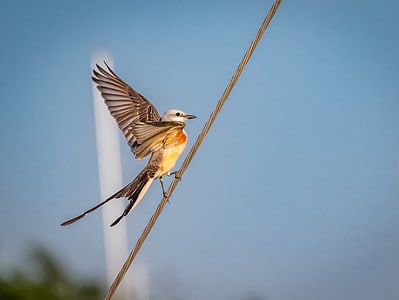
Scissor-tailed Flycatcher
Scissor-tailed flycatchers are known for their dramatically long tails!
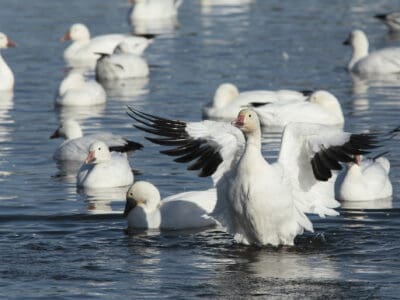
Snow Goose
The snow goose has a dark line along their beaks known as a ‘grinning patch’!

Animal by Letter Lists
- Animals that Start with A
- Animals that Start with B
- Animals that Start with C
- Animals that Start with D
- Animals that Start with E
- Animals that Start with F
- Animals that Start with G
- Animals that Start with H
- Animals that Start with I
- Animals that Start with J
- Animals that Start with K
- Animals that Start with L
- Animals that Start with M
- Animals that Start with N
- Animals that Start with O
- Animals that Start with P
- Animals that Start with Q
- Animals that Start with R
- Animals that Start with S
- Animals that Start with T
- Animals that Start with U
- Animals that Start with V
- Animals that Start with W
- Animals that Start with X
- Animals that Start with Y
- Animals that Start with Z
Thank you for reading! Have some feedback for us? Contact the AZ Animals editorial team.



